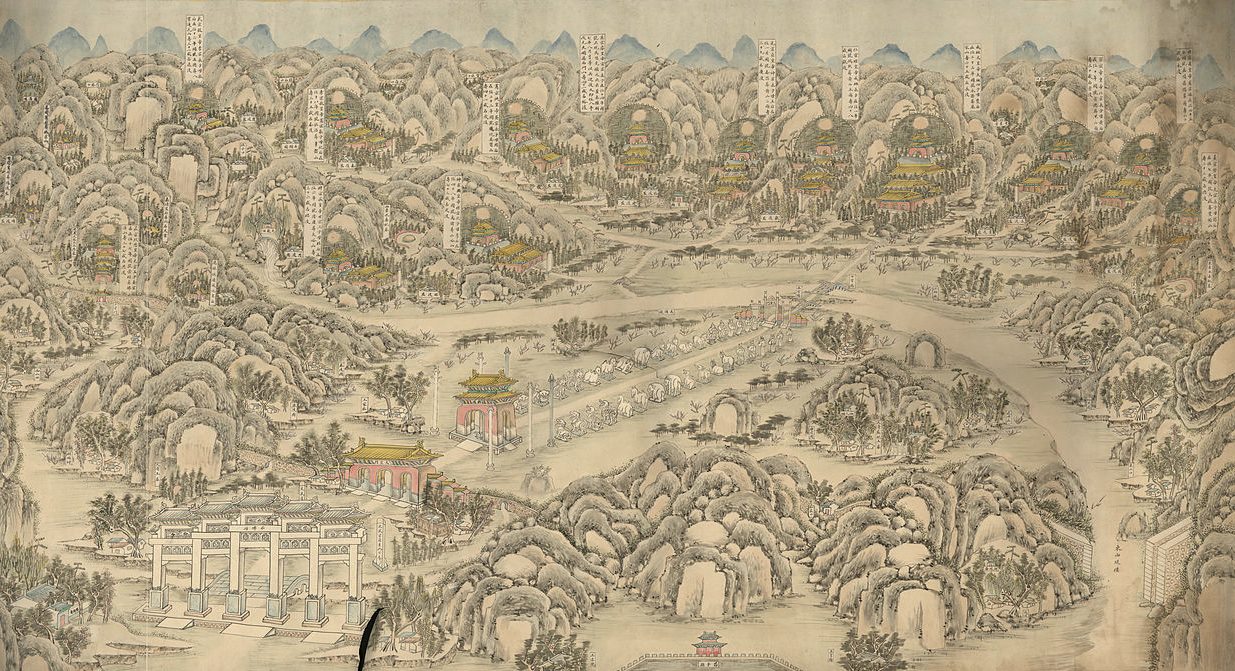CONTENTS
PART 1
I. Introduction
A. A Few Preliminary Points
B. Some Methodological Reflections
II. Historical Background
A. An Overview of Geomancy in Early China
B. Geomancy in Late Imperial China
Major Schools and Principles of Chinese Geomancy
Chinese Geomancy in Practice
Criticisms of Geomancy
PART 2
I. Fengshui in Premodern East Asia
A. Channels of Transnational Communication
B. Chinese-Style Geomancy and Its Variations
Some Common Denominators in East Asian Geomancy
Variations
Tokugawa Japan
The Ryukyu Kingdom
Chosŏn Korea
Late Lê and early Nguyễn dynasty Vietnam
II. Fengshui in the Modern Era
Historical Background
Geomancy in Contemporary East Asia
Geomancy Outside the Sinosphere (1): Overseas Chinese as a Case Study
Geomancy Outside the Sinosphere (2): The West and Beyond
III. Concluding Remarks
I. Introduction
A. A Few Preliminary Points
My focus in this article is on historical processes—in particular, the ways that texts, ideas, and cultural practices circulate within, and especially move beyond, local, regional and national boundaries. I have chosen to call this process “transnationalism”—even though it occurred well before the rise of “modern” nation states.[2] In the case of cultural practices, the basic process has usually involved transmission, assimilation (often requiring some sort of theoretical and/or practical justification), transformation and often recirculation.
One such practice—divination—has been virtually a human universal across vast expanses of both space and time.[3] And over the past century, two ancient and closely related Chinese ways of foretelling and/or influencing the future have become truly “global” in their reach: one is the use of the classic text known as the Yijing易經(often transliterated I Ching and usually translated Book of Changes); the other is geomancy or “siting,” commonly known by one or another transliteration of the Chinese term fengshui (lit. “wind and water;” aka feng shui, fung shui, etc.).[4]
I have discussed the globalization of the Yijing at length elsewhere.[5] This article provides what I hope will be a complementary case study of the way that fengshui theories and practices traveled from China to other parts of the world, and what happened to them in the process. My primary time frame is the period from about 1600 to about 1900 (with some attention to the “modern” era after 1900), and my specific regional focus is East Asia, also known in some circles as the Sinosphere (東亞文化圈) or the “cultural sphere of Chinese writing” (漢字文化圈).[6] It should be noted, however, that in the discussions that follow, I am using terms such as “China” and “Chinese,” “Korea” and “Korean,” “Japan” and “Japanese” and “Vietnam” and “Vietnamese” advisedly. In each case, the names of these countries and culture groups differed significantly over time, depending on one’s perspective. And, of course, borders fluctuated, sometimes dramatically, especially in Southeast Asia.[7]
Moreover, even within relatively stable political/cultural environments, significant regional and ethnic differences existed (think of “America” and “Americans” during this period). Nonetheless, in each case, at any given time, there were certain widely shared ideas, values, aesthetic standards, customs, institutions, laws, rituals, symbols, and even modes of communication—especially among the more literate sectors of these societies—that make it both possible and productive to generalize.[8]
B. Some Methodological Reflections
Lisa Raphals’ 2013 book Divination and Prediction in Early China and Ancient Greece provides us with an excellent comparative study of ancient mantic beliefs and practices, as well as a useful theoretical framework for understanding them. She writes:
Divination is a deliberate search for understanding of the hidden significance of events in the future, present, or past. [. . .] In some cases, it involves two parties: a diviner (with particular gifts, training, or even lack of training) and some kind of extra-human contact that makes divination possible. This may be a god, spirit, or ancestor, or (and there is argument about this point) a cosmic pattern without deliberative divine agency. The contact might be indirect, mediated by a system of signs requiring interpretation, for example when questions are put to signs present in nature, but perceptible only to those with appropriate gifts.[9]
She goes on to say:
As a mode of prediction, divination has typically been regarded as primitive superstition (religious or otherwise) or as a pseudoscience to be disparaged and debunked. That situation changed with the work of Bronislav Malinowski and Claude Lévi-Strauss, who in very different ways explored the rationality of magic and myth. A series of studies over the past two decades have focused on important sociological and epistemological dimensions of divination, both in antiquity and in the present. It emerges as a set of coherent technologies for predicting (and potentially controlling) the future, and as a set of social practices whose importance extended far beyond telling the future.[10]
In short, most scholars now see divination as a distinctive and significant hermeneutical process that deserves attention in its own right, not simply as an object of curiosity or suspicion.[11]
Of course, some societies seem to be more inclined to practice divination than others. Why? One common (Western) answer is their ignorance of modern (Western) science. Yet not all societies that lack a modern Western viewpoint esteem the mantic arts. In fact, two of the cultures of the world least interested in divination appear to be the traditional Australian Aborigines and the American Plains Indians.[12] On the other hand, in the twentieth and twenty-first century West, where science seems to be something of a god (except during the Trump era in America), divination and magical practices are surprisingly prevalent. A 1988 Gallup poll, based on a representative national cross-section of 506 American teenagers from 13–17 years old, revealed that fifty-eight percent believed in astrology—up from fifty-five percent in 1984 and forty percent in 1978. Another Gallup poll in 2005, indicated that 25 percent of American adults believed in astrology. Nicholas Campion’s Astrology and Popular Religion in the Modern West: Prophecy, Cosmology and the New Age Movement (Routledge, 2016) documents how difficult it is to acquire reliable figures about personal beliefs of this sort, but his general conclusion is that “opinion poll data dramatically underestimates interest in astrology,” and that the penetration of astrology into American popular culture “is much broader than previous figures suggest.”[13]
One plausible reason for a persistent interest in divination—not only in the modern West but also throughout the modern world—is that regardless of how powerful science may be as an explanatory tool, it is not very emotionally satisfying, especially as a replacement for the mantic arts. By design it is impersonal and abstract, and it does not seek to express itself in culturally distinctive ways. Its aesthetic appeal rests in the elegance of its equations rather than the color of its symbols or the richness of its metaphors. Furthermore, science has not answered, and will probably never answer, certain fundamental human questions: Does God or some other form of supernatural intelligence exist? Is there a purpose or meaning to our lives? How should we behave as human beings? What is the life well-lived? Such questions are the province of philosophers and theologians, not scientists.
After hundreds of years of dramatic discoveries and a good deal of plodding progress, “science” has not brought us closer to an understanding of our metaphysical place, much less our purpose, in the cosmos. We know an extraordinary amount about the composition and mechanics of the world around us, but we still cannot say with certainty whether the events in it are ultimately the result of “spiritual” forces, impersonal “laws of nature,” or random causes. A meteorologist may be able to predict the general conditions under which lightning will strike; and, with enough data, a physicist might even foretell exactly where it will hit and with what impact; but neither of them can tell us whether God planned it that way. Persons directly affected by the forces of nature (or, for that matter, the actions of other human beings) are left wondering: “Why did this happen to me?” or “Could I have prevented this from happening?”
Such questions may help to explain the persistent appeal of fortune-tellers in virtually all societies, past and present. Although modern “scientific” forms of prediction, including probability theory, have eliminated or at least reduced certain kinds of anxiety about the future, much of what human beings experience in their daily lives still defies scientific explanation. For this reason, people continue to look to alternative sources of understanding, which are often based on spiritual “faith” as opposed to scientific “reason.”
Why, we might then ask, are some divinatory ideas and practices more popular than others, and why do some of them travel more readily than others? It is not difficult to see why astrology is such a common form of divination. From time immemorial the sun, the moon and the stars, which appear and act the same everywhere on earth, have exerted an enormous influence on the human imagination. Topographical forms, however, vary widely, as do human faces, making geomancy and physiognomy somewhat less universal. And, of course, religious traditions and other distinctive cultural characteristics and preoccupations obviously shape particular divinatory systems and practices—hence such different mantic techniques as casting lots, spinning coconuts, consulting sacred texts, reading almanacs, gazing into crystal balls, listening to shells, watching spiders, reflecting on dreams, charting the stars, interpreting entrails and analyzing footprints in ashes.
The question of why some divinatory practices travel more easily than others must surely be related to factors such as physical and/or cultural distance. It is not surprising, for example, that the major premodern states of East Asia (China, Japan, Korea and Vietnam) borrowed freely from one another, because for hundreds if not thousands of years they shared the same basic written language—classical or literary Chinese (wenyan wen 文言文; also known as the “literary Sinitic”).[14] Similarly, linguistic common denominators facilitated the spread of ideas in medieval and early modern Europe through the shared medium of Latin. Or, to use a more recent example, the way that English became a lingua franca not only in England, Scotland, Ireland, Wales, Canada, Australia, the United States, but also India, at least a dozen African states, and several countries in the Caribbean as well.
But the use of a common language is only one variable in the global transmission of texts and traditions. Translation is always an option, but there are problems whenever documents migrate to cultures that are far removed from the linguistic environment that first produced them. The further the cultural distance, the greater the challenge. We all know proverbially that “translators are traitors,” but there are different forms of literary treason, and different motives that lie behind them. As I have discussed elsewhere, even academic translations of Asian texts have often involved personal rivalries and ruthless competition.[15] Moreover, it seems evident that the more technical and/or esoteric the original text, the more likely translators are willing to resort to one of two extremes—either excruciating literalness or distortions in the interest of “popularization.”
Even Richard Wilhelm, whose translation of the Yijing易經(Classic of Changes) has been a standard fixture of European and American scholarship on the Changes for several decades and still has remarkable staying power, was not above tailoring his book to the interests and backgrounds of his Western audience (first German, then English, then several other Western languages). Thus, for example, he called on the authority of classical German philosophers and literary figures like Kant and Goethe as well as the Bible to illustrate “parallel” ideas expressed in the Changes. He also tried to “demystify” the Yijing by providing elaborate commentaries that paraphrased and explained away the “spiritual” material that he felt might “confuse the European reader too much with the unusual.” Moreover, he argued that the Yijing reflected “some common foundations of humankind,” which all cultures were based upon, albeit “unconsciously and unrecognizedly.” Wilhelm genuinely believed, in other words, that “East and West belong inseparably together and join hands in mutual completion.”[16]
In any case, interpretive communities in environments where texts travel and cultural practices are transmitted are not simply empty vessels waiting to be filled. Isabel Hofmeyr’s book, The Portable Bunyan (2004), which discusses the transmissions, translations and transmutations of The Pilgrim’s Progress in Europe, India and especially Africa, provides an outstanding example of the creative ways that indigenous populations domesticated Bunyan’s text, illuminating important issues of colonialism and social class in the bargain. At the same time, Hofmyer’s book underscores the contradictions and unintended consequences that attended the multilayered and multivalent process of translation (The Pilgrim’s Progress has been rendered into some two hundred languages worldwide).[17]
Similar processes have marked the global spread of Asian practices such as Traditional Chinese Medicine (TCM)[18] and astrology, as well as philosophical systems of all sorts—Buddhist, Daoist, Confucian, Hindu, etc. A great number of Asian-language texts have been translated into a variety of Western (and other) languages, and all have been transformed in the process. There is now a substantial academic literature on how this happened. Some representative works in English include: Eric Sharpe’s The Universal Gita: Western Images of the Bhagavadgita (1985); Stephen Batchelor’s The Awakening of the West: The Encounter of Buddhism and Western Culture (1994), Robert Neville’s Boston Confucianism: Portable Tradition in the Late-Modern World (2000); J. J. Clark’s The Tao of the West: Western Transformations of Taoist Thought (2000); James Coleman’s The New Buddhism: The Western Transformation of an Ancient Tradition (2001); and Norman Girardot’s The Victorian Translation of China: James Legge’s Oriental Pilgrimage (2002).
There are also a great number of comparative works that have examined the globalization of Asian and other texts from various analytical perspectives. For a few of the many, see: David Damrosh’s What Is World Literature? (2003); Mark Juergensmeyer’s Global Religions (2003), Jeffrey Kripal’s The Serpent’s Gift: Gnostic Reflections on the Study of Religion (2007); Mark Juergensmeyer’s The Oxford Handbook of Global Religions (2005), Jeffrey Kripal’s Comparing Religions (2014), and Longxi Zhang’s From Comparison to World Literature (2015). We also now have at least a few transnationally oriented journals such as the Journal of Global Buddhism (http://www.globalbuddhism.org/) and the journal in which this article appears, Transnational Asia: An Online Interdisciplinary Journal (http://transnationalasia.rice.edu/). I might add that, not surprisingly, there are a great number of published works and websites in various Western languages on Asian practices such as yoga, medicine and martial arts—all of which attest to their global spread and wide appeal.
Another variable in the transmission and transformation of Asian texts, beliefs and practices is the simple fact of “fashion”—both popular and intellectual. During the latter part of the nineteenth century, for example, there was a “scholarly vogue in European culture . . . concerned with the uncovering, and the rational and historical explanation, of all manner of apparent Oriental mysteries,” including not only Buddhism and Daoism, but also various forms of spiritualism— notably Theosophy, an eclectic, Asian-oriented belief system focused on self-realization and “oneness with the Divine.”[19] Similarly, the turbulent 1960s witnessed a great enthusiasm for Asian ideas as part of a powerful “countercultural” movement in Europe and the Americas. More recently, we have the so-called New Age Movement, which seems to have grown out of 1960s counter-culture in Europe and the United States, but displays an even wider variety of spiritual and philosophical orientations.[20]
Finally, we should remember that as people, ideas, texts, products and institutions travel, whether within or beyond “national” borders, there are often significant variations in the specific ways that they are transmitted, received and employed across both time and space. Historical conditions obviously affect both the transmission and reception of new ideas and cultural practices. For example, after the “barbarian” Manchus conquered China in 1644, many East Asian elites felt that the “Middle Kingdom” had lost its cultural primacy, although by the Qianlong era (1736–95) this perception had changed somewhat, with predictable consequences for cultural borrowing.[21] And even within a given country, theories and practices may differ significantly from place to place and time to time. A recent Ph.D. dissertation by Tristan G. Brown, which he has kindly shared with me, shows masterfully how geomantic practices in nineteenth and twentieth century China reflected local conditions and traditions, and how “classic” geomantic texts were often supplemented with locally produced handbooks.[22] This process of assimilation and transformation, as we shall see, has been taking place throughout the Sinosphere and beyond, not only in the years under consideration, but also before and to this day.
II. Historical Background
A. An Overview of Geomancy in Early China
Geomancy took many forms and went by a variety of names in premodern China. Some of the most common terms for the practice were dili (地理), dixue (地學), budi (卜地), kanyu (堪輿), yinyang jia yan (陰陽家言), zhanzhai (占宅), xiangzhai (相宅), xingjia yan (形家言), zedi (擇地) and fengshui (風水). The best-known modern term in Chinese is, of course, fengshui (lit. “wind and water”), which I will generally use in this article, along with geomancy, for the sake of simplicity.[23] Regardless of the designation employed, all Chinese siting techniques were based on the principle of harmonizing dwellings for both the living and the dead with the immediate physical environment, as well as the larger cosmic scheme. Such attunement, most Chinese believed, brought good fortune to everyone concerned. Thus, geomancy came to be viewed not only as divination in the sense of “supernatural knowing,” but also as a kind of magic—that is, the manipulation of cosmic forces to influence future events.
A concern with determining auspicious sites for residence and burial by means of divination is as old as Chinese civilization itself.[24] Neolithic sites reveal these concerns, as do oracle bone and/or bronze inscriptions dating from the Shang dynasty (c. 1600 BCE–c. 1045 BCE).[25] During the Zhou dynasty (c. 1045 BCE–256 BCE), the Qin (221–206 BCE) and the Han (206 BCE–220 CE), a wide variety of divination techniques and systems developed in China, some of which—like almanacs, horoscopes and the choice of auspicious times for various human activities, from marriages to burials—were relatively personal and/or localized. Others, however, applied to large expanses of space and affected large numbers of people. One such system, which proved to be as important and enduring as the more localized forms of fengshui, was known as fenye 分野(lit. field allocation). It was predicated on the widespread astrological assumption that changes detected in various divisions of the heavens portended changes that could be predicted in analogous places on earth.[26] [Figure 1]
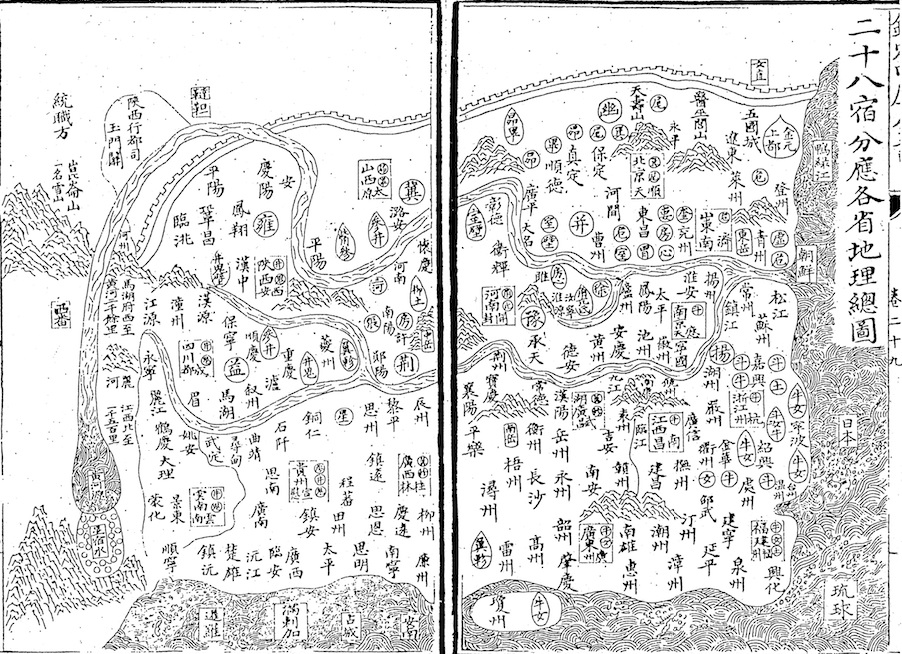
Figure 1: A fenye map of China. Source: Zhang Huang 章潢 (1527–1608) Tushu bian 圖書編 (Compilation of illustrations and books; 1613)
Most of these Zhou, Qin and Han mantic techniques came to be associated in one way or another with the Yijing易經(Classic of changes). As I have discussed at length elsewhere, by the late Zhou period, the Changes had become one of the most esteemed philosophical texts in Chinese intellectual life, as well as an efficacious mantic instrument. In the early Han dynasty, it was designated a “classic” (jing 經), and from that point onward it had enormous scriptural and divinatory authority.[27] Indeed, as we shall see, its symbolic repertoire—especially the eight three-lined figures known as trigrams (gua 卦) [Figure 2] and the sixty-four six-lined figures known as hexagrams (also gua 卦) [Figure 3]—became increasingly important in what became known generally as the “computational arts” (shushu 術數).[28]

Figure 2: The eight trigrams: Some early identifications. Source: Author’s illustration
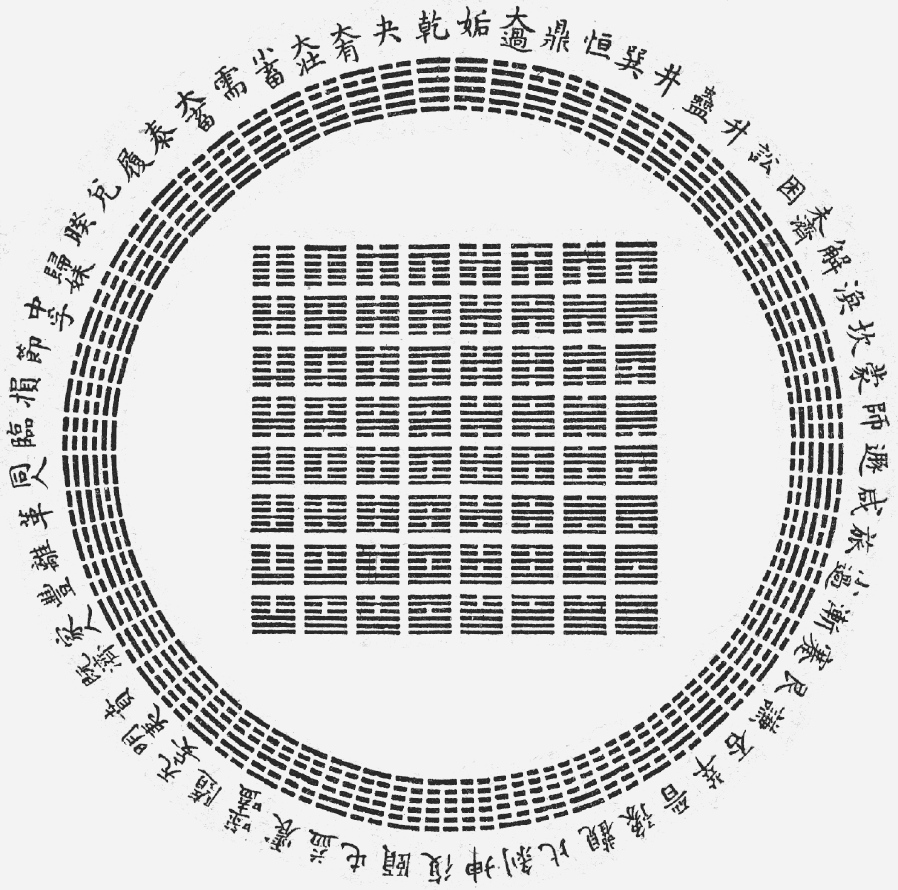
Figure 3: The sixty-four hexagrams in the Former Heaven order. Source: Zhang Huang, Tushu bian
According to the theory of the Changes as it developed during the late Zhou period, the sixty-four hexagrams represented all of the fundamental situations one might encounter at any given moment in one’s life. It followed, then, that by selecting a particular hexagram or hexagrams at a given moment, and by correctly interpreting the symbolic elements involved (including trigrams and individual lines), a person could devise a strategy for dealing with issues pertaining to the present and the future. Everything depended on the correct interpretation of these symbolic elements, generally described as “images” (xiang 象; also translated as figures, symbols, models, configurations, counterparts, simulacrums, etc.), which represented and expressed the cosmic powers and changing circumstances of the entire universe.[29] Fenye was just one of many ways to express this cosmically ordained relationship between Heaven, Earth and Man.
Other spatial and temporal symbols of the late Zhou, Qin, and Han dynasties came to be linked with the Changes and other divinatory systems as well, including geomancy. Among the most prominent and persistent of these were the sexegenary characters known as the ten “heavenly stems” (tiangan 天干) and twelve “earthly branches” (dizhi 地支). These characters, which dated from the early Shang period, marked cycles of sixty by means of sequential combinations, and they continued to mark time in all subsequent dynasties. They can still be seen today in Chinese-style almanacs and divination manuals of all sorts.[30] Additional symbolic variables that came to be attached to the Changes and to many other mantic systems during the late Zhou, Qin and Han periods were the so-called “five agents” 五行(wuxing; also translated five activities, five phases, five elements, five qualities, etc.), which were manifest in qi 氣 (variously translated as life breath, ether, energy, pneuma, vital essence, material force, primordial substance, psychophysical stuff, etc.). The wuxing, representing cosmic powers and phases of change, were correlated with various colors, directions, flavors, musical notes, senses, grains, sacrifices, punishments and even moral qualities. Qi was viewed not only as the “stuff” of which all phenomena were constituted (in various combinations of the wuxing), but also the energy that made things happen in stuff.[31] [Figure 4]
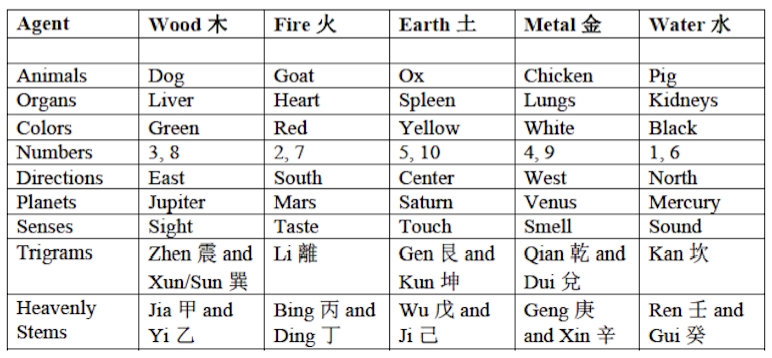
Figure 4: Wuxing correlations Source: Author’s illustration
One other set of variables requires mention here: the ubiquitous notions of yin 陰and yang 陽. These dualistic concepts, which arose as analytical concepts in the late Zhou period, came to be viewed in three distinct but related ways: (1) as cosmic forces that produced and animated all natural phenomena (including the wuxing and qi); (2) as terms used to identify phases of change—in particular, recurrent, cyclical patterns of rise and decline, waxing and waning; and (3) as comparative categories, describing dualistic relationships that were inherently unequal but almost invariably complementary.[32] [Figure 5]
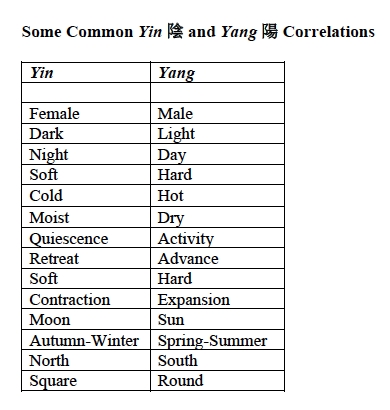
Figure 5: Some common yinyang correlations. Source: Author’s illustration
Like many other branches of cosmologically grounded knowledge in premodern China, including traditional Chinese medicine, fengshui was concerned with establishing, maintaining or restoring a harmonious yinyang equilibrium in the midst of constant change. A given location, like the human body, represented a microcosm of the universe, which naturally required a balance of cosmic energy (qi 氣) for proper functioning. Any disruption in a geomantic system brought the functional equivalent of illness in human affairs; that is misfortune. As specialists in siting, geomancers, often known as fengshui masters (fengshui xiansheng 風水先生) were, in effect, “doctors of the earth.” They often employed medical metaphors to explain their ideas, and in fact, a great many also specialized in traditional Chinese medicine.[33]
Although there is abundant evidence to show that a variety of geomantic theories and practices developed in the late Zhou, Qin and Han periods,[34] geomancy came into its own during the Six Dynasties era, thanks to a pair of well-known diviners: Guan Lu 管輅 (210–256) and Guo Pu 郭璞 (276–324). Guan Lu was celebrated not only for his skill as a fengshui specialist, but also for his influential theories of “fate extrapolation” (tuiming 推命; aka “emolument fate,” luming 祿命). Guo Pu, for his part, was not only a famous classical scholar, but the putative author of an extraordinarily important geomantic text known as the Zangshu 葬書 (Book of burials).[35] [Figure 6] A distinctive feature of Chinese geomancy from the Six Dynasties period onward was its close connection to other forms of divination, including various types of horoscopic prediction and “day-selection” (see below).
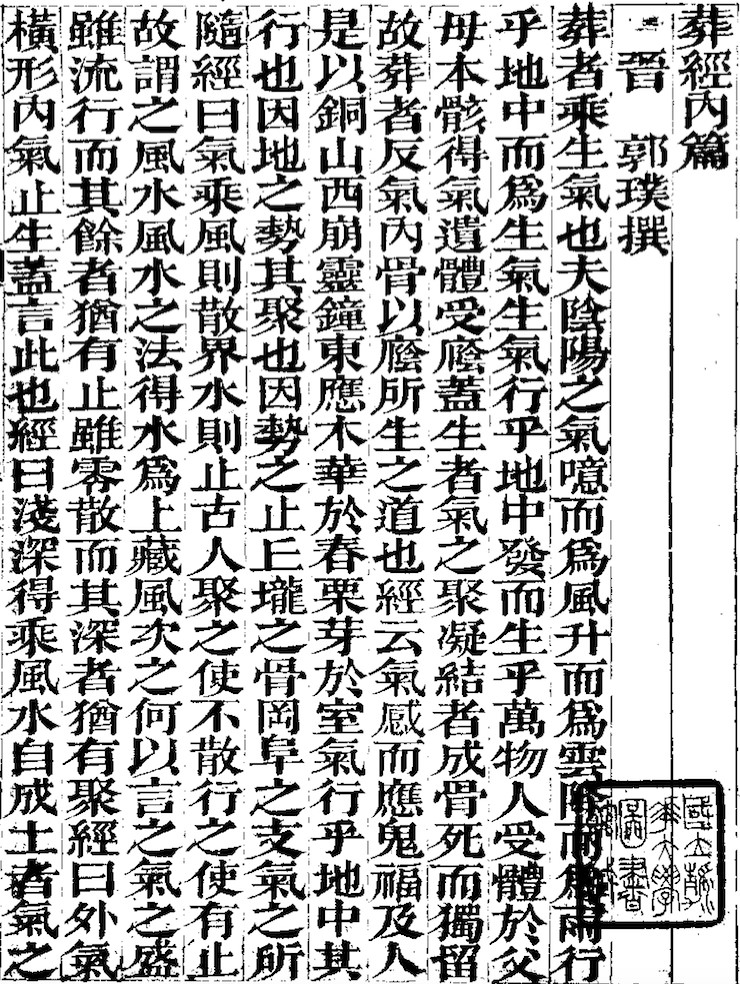
Figure 6: The first page of Guo Pu’s Zangshu (1877), emphasizing the concept of qi and the importance of “storing the wind” (cangfeng 藏風) and “accumulating water” (deshui 得水). Source: ctext.org
Later practitioners of geomancy and fate calculation in China included individuals such as Xiao Ji 蕭吉 (d. c. 610), whose book, Wuxing dayi 五行大義 (The great meaning of the five agents), attempts to show how the activities of the heavens (such as thunder, wind and rain) and groupings of heavenly bodies (such as the twenty-eight divisions of the sky known as “lodges,” xiu 宿), reflect celestial images and numbers (xiangshu 象數); how terrestrial configurations (such as mountains and rivers) and geographical groupings (the three rivers, four seas, five lakes, nine continents, etc.) exemplify earthly images and numbers; and how human activities (such as ritual and music) as well as groupings of people and values (the hundred officials, the four teachings, the seven virtues, etc.) illustrate the images and numbers of human beings. By understanding such relationships, Xiao asserts, the workings of the wuxing can be fathomed.[36] [Figures 7a–b; see also Figure 1 above]
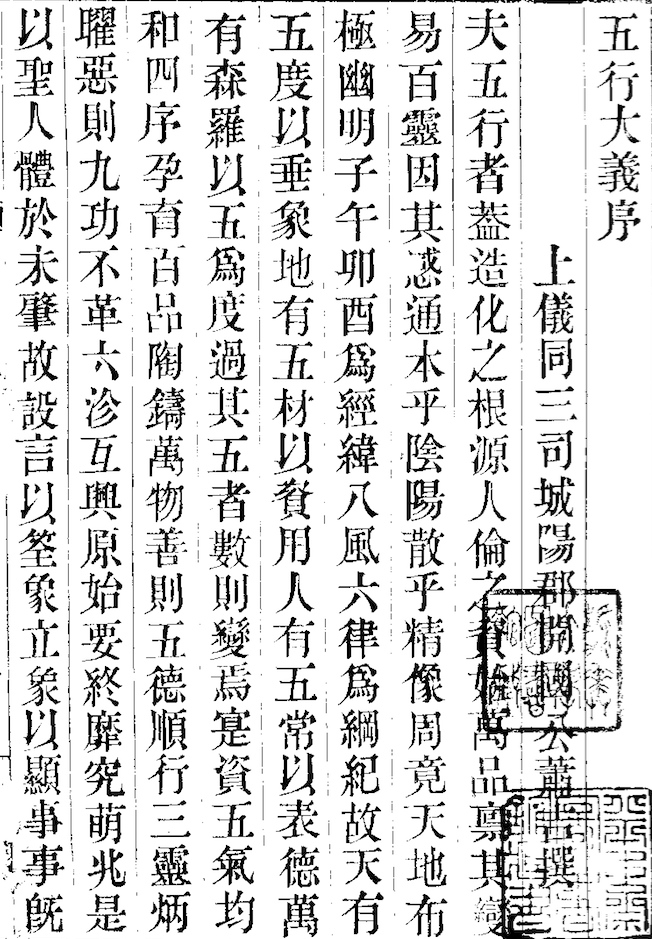
Figure 7a: The preface to Xiao Ji, Wuxing dayi (n.d.), reflecting the correlative emphasis of the book. Source: ctext.org
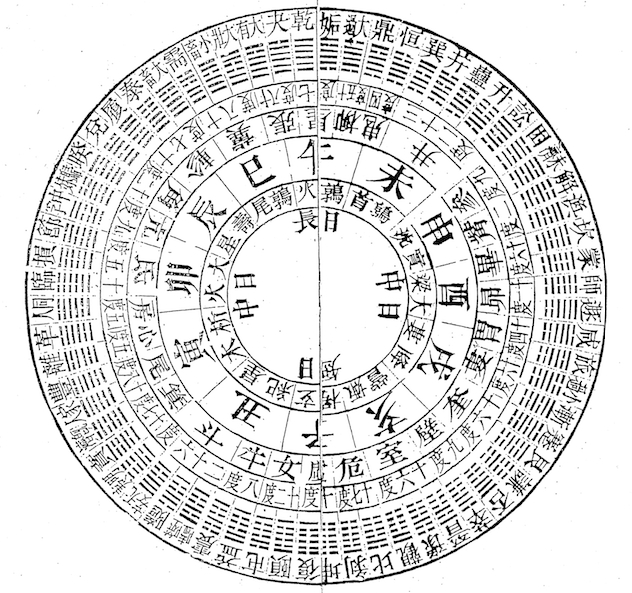
Figure 7b: A chart showing correlations between trigrams, stems, lodges, hexagrams and other cosmic operators. Source: Author’s personal collection
Another prominent mantic specialist from the medieval era was Yang Yunsong 楊筠松(834–906), a Tang dynasty (618–907) official who is often credited with authoring or editing several highly influential geomantic works, including the Hanlong jing 撼龍經(Shaking dragon classic) and the Qingnang aoyu 青囊奧語(Profound words of the blue-green bag). Although these and other writings attributed to him focused primarily on auspicious local sites for the living and especially the dead, Yang—like Xiao Ji and others, including a famous Buddhist priest named Yixing 一行(683–727)—had a larger view, a conception of the world as one gigantic geomantic body. In Yang’s words:
The Kunlun Mountains [崑崙山] are the bones of Heaven and Earth, and amidst everything they are the chief entity within Heaven and Earth, as is the human spine [in human beings]. They give birth to the loftiness of the four limbs of a dragon. The four limbs separate into the four worlds; south, north, east and west are the four tributaries. In the northwest, the Kongtong Mountains [崆峒山] have several tens of thousands of entities. The east enters the Three Han and is blocked by dark obscurity. Only the southern dragon enters the Middle Kingdom. [ . . . ] By splitting the branches and opening the veins there are departures in all directions. The qi and the blood meet where the water stops. The great are the capital cities in the provinces of kings and emperors. The small are the prefectures and counties of nobles and gentlemen. Next are the prescriptions for small townships. Moreover, there is wealth and good fortune at the center of residences.[37]
As we shall see, this conception of landscapes animated by “dragon veins” (longmai 龍脈) proved to be a powerful and enduring one, not only in China but throughout all of East Asia as well.
Inventions such as printing, gunpowder and the compass during the Sui (589–618) and Tang periods, together with the dramatic social and economic changes that followed in the wake of the Rebellion of An Lushan (755–763), paved the way for a fundamental transformation of Chinese society in the Song dynasty (960–1279) and thereafter. One of the most important of these changes was the rapid and widespread dissemination of information that came with the expansion of printing in the Song period. Contemporary Chinese scholars such as Liao Xianhui 廖咸惠 and Liu Xiangguang 劉祥光have written extensively about the relationship between printing and divination in the Song period—in particular the remarkable sharing of mantic beliefs and practices among elites and commoners.[38]
Much of the interest in divination during Song times period arose as a result of chronic uncertainty and insecurity—uneasiness about social and economic changes, competition within the civil service examination system, foreign aggression and so forth. And it was the rapid spread of printing that encouraged the circulation of all sorts of “practical” books—including almanacs (日書, 黃曆, 曆書, etc.) and works on divination that gave readers a measure of psychological security in uncertain times. It also gave them a sense of personal agency, particularly in matters of vital concern such as travel, education, assumption of office, marriage and other domestic rituals—especially proper burial for one’s family members.[39] [Figure 8]
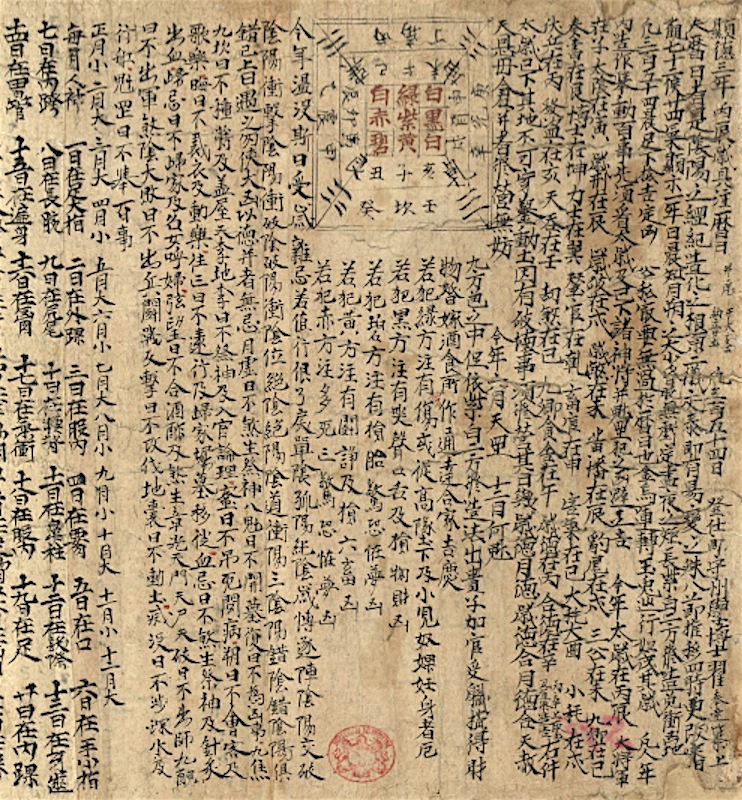
Figure 8: Page from a Dunhuang almanac dating from the Song period. Source: British Library, Oriental manuscripts 8210/s.95
Song scholars, including such luminaries as Shao Yong 邵雍 (1012–77), Sima Guang 司馬光(1019–86), Cheng Yi 程頤(1033–1107), Zhu Xi 朱熹(1130–1200) and Wen Tianxiang 文天祥 (1236–83), perceived a clear link between the realms of Heaven, Earth and Man, but they had ambivalent feelings about mantic techniques such as geomancy. On the one hand, they understood the need to find appropriate locations for buildings and graves, following the Confucian admonition in the Xiaojing 孝經 (Classic of filial piety), often cited by proponents of fengshui, that states: “[The filial son] determines the burial place [of his parents] by divination and puts them to rest” (bu qi zhaizhao er ancuo zhi卜其宅兆而安措之). On the other hand, such scholars deplored the profit motive of professional geomancers as well as certain practices that led to delayed burials, family competition and lawsuits.[40] Geomancy in the minds of these scholars was basically fine in theory but not always in practice.
While Song scholars such as Shao, Sima, Cheng, Zhu and Wen contemplated patterns of cosmic change with the help of the Yijing, more professionally oriented geomancers investigated the complex relationship between Heaven, Earth and Man with the aid of a new device, the compass (luopan 羅盤, luojing 羅經, etc.). This south-pointing invention, derived in part from Han dynasty astrolabes (shi 式), and designed explicitly for geomantic purposes, revealed celestial and terrestrial correlations by means of a series of concentric circles marked with standard symbols of time and space, including the eight trigrams, the ten “heavenly stems” and twelve “earthly branches,” the divisions of the heavens known as the twenty-eight “lodges,” and so forth. Over time, as we shall see, the geomancer’s compass became increasingly sophisticated, with dozens of concentric rings and symbolic variables that applied to several different divination systems (see next section).[41]
One more Tang-Song development deserves at least brief mention here. During this period of dynamic change, Chinese mapmaking attained a new level of sophistication, with the result that local, regional and empire-wide maps began to appear in printed atlases, spreading geographical knowledge of all sorts.[42] This knowledge included information supplied by maps that depicted fengshui and fenye correlations affecting the entire realm. One such cartographic production, titled Zhongguo san da ganlong zonglan zhi tu 中國三大幹龍總覽之圖(A general map of the three great “stem dragons” of China), shows the Chinese empire divided by the Yellow River and the Yangzi River into three main sections, each with its respective mountain ranges and its own geomantic energy.[43] This map, or some version of it, was reprinted in many subsequent fengshui manuals, not only in China, but in other parts of East Asia as well.[44] [Figure 9]
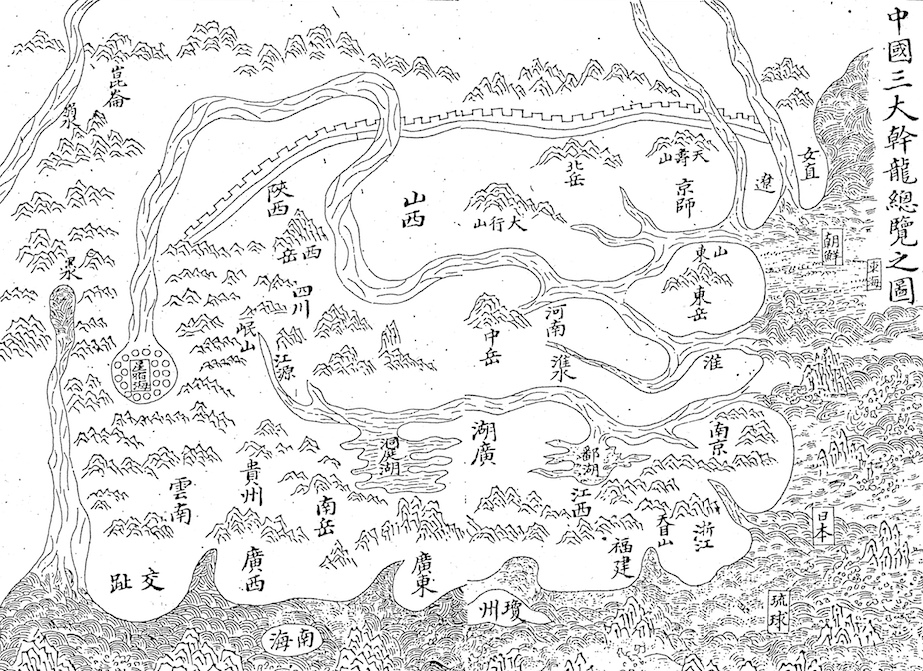
Figure 9: Tripartite fengshui map of China. Source: Zhang Huang, Tushu bian
B. Geomancy in Late Imperial China
During the late imperial era in China—that is, the Yuan (1279–1368), Ming (1368–1644) and Qing (1636–1912) dynasties—geomancy became ever more complex and ever more widely practiced, whether focused on macro-regions, individual gravesites, lineage gravesites, or, less likely, “charitable” gravesites.[45] Let us focus here on the Qing period, which represents the fullest development of traditional Chinese fengshui theories and practices, and a time when geomancy proved extremely appealing to the Japanese, Koreans and Vietnamese (see below).[46] It is also an era that is a particularly well-documented, with an abundance of both Chinese and Western records. As one notable example from the Chinese side, Yuan Shushan’s 袁樹珊massive compendium, Zhongguo lidai buren zhuan 中國歷代卜人傳(Biographies of diviners in China by dynastic periods; BRZ ) identifies nearly 500 individuals acquainted with geomancy for the Qing dynasty alone. Qing encyclopedias—from the massive Gujin tushu jicheng 欽定古今圖書集成 (Complete collection of illustrations and writings, past and present; 1726) to widely circulated encyclopedias of daily use (日用類書), such as the Wanbao quanshu 萬寶全書 (Complete collection of myriad treasures)—attest to an abiding interest in fengshui.[47] The Qing was also, however, a period when—according to at least one Chinese authority, Li Dingxin 李定信— geomancy became “popularized/vulgarized” (jianghu hua 江湖化), as specialists in siting, enjoying ever greater access to a wide variety of fengshui manuals, and availing of the growing commercialization of Chinese society, sought personal profit and ignored what Li considers to be the more “objective” works of Han and Tang provenance.[48]
As indicated previously, fengshui specialists in Qing times were often viewed as “doctors of the earth.” Before any significant building project took place, geomancers determined the proper time and place for the construction, in order to assure maximum benefit to the parties concerned. If necessary, they prescribed “treatment” for an area, such as the erection of a pagoda, or the razing of a poorly located structure. Quite often their clients sought second opinions. But whereas the influence of medical doctors was confined primarily to individuals, the pronouncements of geomancers could affect families, clans, villages, towns and even cities. As a result, fengshui specialists often found themselves in the midst of social controversies (see below).
Major Schools and Principles of Chinese Geomancy
Although Chinese fengshui had to do with all sorts of structures and spaces related to both the living and the dead, its primary focus was on the deceased. Specialists in “tomb divination” (xiangmu 相墓, zhanzhong 占塚, zhanmu 占墓, etc.) were therefore ubiquitous in late imperial China. Classical sanction for a concern with the proper place and time for burials could be found in such hallowed sources such as the Spring and Autumn Annals (Chunqiu 春秋), the Record of Ritual (Liji 禮記), Zhou Rituals (Zhouli 周禮) and the Xiaojing 孝經 (Classic of Filial Piety). But, as critics of geomancy repeatedly pointed out, for a thousand years or more, gravesites in China were often chosen to bring benefits to survivors rather than comfort to the departed. In the straightforward words of the Huangdi zhaijing 皇帝宅經 (The Yellow Emperor’s siting classic), “If a site is proper (an 安; lit., peaceful), a family will have generations of good fortune; if not, then the family will decline.”[49] And despite relentless condemnation by certain scholars and discouragement by the state (see below), geomancy flourished throughout the Chinese empire—particularly in the southeastern provinces of Jiangsu, Zhejiang, Jiangxi, Fujian, and Guangdong. Contrary to received wisdom, members of the scholarly elite in these areas were often among the most enthusiastic supporters of the practice.[50]
According to Chinese geomantic theory, the qi of an area, like that of the human body, might be either “alive” (shengqi 生氣) or “dead” (siqi 死氣). These terms, which can also be found in Chinese medical texts, refer to qualitatively different functions, not different stuff: “[Shengqi refers to] the quality of energy during the yang hours of the rising sun (midnight to noon). It has a quickening and invigorating influence on active enterprises. [. . .] [Siqi refers to] the quality of the energy during the yin hours of the sinking sun (noon to midnight), which has a dampening influence on the activity and liveliness.”[51] Since the object of fengshui calculations was to concentrate as much vital qi into one location as possible, this meant taking into account, and taking advantage of, virtually every relevant temporal and spatial variables known to traditional Chinese cosmology.[52] In geomancy, as in most other forms of divination, time and space were inseparable.
By late imperial times there were two main schools of Chinese fengshui, each tracing its lineage to the renowned third and fourth century scholar-diviner Guo Pu. One, known generally as the Fujian School, was identified with the theory of “directions and positions” (fangwei lun 方位論), also known as the theory of “principles and energy” (liqi lun 理氣論). The other, widely designated the Jiangxi School, was generally identified with the theory of “forms and configurations” (xingshi 形勢論). In a review of the Zangshu 葬書(Book of burials; aka Zangjing, Burial classic, 葬經), traditionally ascribed to Guo, the editors of the Siku quanshu 四庫全書 (Complete collection of the Four Treasuries) cite a Ming scholar’s discussion of these two basic approaches:
[The theory of directions and positions] is based on heavenly bodies, trigrams, and the principle of non-opposition, by which a yang hill faces in a yang direction and a yin hill faces in a yin direction. It places sole reliance on the eight trigrams and the five planets in determining the cycles of production and conquest [of the five agents]. The doctrines of this school are still transmitted in Zhejiang, but those who use them are very rare. The other approach [the theory of forms and configurations] is called the Jiangxi method. It commenced with Yang Yunsong 楊筠松 [834–906]. [. . .] The sole concern [of the proponents of this school] is with the mutual pairing of dragons [龍], lairs [xue穴], topographical forms that envelop the gravesite [sha 砂], and water, and they stubbornly refuse to discuss anything else. These days, everyone south of the Yangzi River follows [this school].”[53]
The Qing scholar-practitioner Ding Ruipu 丁芮樸made a similar distinction in his Fengshui quhuo 風水袪惑 (Dispelling confusion about geomancy). “The art of fengshui,” he wrote, “is encompassed by the forms and configurations school and the directions and positions school. Today we refer to the former as the mountain peaks-vital embodiment school [luanti 巒體; also luantou 巒頭], and the latter as the pattern-energy school [liqi lun 理氣論].”[54] Another scholar-practitioner, Zhu Chou 祝疇, in a book titled Zaoming qieyao 造命挈要 (An aid to creating [good] fate), made a similar distinction between fengshui specialists who emphasized the cosmic patterns and principles that determined forms and configurations and those who emphasized their actual manifestations in material force.[55] Over time, all sorts of sub-schools developed, including the well-known Eight Halls Bright Mirror (Bazhai mingjing八宅明鏡) School, also known as the Nine-Star Auspice (Jiuxing mingli 九星命理) School.[56] This approach to fengshui placed primary emphasis on Yijing-style trigram configurations, and was extremely popular in the Qing period.[57]
At times, fengshui specialists aggressively defended their geomantic turf. Shen Hao 沈鎬, for example, denounced the Fujian School of Directions and Positions for deluding people with its empty talk of heavenly bodies, trigrams, hexagrams and the esoteric charts known as the Hetu 河圖and Luoshu 洛書 (see below). In his view, devotees of the Fujian School were lazy, impatient, and misguided. “Those struck by the poison,” he tells us, “are like smoke dissipated and fire extinguished, and never have a chance to reason out the source of their misfortunes [. . .] I grieve that the gentry will not interest themselves in [geomantic] lore, but put their trust in rustic masters and so imperil their parents and prepare disaster for their posterity.”[58] But from the standpoint of the Fujian School, only an appreciation of cosmology could bring true understanding of how best to harmonize a site with the rhythms and patterns of nature. Using the language of the Yijing, cosmologically inclined geomancers stressed that earthly forms reflected the completion of heavenly images. Or, in a more popular formulation: “The stars of the Heavens above and the configurations of the Earth below mutually correspond [xiangying 相應].”[59]
Of course lines drawn sharply in theory tended to blur in practice, even among sub-sects, and exponents of geomancy drew freely upon the vocabulary and techniques of both major schools in a characteristic display of Chinese eclecticism.[60] By the nineteenth century, and no doubt well before, the schools had become “so fused together that no good expert in either . . . [neglected] to practice the methods of the other.”[61] Like modern stockbrokers and economic forecasters in the contemporary world—who, in the face of a myriad of complex variables, make predictions based on commonly held economic theories as well as intuition and “instinct”—geomancers shared certain fundamental theoretical principles but differed in both emphasis and approach.[62]
The Fujian School relied heavily on a previously mentioned device conventionally known as a “compass” (luopan 羅盤or luojing 羅經) for determining the proper site and time for matters relating to construction and burial, including the positioning of the coffin. This device, which will be described in greater detail immediately below, had a magnetized needle, the red tip of which pointed south, and a series of concentric rings or layers (ceng 層) that contained the major Chinese symbols used to deal with space, time and cosmic change: yin and yang; the four seasons and cardinal directions; the five “agents;” the eight trigrams, the nine moving “stars” (jiuxing 九星; also designated “star-spirits”), various “palaces” (gong 宮), the ten stems and twelve branches, the twenty-four directions, the twenty-eight lodges, the sixty-four hexagrams, and so forth.[63] [Figures 10a–c] Particularly important to fengshui calculations were the numerical and other correlative schemes associated with the Hetu 河圖(Yellow River Chart) and Luoshu 洛書 (Luo River Writing)—linked with the two major trigram configurations of the Yijing as well as the two primary sequences of the wuxing.[64]
[Figures 11a–e]
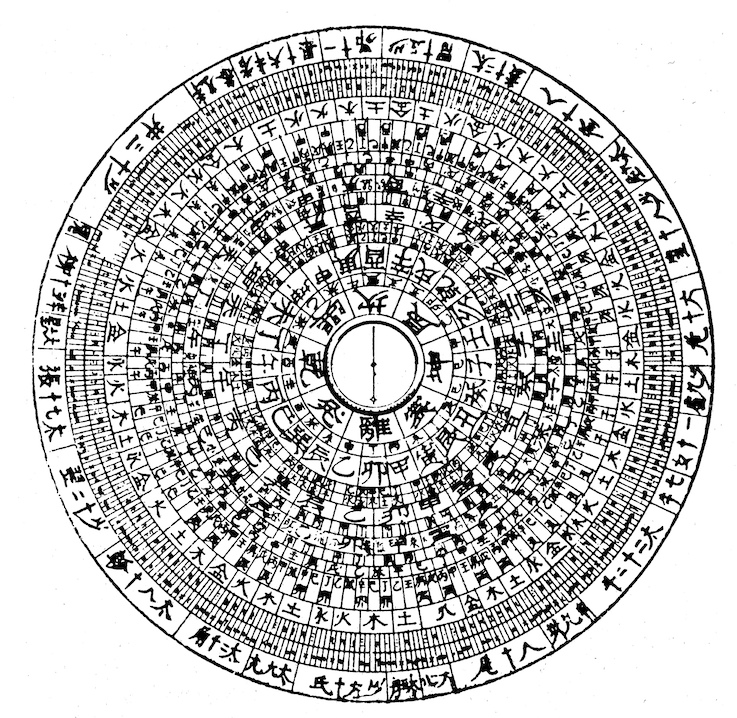
Figure 10a: Replica of a Qing dynasty fengshui compass. Source: J. J. M. De Groot, The Religious System of China (1892–1910), vol. 3
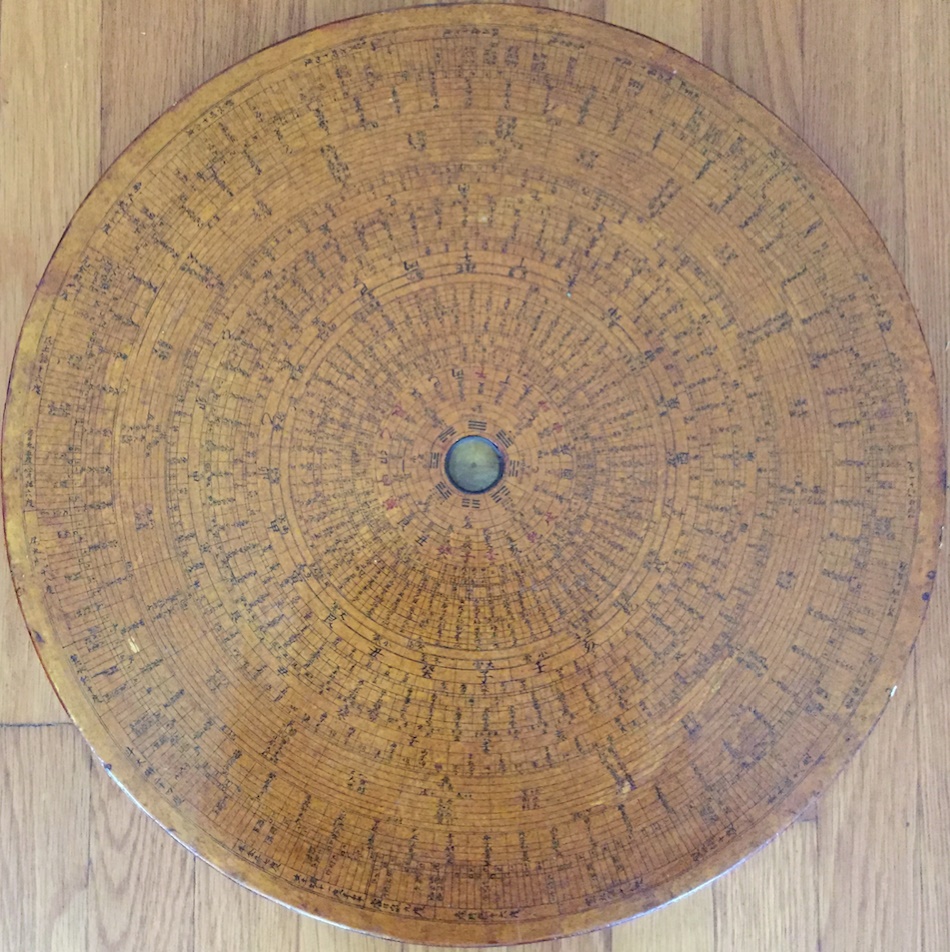
Figure 10b: A large fengshui compass produced by the imperial government printing office in the Palace of Military Valor (Wuying dian 武英殿) of the Forbidden City. In contrast to most fengshui compasses, which are from four to eight inches in diameter, this imperial version is twenty inches in diameter. Source: Author’s personal collection
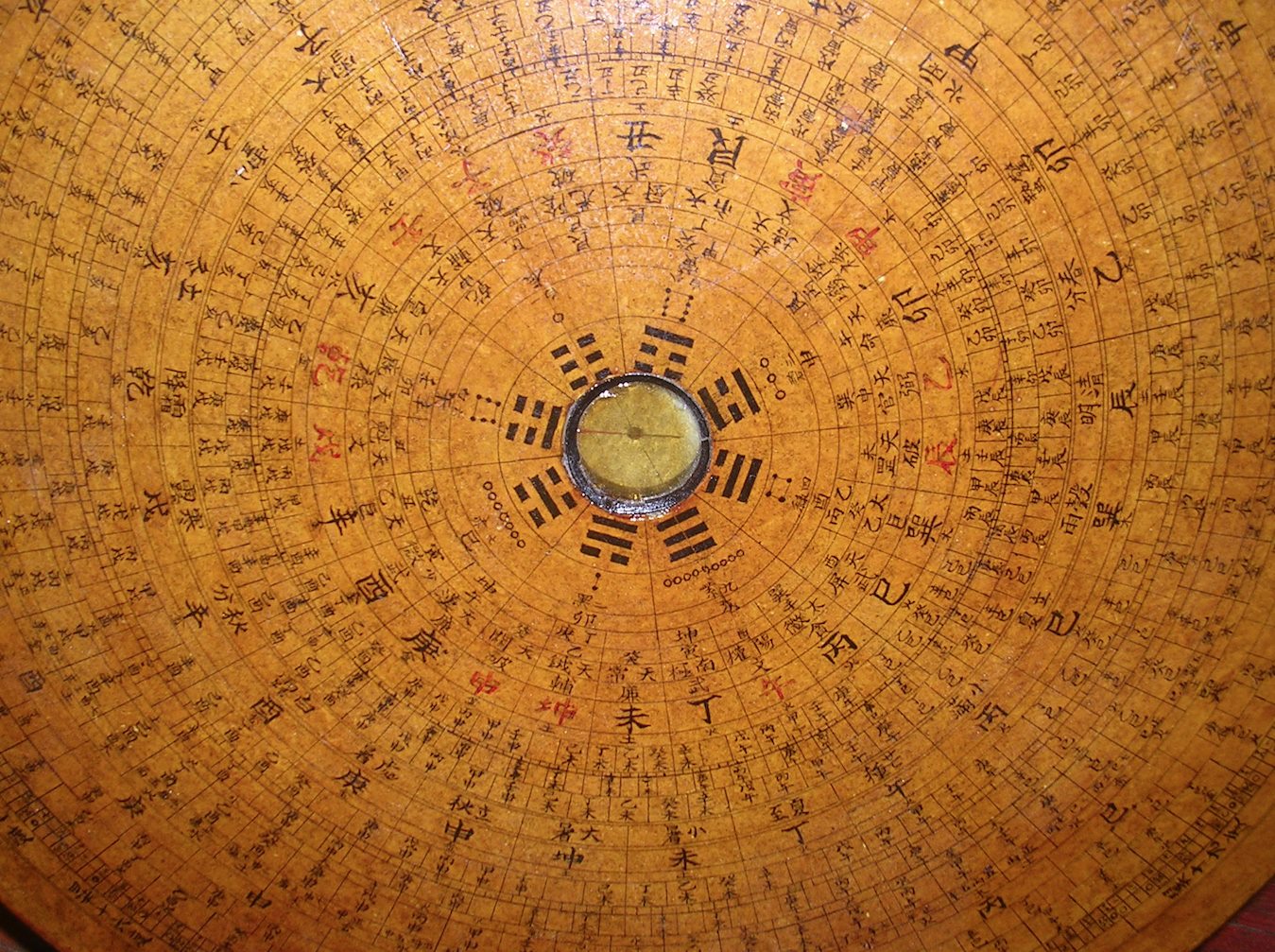
Figure 10c: Detail of Figure 10b.
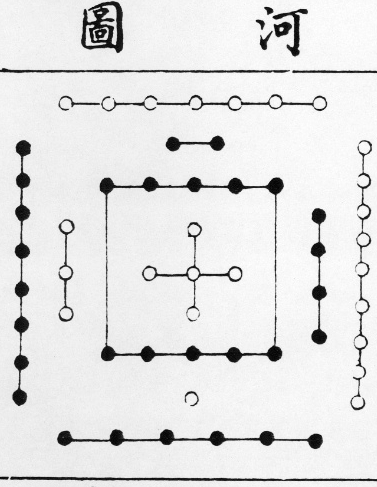
Figure 11a: A standard version of the Hetu (Yellow River Chart). In this version, the numbers from one to ten are grouped as combinations of odd (yang) and even (yin) numbers, and correlated with the five directions––and hence the five agents: two and seven correspond with the south (fire), one and six with the north (water), three and eight with the east (wood), four and nine with the west (metal), and five and ten with the center (earth). This scheme reflects the mutual-production sequence of the wuxing: fire produces earth, earth produces metal, metal produces water, water produces wood, and wood produces fire. Source: Jiang Yong 江永, He Luo jingyun 河洛精蘊 (The quintessence of the Yellow River Chart and the Luo River Writing; eighteenth century reprint)
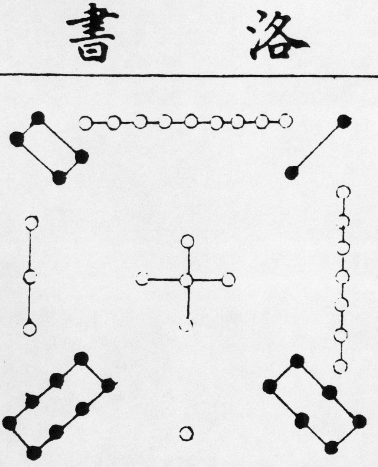
Figure 11b: A standard version of the Luoshu (Luo River Writing). Here, we find a magic square, in which all the numbers in any row of three, whether perpendicular, horizontal, or diagonal, add up to fifteen. Even (yin) numbers occupy all four corners, and the sequence is one of mutual conquest: thus, for example, metal (four and nine) overcomes wood (three and eight), wood overcomes earth (five), earth overcomes water (one and six), water overcomes fire (two and seven), and fire overcomes metal. Source: Jiang Yong, He Luo jingyun.
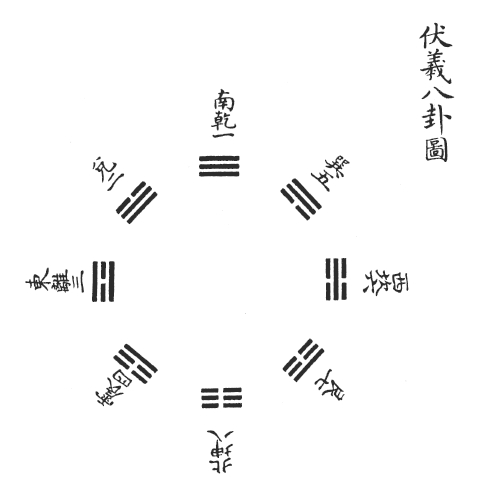
Figure 11c: The Former Heaven (先天) or Fuxi order of the eight trigrams. This configuration (see fig. 2.6, top), attributed to the mythical culture hero Fuxi, displayed the eight trigrams in four sets, each corresponding to one of the four seasons (usually depicted in clockwise order, with summer located in the south, at the top of the diagram). The juxtapositions are: Qian (connected with the south) and Kun (connected with the north); Sun (connected with the southwest) and Zhen (connected with the northeast); Kan (connected with the west) and Li (connected with the east); and Gen (connected with the northwest) and Dui (connected with the southeast). Source: TSJC, vol. 47
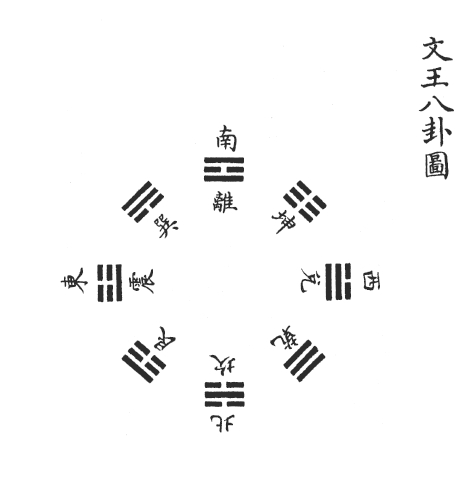
Figure 11d: The Later Heaven (後天) or King Wen order of the eight trigrams. In the most common version of this configuration, Zhen in the east marks the beginning of a seasonal cycle, followed by Sun in the southeast, Li in the south, Kun in the southwest, Dui in the west, Qian in the northwest, Kan in the north), and Gen in the northeast. Source: TSJC, vol. 47
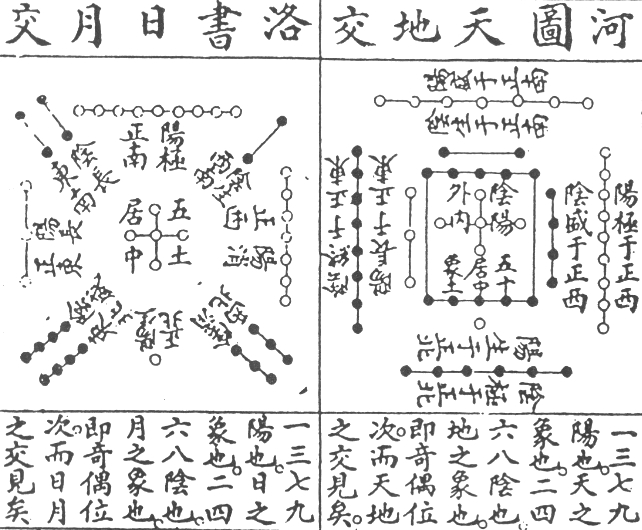
Figure 11e: Hetu and Luoshu numerical and other correlations. Source: Source: Jiang Yong, He Luo jingyun
As mapping devices for the cosmos, compasses had enormous practical utility. Even exponents of the Jiangxi School used them, since virtually all geomancers sought sites that harmonized with the stars. A Qing dynasty edition (1810) of a Ming work by Wu Wanggang 吳望崗known as the Luojing jie 羅經解(Explanation of the geomantic compass) provides a detailed description of the ideal prototype.[65] It consists of thirty-eight rings. The innermost circle, divided in half by the magnetic needle is called the Heavenly Pool (tianchi 天池). It represents the Supreme Ultimate, generator of yin and yang. The first ring contains the eight trigrams in the Former Heaven sequence. Then come the Three Houses (sanjia 三家) of the wuxing. This ring assigns one of the five “agents” to each of the twenty-four directions, which are in turn designated by the twelve branches, four of the eight trigrams, and eight of the ten stems. Next, we find the Nine Stars, which are correlated not only with the trigrams and “agents,” but also with certain branches and the twelve “stages of life” that determined the relative strength of the wuxing. Another ring, called the Stars of Heaven (Tianxing 天星) depicts stars, constellations and star symbols, including some trigrams and some stems. The Earth Plate (Dipan 地盤), representing the twenty-four directions, governs the inner region of the compass according to the Correct Needle (zhengzhen 正針). Beyond it lie the rings associated with Inner and Outer Heaven. [Figure 12]
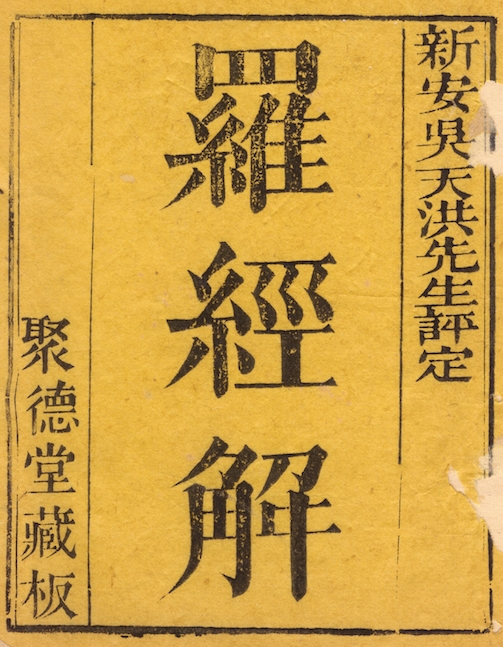
Figure 12: Luojing jie cover (Mr. Wu Tianhong’s 吳天洪critical edition). Source: Author’s personal collection
The first of the Inner Heaven rings correlates the twenty-four directions with the twenty-four fifteen-day periods of the solar year, thus introducing a calendrical component into the calculations. It is followed by the Seventy-two Dragons (qishier long 七十二龍), based on the relationship between various stems and branches, trigrams, and the conventional seventy-two five-day divisions of the year. This ring is used specifically for evaluating mountain formations. The next, called the Nine Palaces (jiugong 九宮), applies the numerology of the Luoshu to the seventy-two time divisions just mentioned, indicating yinyang positions and an appropriate number (from one to nine) for each of twelve sets. Another ring, also based on the seventy-two time divisions, correlates the symbolic animals of the twenty-eight lodges with various branches, allocating two or three lodges to each. From this point on the compass outward, the configurations of cosmic variables and the relationships between the rings become ever more complex. A number of rings apply stems, branches and other variables to numerical sets of sixty and 120. Many also involve elaborate hexagram groupings and line changes based on well-known calendrical schemes of Han and Song provenance. The outermost ring, however, represents a return to simplicity. It divides the twenty-four directions of the compass into twelve pairs, each corresponding to a part of China Proper according to a highly arbitrary fenye plan (cf. Figures 1 and 7b above).
The key to interpreting a geomantic compass was, of course, in identifying the relationship between the site in question and the overlapping variables contained in the rings. To take a simple example, if water flows from a point marked by a certain trigram (used here as a directional indicator) in a ring depicting the Former Heaven sequence, towards a point marked by the same trigram in another ring depicting the Later Heaven sequence, this situation is called “dispersion” (xiao 消); and if it flows from a point marked by a trigram in the Later Heaven sequence towards a point marked by the same trigram in the Former Heaven sequence, it is called “demise” (wang 亡). In either case, since one sequence overcomes another, the site is considered unlucky.[66] By the same sort of correlational logic, if the compass shows a certain spot to be associated with the planet Mars (and hence fire), and if the “agent” wood is to the left of this point while “water” is to the right of it, then the location will be inauspicious because water destroys fire and fire destroys wood. On the other hand, if the compass indicates that earth is to the left of fire and wood is to the right, then the conjunction is favorable because wood produces fire and fire produces earth.[67]
But this might be just the beginning. In the first place, most compass readings involved the linking of several cosmic variables as well as the use of multiple sets of symbols, including stars, animals, and objects (see below). Secondly, a geomancer could take any number of readings, depending on circumstances. The assumption was that every ring of the compass made some contribution to the analysis of any given location, and that all variables were therefore related. But how could they be reconciled? Changing trigram and hexagram relationships appeared in different configurations on different rings, and the trigrams themselves had geomantic connotations that went beyond the already complex conventional symbolism of the Yijing. The Luojing jie, for instance, ascribes a distinctive “killer nature” to each of the eight trigrams on the Earth Plate—that is, an animal quality that they assume will manifest itself whenever they are involved in “a five agents clash” with other symbols on the site.[68] Complicating matters was the use of separate but overlapping divination systems for siting, such as the dunjia 遁甲 (“hidden stem”), which applied in particular to the Nine Palaces ring. As if this were not enough, many, if not most, geomancers also found it essential to take into account the “eight characters” of a client’s birth in their fengshui calculations.[69]
Relics from the late imperial era and other bits of evidence from the period suggest a remarkable fit between the stipulations laid down in the Luojing jie—which does not, curiously, include a single illustration of a compass—and the devices actually used by geomancers. Most seem to have been about five inches in diameter, with between fifteen and twenty-five rings, although some larger versions had as many as forty-nine ceng and some smaller ones as few as five.[70] They were generally made of lacquered wood and might have a square base (symbolizing Earth, as the counterpart to Heaven) comprised of the same material. Some indicated auspicious and inauspicious directions for each degree of the compass by means of 360 separate marks—black crosses for bad fortune and red circles for good.[71] Although the particular features of these devices, such as the order of the rings, might differ substantially, virtually all of them contained the major cosmic variables outlined above.
It is reasonable to assume, I think, that the more complex the compass, the more impressive it was. Western observers in nineteenth century China describe the luopan as inspiring “reverential awe”—not only among commoners, as might be expected, but also among members of the educated elite. J. J. M. De Groot writes, for instance: “To the uninitiated, who know all the terms and cycles by name, but comprehend next to nothing of the numerous bewildering conjunctions that can be computed therefrom for any spot in particular, the compass becomes, in the hands of the professors [i.e. fengshui xiansheng], a powerful magical box containing an inexhaustible source of predictions which, promising money and bliss to every one [sic], are sold at high price, forming thus a steady source of income to the professors.”[72] [Figure 13]
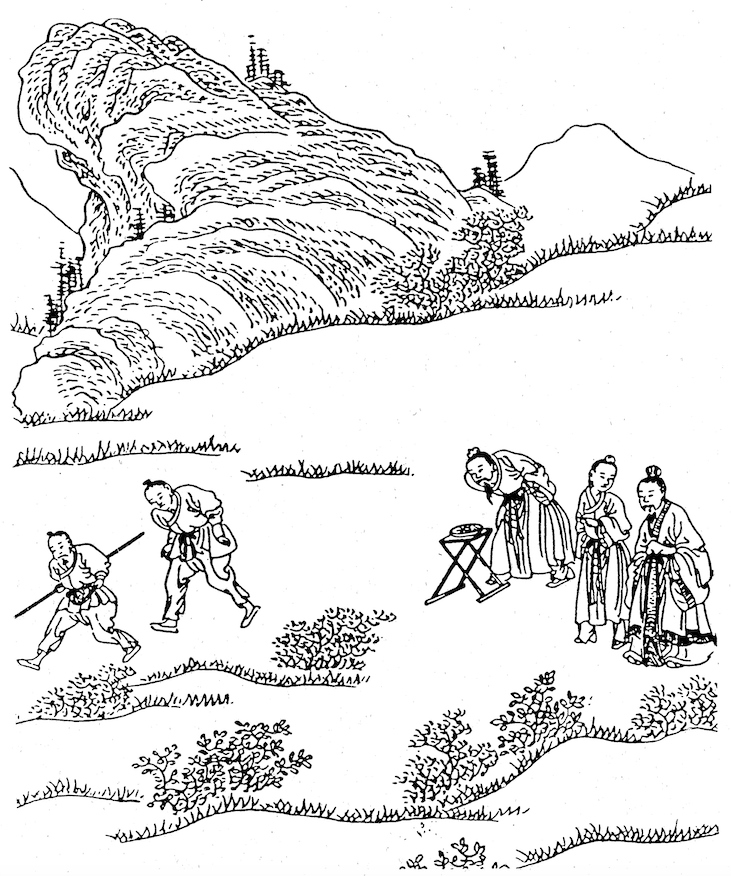
Figure 13: Late Qing representation of a fengshui specialist examining a site. Source: Richard J. Smith, Fortune-tellers and Philosophers (1991)
It is difficult to know exactly how geomancers of the Fujian school made their calculations, much less how they reconciled the various errors, omissions and inconsistencies contained in fengshui manuals such as the Luojing jie. Theoretical tracts on fengshui, although laden with detail, tell us very little about actual practice, and accounts of practice seldom reveal much about the particular theories involved.[73] Furthermore, neither Chinese nor Western sources tend to indicate the extent to which a geomancer, in any particular situation, might draw upon sources of information and/or inspiration not directly connected to the compass, such as landforms and heavenly constellations (see below). Geomancers themselves were probably only partially aware of the myriad influences playing upon their minds at any time, in any given situation. Moreover, we know that at least some geomantic practitioners, notably the blind soothsayer Li Sanyang 李三陽, responded intuitively to the earthly and celestial environment, without, at least in Li’s case, recourse to either the compass or to visible shapes.[74] All that can be said with confidence is that fengshui specialists must have felt free to consider any of the enormous number of cosmological, topographical or other symbolic variables that might be of use to them and their clients.
Timing remained crucial to all facets of fengshui, since, as in the case of both medicine and alchemy, the cosmos and all of its various microcosmic manifestations, including the earth, its subdivisions, and human beings themselves, were in interacting states of perpetual flux.[75] No situation remained static. In view of the importance of timing, specialists in the selection of auspicious days (zeri 擇日, xuanze 選擇, zouji 諏吉, xuanji 涓吉, etc.) were often consulted to assist in, or check on, geomantic calculations. For the same reason, official calendars and especially popular almanacs figured prominently in the interpretations of many fengshui specialists, as they do to this day.[76] De Groot writes, for example:
The chief use of the geomantic compass is to find the line in which, according to the almanac, a grave ought to be made, or a house or temple built. Indeed . . . in this most useful of all books it is every year decided between which two points of the compass the lucky line for that year lies and which point is absolutely inauspicious. This circumstance not only entails a postponement of many burials, seeing it is not always possible to find a grave, answering to all the geomantic requirements, in the lucky line of the year; but it regularly compels the owners of houses and temples to postpone repairs or the rebuilding of the same until a year in which the line wherein their properties are situate[d] is declared to be lucky. Many buildings for this reason alone are allowed to fall in ruin for years, and it is no rare thing to see whole streets simultaneously demolished and rebuilt in years auspicious to the direction in which they are placed.[77]
In addition to providing guidance to fengshui specialists, calendars and almanacs also contained their own information on geomancy, derived from geomantic texts, which made it possible for individuals to make their own geomantic calculations, or at least check on the calculations of professionals. [Figures 14a–b]
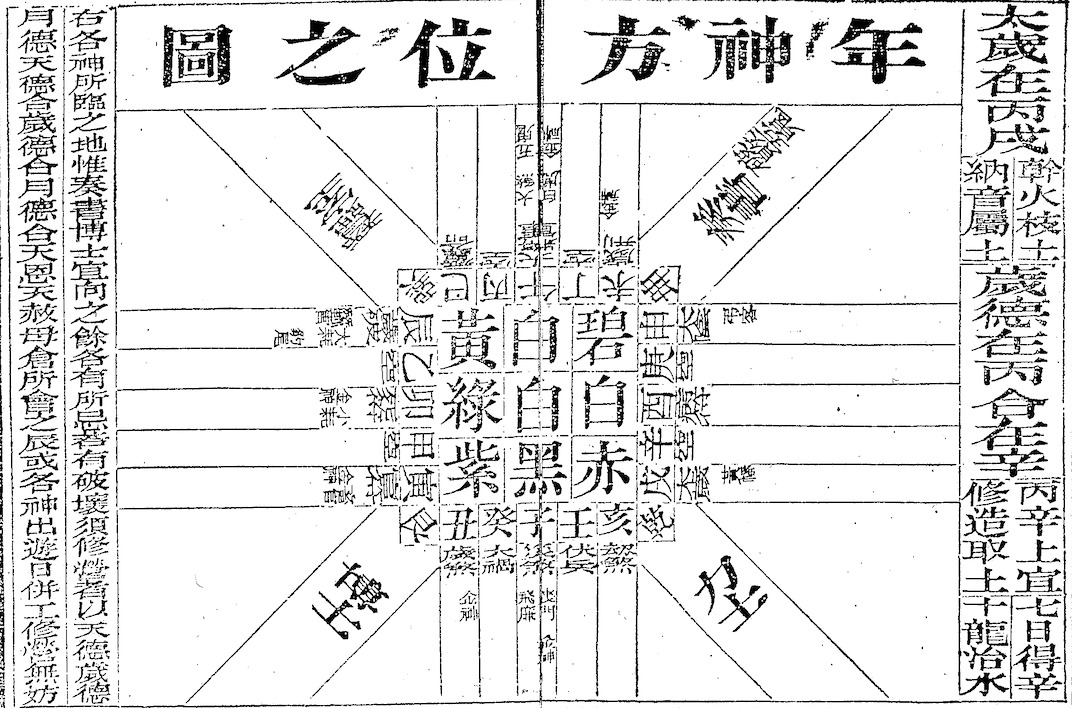
Figure 14a: A Qing calendar page with a “Diagram of the Position of the Spirits for the Year” (1886). Cf. the chart depicted in Figure 8 above and Figure 14b below. This diagram identifies four main calendar spirits—Canshi 蠶室 (Silkworm Room), Boshi 博士 (Erudite), Lishi 力士 (Strongman), and Zoushu 奏書 (Memorialist)—and other lesser spirits, indicating auspicious and inauspicious times and directions for activities such as building and repairing structures. Source: Author’s personal collection
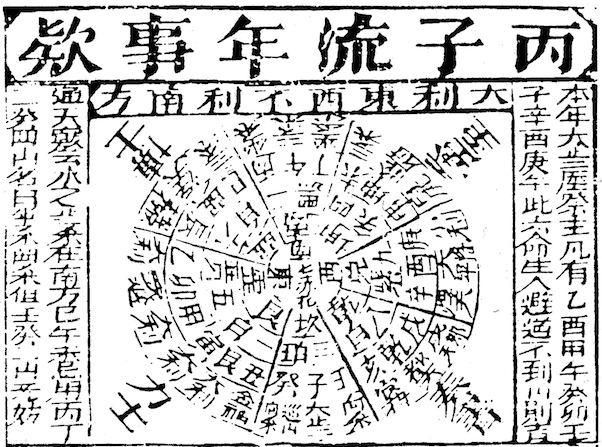
Figure 14b: Almanac page depicting “Important Affairs of the Year” (1886). Like Figures 8 and 14a above, the top of this chart conveys information about favorable and unfavorable times and directions. Source: Author’s personal collection
The Jiangxi method of geomancy, by virtue of its emphasis on physical forms and configurations, was far more comprehensible, or at least more generally familiar, to non-specialists in late imperial China. It was also a more prevalent technique empire wide, judging from Qing dynasty accounts. In fact, we find geomancers from Fujian travelling to Jiangxi to study their art.[78] In place of the abstruse cosmology and elaborate calculations of the Fujian school, which presumably provided more latitude for creative interpretations on relatively flat land, the school of forms might initially require only a visual, intuitive appreciation of a given site. Some authorities describe the experience of finding the right location in terms reminiscent of Chan/Zen Buddhist enlightenment: “At a true site . . . the hills are fair, the waters fine, the sun handsome, the breeze mild; and the sky has a new light: another world. Amid confusion, peace; amid peace, a festive air. Upon coming into its presence, one’s eyes are opened; if one sits or lies, one’s heart is joyful. [. . .] Play with it, and it is as if you can catch it; put it off, and it cannot be got rid of. Try to understand! It is hard to describe.”[79] [Figures 15a–c]
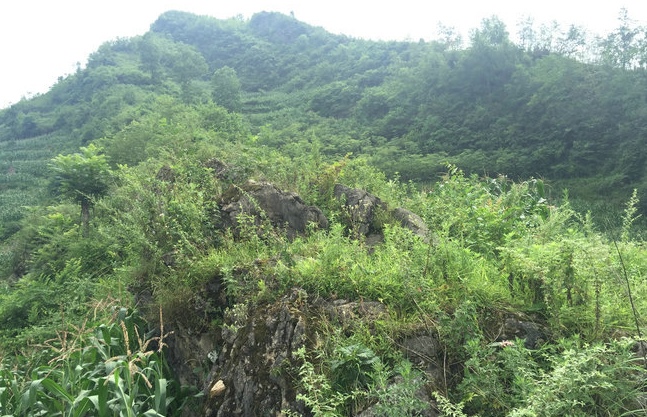
Figure 15a: An auspicious natural site identified by Wang Junzhi (王君植). Source: URLhttp://www.zgwpfs.com/index.html. Some of the photographs on Wang’s webpage are marked to show their specific geomantic features.
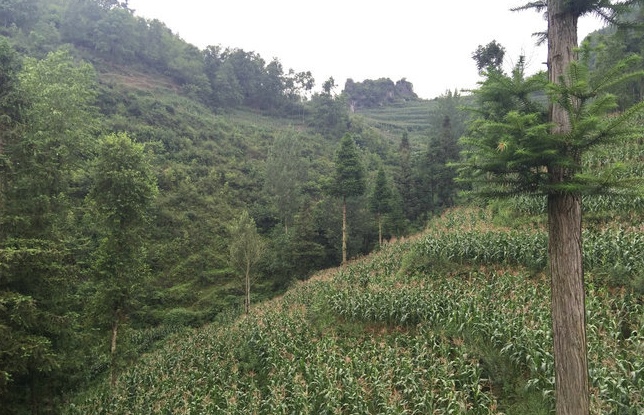
Figure 15b: An auspicious natural site identified by Wang Junzhi.
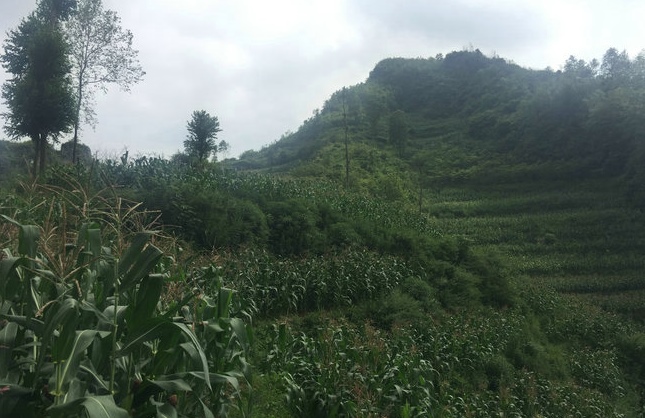
Figure 15c: An auspicious natural site identified by Wang Junzhi.
But while intuitive appreciation came easily, analysis was generally far more difficult. As might be expected, the metaphorical vocabulary of the Jiangxi school was vast, since every landform, waterway, and physical relationship looked like something—hence the emergence of “theories of physical shapes” (wuxing lun 物形論), “theories of topographical forms” (xingju lun 形局論), and “theories of naming landforms” (hexing lun 喝形論). The imagery in fengshui manuals ranges widely, from animals (dragons, tigers, tortoises, birds, fish, etc.), to parts of the body (head, tongue, teeth, arms, elbows, etc.), to heavenly and earthly objects of every description (stars, constellations, buildings, boats, carts, nets, carpets, wash basins, spears, arrows, nests, leaves, etc.) to writing tools and the written script itself.[80] Characteristically, these metaphors tended to acquire a symbolic significance in Chinese geomancy that made them, in effect, instruments of power—much as trigrams, hexagrams, stems and branches were viewed as the actual embodiment of cosmic forces. Thus, we find geomantic evaluations such as the following: “If on the right and left [of a grave] the rocks assume the shapes of drums and flags, it presages military power. [. . .] If the hills opposite are in the shape of moth wings, it indicates that beautiful daughters-in-law and good daughters will appear”[81] [Figures 16a–e]
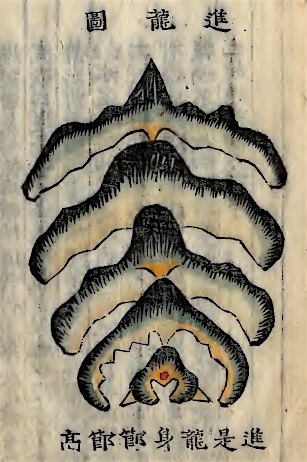
Figure 16a: “Advancing Dragon.” Source: Xu Shanji 徐善繼 and Xu Shanshu 徐善述, Dili Renzi xuzhi人子須知 (What people must know about geomancy; eighteenth century). Source: University of California Berkeley, East Asiatic Library. URL: https://archive.org/search.php?query=creator%3A%22880-01+Xu%2C+Shanji%2C+14th+cent%22
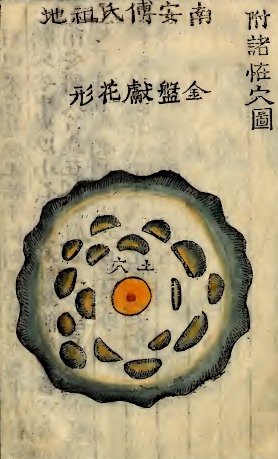
Figure 16b: “Presenting Flowers on a Silver Tray.” Source: Xu Shanji and Xu Shanshu, Dili Renzi xuzhi
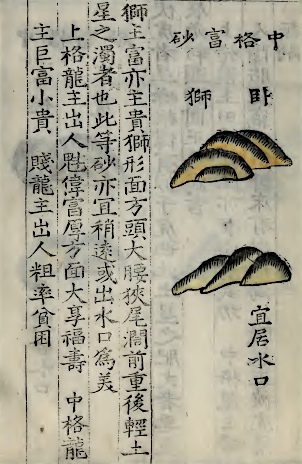
Figure 16c: “Recumbent Lion.” Source: Xu Shanji and Xu Shanshu, Dili Renzi xuzhi
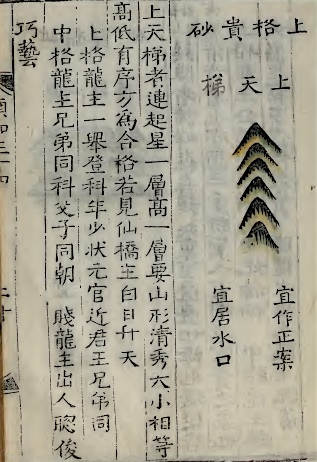
Figure 16d: “Stairway to Heaven.” Source: Xu Shanji and Xu Shanshu, Dili Renzi xuzhi
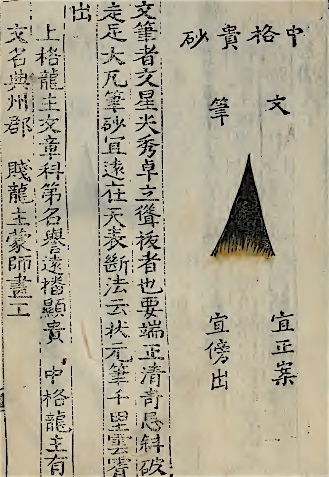
Figure 16e: “Brush of Literary Success.” Source: Xu Shanji and Xu Shanshu, Dili Renzi xuzhi
In larger spaces, softly undulating rectangular shapes were generally considered auspicious, as were lines of protective hills and mountains. Land configurations that enveloped important administrative or commercial areas (in the fashion of the flanks of well-positioned gravesites), and the waterways that nourished these areas, were also esteemed. [Figure 17] Moreover, Chinese mapmakers were not above adding such topographical features to their cartographic productions in order to depict (create) a more favorable geomantic environment.[82] And where hills and mountains already existed but were separated by flat expanses of land that seemed to diminish their collective power, mapmakers might edit their rendering of the scene to give it greater geomantic strength. Sometimes places would simply be relocated in maps to give them a more favorable geomantic position, or altered in appearance for similar reasons.[83]
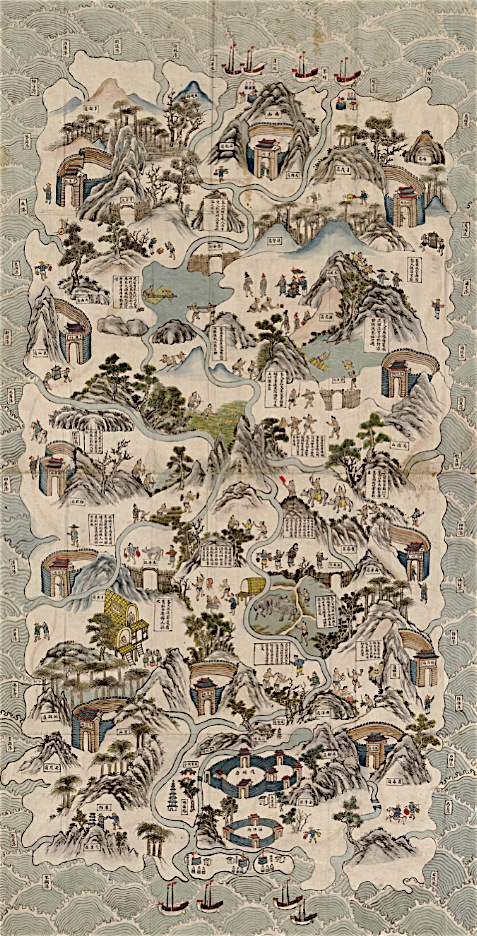
Figure 17: Qiong jun diyu quantu 瓊郡地輿全圖 (Complete map of Hainan prefecture; nineteenth century). Although Hainan Island is, in fact, decidedly egg-shaped, this map distorts the geographical reality in favor of a more geomantically attractive shape - an undulating rectangle, with particularly prominent mountains and rivers. Source: Library of Congress Map Division
Stephen Feuchtwang, who has analyzed a number of Chinese handbooks dealing with the symbolism of fengshui, writes insightfully that such symbols “rarely stand for a static state,” but
nearly always . . . [represent] a process or a state of being that is in flux and always in some kind of relation to another symbol. There is always some form of dialectic, basically between the Heaven and Earth aspects of a situation, but more specifically, even within a single series of symbols, one symbol implies another and interacts with it.[84]
The most common verbs in the formal discourse of fengshui thus express action and especially relationships. For instance, the influence of qi on a site comes (lai 來or ru 入) and goes (chu 出or qu 去); and it is either collected up (shou 收) or dispersed (xiao 消). Similarly, yin and yang either go with the flow (shun 順) or are at odds (ni 逆); forces clash (chong 沖) or harmonize (he 和); symbols “transfer change” to one another (yi 易) or are matched or paired with one another (pei 配 or shuang 雙). Other terms that describe interdependency include jiao 交 (interlocked with), na 納 (contained in), shu 屬 (classified as or attached to) and xiang 相 (in a mutual relationship with). Aside from the words for auspicious (ji 吉) and inauspicious (xiong 凶) to describe sites and situations, the most common adjectives in the lexicon of geomancy are beautiful (mei 美), elegant (xiu 秀), pure and simple (chun 純), confused (boza 駁雜), chaotic (cuo 錯) and muddy (ni 泥or zhuo 濁).[85]
In essence, the study of forms centered on finding concentrations of vital qi embodied in physical configurations described as “dragons” or “dragon lairs” (longxue 龍穴). In the straightforward words of an early nineteenth century fengshui manual:“The humane man and filial son obtain a lair with live qi for the burial of their parents.”[86] Shen Hao tells us:
The beginning and end of geomancy is nothing more than the layout of mountain ridges, and all the authorities are alike in referring to them as dragons. Why is this? Because none but the magic dragon can lie low or fly, and be big or small; and the earth’s forms may rise to mountain heights or fall away to deep springs; they open wide to cover counties and to extend through subprefectures; they contract and are like a thread or a string. Is this not like a dragon? The magic dragon writhes and changes, unknowable in its subtle origins; and mountain ridges that have life breath will start to run east, then suddenly turn west, or begin to run south then suddenly head north. You cannot pin them down—off they go in all directions. Surely nothing but the writhings of the magic dragon . . . [adequately explain] the mountain ridges’ permutations. That which does not resemble the permutations of the magic dragon does not realize the subtle geomantic essence. Therefore, it is said: if it has permutations, call it a dragon; if it has none, call it a barren mountain.”[87]
Mountains receive more attention in fengshui manuals than any other landform; indeed, so powerful was the dragon imagery in traditional China that the section on “dragon rules” (longfa 龍法) in such manuals would generally be consulted even in areas where the topography was essentially flat. To the trained eye, any undulation or outcropping had potential significance, but the designation “dragon” carried a special status in the lexicon of fengshui.[88] Despite the infinite variety of mountains and hills that actually existed in nature, twelve forms came to be viewed as paradigmatic. Yang Yunsong’s Tang dynasty compilation titled Shier zhang fa 十二杖法 (The twelve staff patterns) set the standard for later geomantic works.
The twelve staff patterns are: (1) “Going with the flow” (順), in which the site or lair receives the influence of vital qi by “riding along” with the incoming “dragon vein” (longmai 龍脈) of the dominating mountain or hill (benshan 本山); (2) “going against the flow” (逆), in which the site receives influence by meeting the mountain vein head-on; (3) “coiled up” (su 縮), in which the site receives influence from surrounding and proximal but not directly connected mountains; (4) “connected” (zhui 綴), in which the site is located amidst veins that are connected like threads in a piece of cloth; (5) “opened” (kai 開), in which the dragon vein is divided in such a way as to form two sites; (6) “threaded” (chuan 穿), in which the vein enters a site from the side; (7) “discarded” (li 離), in which the site is influenced by the “cast-off” vein of the dominating mountain; (8) “sunken” (mo 沒), in which a hollow (wo 窩) is formed in the site; (9) “paired” (dui 對), in which the influences of the four directions are harmoniously matched in a site; (10) “severed” (jie 截), in which lack of protection by surrounding land formations makes part of the site vulnerable to being “snipped off;” (11) “invaded” (fan 犯), in which a site is located too low in relation to surrounding mountains; and (12) “put in order” (dun 頓), in which the site is built up artificially to receive vital qi.[89] In actuality, of course, landforms were frequently a composite of the characteristics of two or more of these configurations.
In most geomantic illustrations, the dragon’s lair, located ideally in a place protected on three sides, is represented by a small circle. According to conventional wisdom, a perfect site should be cradled by the “arms” of a horseshoe-shaped formation. In fengshui parlance, these flanking topographical features are called sha 砂 (lit. “lumps of stone” or “pebbles”).[90] As indicated in the Shier zhang fa, a well-located site should be neither too high nor too low in relation to the surrounding landscape, but located at a transitional point, “where high and low meet.” Yang influences, or “heavenly qi,” symbolized by the seven constellations collectively known as the Green Dragon 青龍, should be on the left (east) side of a south-facing lair, while yin influences, or “earthly qi,” symbolized by the seven constellations known as the White Tiger 白虎, should be on the right (west). The other two directional animals used in geomantic calculations were the Black Warrior 玄武(a turtle-like beast), and the Vermillion Sparrow朱雀.[91] [Figures 18a–d]
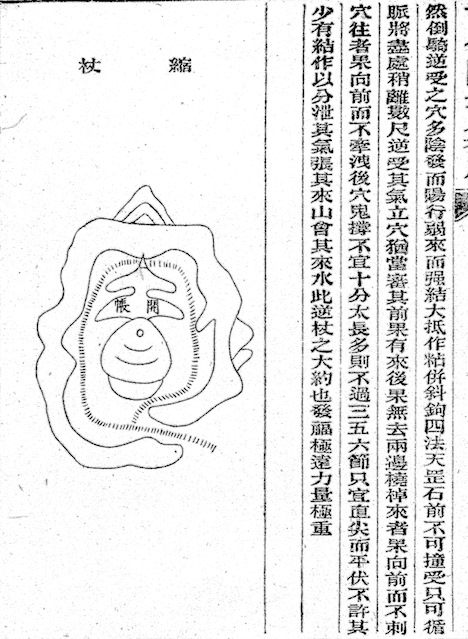
Figure 18a: One of the Twelve Staff Patterns. In this “coiled up” configuration (suzhang 縮杖) the qi of the main mountain peak condenses around the tomb site. Two streams, depicted as lines of tiny slash marks, run through two valleys that lie below a series of foothills. The characters kaizhang 開帳refer to an “opening up” of the site just above the lair, which, as usual, is represented as a small circle. Source: TSJC, vol. 47
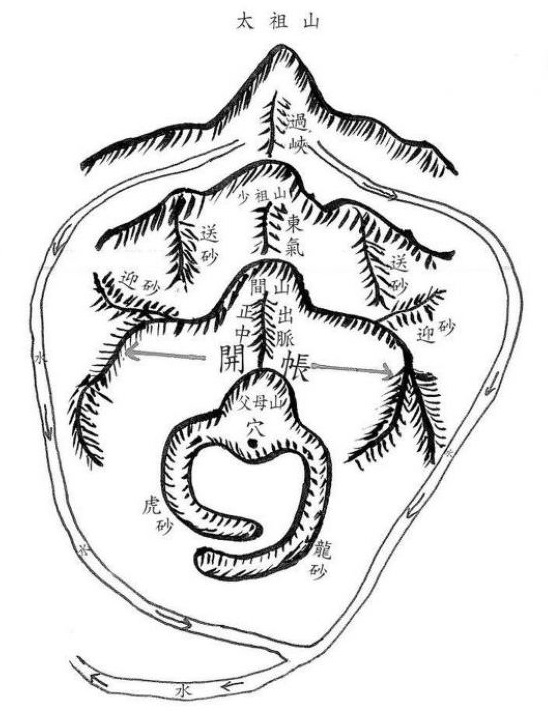
Figure 18b: A modern, annotated line drawing of the major geomantic features illustrated in Figure 18a, including a major peak (taizu shan太祖山); lesser ranges (shaozu shan少祖山) below it; the “opening up” (kaizhang開帳) of the site; three separate flanking formations (sha砂); flowing water (shui水); and a “father-mother mountain” (fumu shan父母山, also known as a “pleasure mountain” (leshan樂山), located immediately behind the lair (xue穴), providing comfort and nurture for the tomb(s) of the deceased.Source: http://www.etaoist.org/taoist/index.php/2012-08-21-19-02-49/item/202-%E9%BE%8D%E7%A9%B4%E7%A0%82%E6%B0%B4
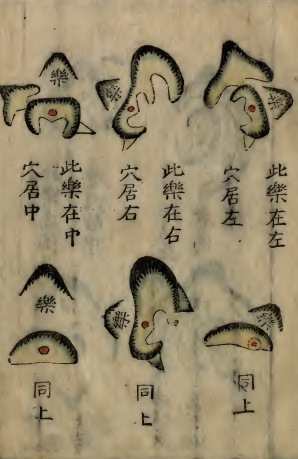
Figure 18c: Depictions of various “father-mother mountains”/pleasure mountains,” with the “dragon’s lair” marked by a red dot. The idea here is that the pleasure mountain provide shelter for the lair. Source: Xu Shanji and Xu Shanshu, Dili Renzi xuzhi
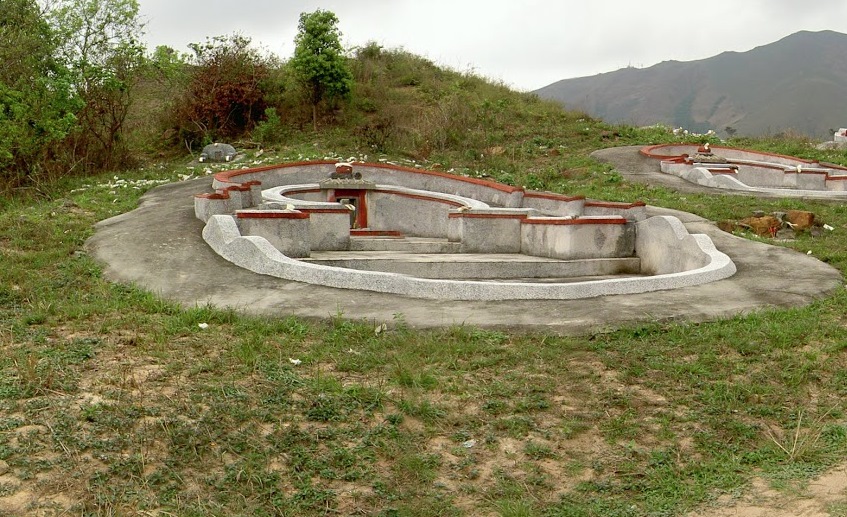
Figure 18d: An actual gravesite with a “father-mother mountain” or “pleasure mountain” immediately behind it. Source: http://shanchuen.blogspot.com/2012/03/blog-post_29.html
As a rule, whenever a geomancer encounters ground that shows no ridge-like indications of the dragon’s veins, he looks for a secluded corner, where yin and yang influences (diqi 地氣 and tianqi 天氣, respectively) are most closely intertwined and the life breath of the area is therefore most highly concentrated––a place where, in the geomantic cliché, water can accumulate (deshui 得水) and the wind can be stored (cangfeng 藏風). At the same time, a site must be protected by “mountains” (shan 山, a term than can include hills) from “noxious winds” (fengsha 風煞 or shaqi 煞氣) emanating from the north—even if the grave does not actually face due south. A good site should enjoy mild breezes and gently moving water, whether in rivers, streams, brooks, and gullies, or in oceans, lakes, and ponds. Too much wind or too fast a watercourse at a site causes harm and disperses good influences, while too little wind and sluggish water or marshy ground creates stagnation. Rolling hills that resemble a crouching tiger afford security, especially if the site is located near the head or paws. In flat terrain, single trees or (more commonly) groves may substitute for the protective function of hills and mountains. And where landforms seem to approximate animals, objects, or written characters they must be appropriate to the larger environment.[92] [Figures 19a–b]
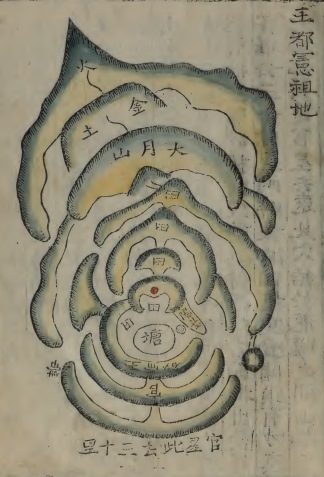
Figure 19a: The grave of a Ming dynasty official, surnamed Wang (王), with the “dragon’s lair” marked by a red dot. In this configuration, the small ranges below the “lair” are considered to be “homage mountains” (chaoshan 朝山), which pay their respect to the upper (northern) part of the site, which is well-protected by mountains. Source: Xu Shanji and Xu Shanshu, Dili Renzi xuzhi
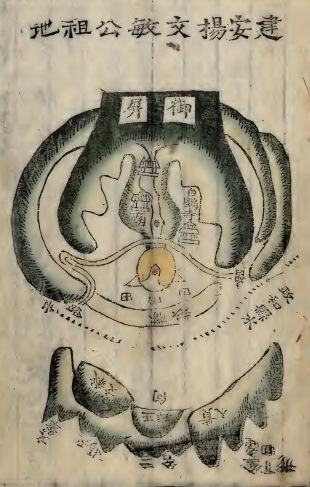
Figure 19b: The grave of another Ming dynasty official, named Yang Wenming 楊文敏 (aka 楊榮; 1371–1440), also with “homage mountains” and the “dragon’s lair” marked by a red dot. In many respects this site is an ideal one, where the physical features (described at length in an appended note), conduced to “accumulating water and storing the wind” (得水藏風). Source: Xu Shanji and Xu Shanshu, Dili Renzi xuzhi. See also http://www.wdwsfs.com/sywz/show.asp?id=5092
The geomancer seeks both oppositions and affinities in the terrain itself. On relatively flat ground the site should be prominent, and in hilly areas it must be located in an intermediate position on a slope with a view unrestricted by walls, houses or boulders. Ideally, a site should have a harmonious balance of “male” ground (bold elevations) and “female” ground (uneven and softly undulating), as well as a congenial blend of the five agents. This blend can be discerned cosmologically by means of a compass or determined visually. According to exponents of the Jiangxi school, softly undulating terrestrial forms suggest water; sharply pointed forms, fire; gently rounded forms, metal; elongated, trunk-like forms, wood; and squared forms, earth [Figure 20]. Naturally enough, a conjunction of hills or boulders representing fire and wood could pose a threat if located too close to graves and houses. On the other hand, combinations or fire-shaped and water-shaped landforms might offset one another.
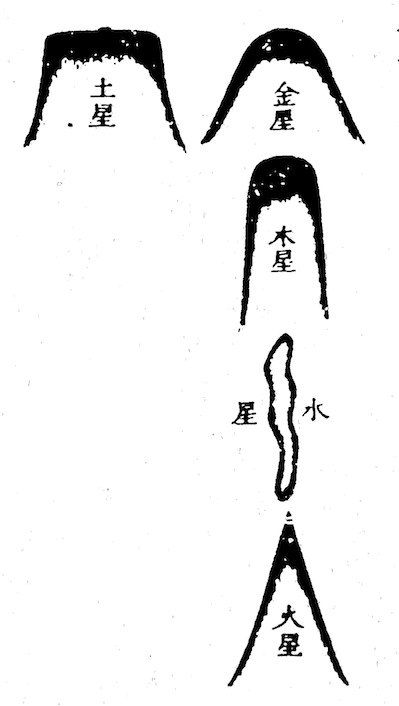
Figure 20: A line-drawing depicting “five agents” geomantic configurations. Some of these shapes are identified in Figure 19a above. Source: TSJC, vol. 47
Some geomancers identified certain types of land formations not only with the five “agents,” but also with celestial bodies, such as the “nine stars” (jiuxing 九星) of Daoist lore. [Figure 21] These included the seven actual stars of the Dipper and two imaginary stars. Such xing were not, however, the same as the “stars” identified with the “nine palaces” referred to above. The latter referred to directions, and corresponded with the Later Heaven sequence of the eight trigrams (with the addition of one star for the center). These stars, represented by numbers and colors in the charts of popular almanacs, indicated auspicious and inauspicious directions for burials at certain times.
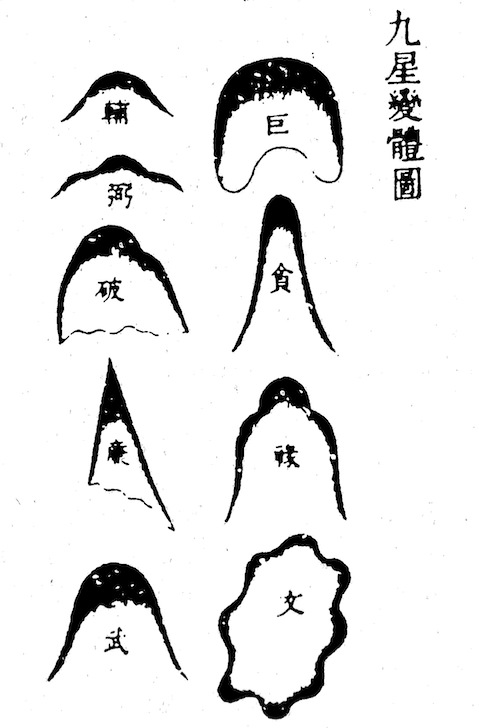
Figure 21: A line-drawing depicting “nine star” geomantic configurations. Source: TSJC, vol. 47
The requirements for human residences were as detailed as those for graves, and based on similar geomantic principles. Not surprisingly, bridge-builders, too, paid attention to fengshui, as Ronald Knapp has noted in a forthcoming book titled China's Covered Bridges.[93] Works such as the Huangdi zhaijing (The Yellow Emperor’s siting classic) and the Yangzhai jing 陽宅經(Classic of residences for the living), provide numerous stipulations for the proper location of homes and other buildings. [Figure 22] We are told, for example, that dwellings should be built at auspicious times and properly oriented (ideally, facing south). They should not lie at the mouth of a thoroughfare, nor in a temple complex. They must not come too near a shrine, nor be located where plants and trees do not grow to protect them. Neither should they be erected in former battlegrounds, at the gate or opening of a large wall, or opposite a prison gate. Watercourses must not run straight into either a grave or a human dwelling, but should flow down from the left or right and drain off laterally. Similarly, roads should not run directly into homes. In fact, all direct lines were considered pathways for evil spirits, and thus designated “secret arrows” (anjian 暗箭)—to be avoided whenever possible.[94] According to popular belief, a house must not be surrounded by appreciably higher houses, or be located at a point where the corners of other houses converge on it. Above all, nothing ought to oppress, obstruct, or sever a dragon “vein” in the area. Other geomantic considerations, reflected not only in fengshui manuals but also in popular almanacs, had to do with the location and orientation of individual rooms, storage spaces, pig sties, and even furniture.[95]
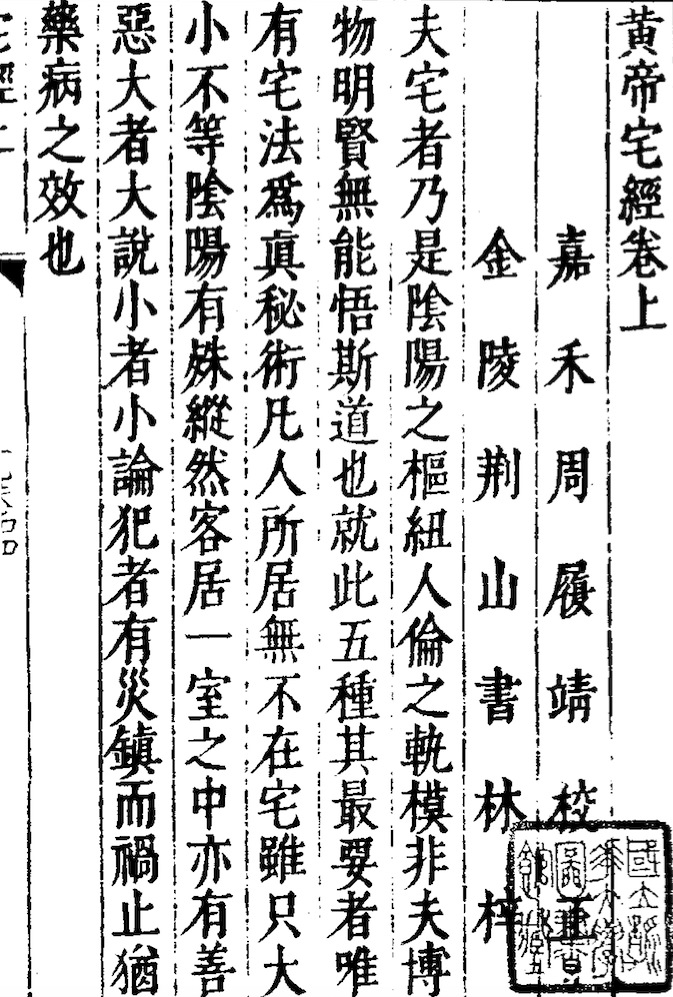
Figure 22: The first page of the Yellow Emperor’s siting classic emphasizing the cosmological foundations and human importance of proper siting. Source: ctext.org
Few locations were ideal, but a truly bad site could usually be improved, either by the use of charms (see below), or by physical changes in the environment. One such modification might be to break off the sharp point of a dangerous “fire” rock to transform it into the harmless form of “wood.” Building an appropriately-scaled water tank or redirecting a brook could achieve the same effect. “Geomantic pagodas” (fengshui ta 風水塔), whether fashioned out of piled up stones or built according to orthodox architectural principles, had the capacity to ward off evil influences if situated correctly. [Figure 23] Artificial ridges behind a grave or dwelling could also serve this purpose. If no natural watercourse ran by a grave, house or temple, the deficiency might be remedied by installing a tank or digging a channel that collects rainwater and then allows it to drain off in a propitious direction, at a proper speed. Even dry tanks and gullets were assumed to possess a certain geomantic efficacy. Another technique was to plant certain kinds of trees to improve the fengshui of a location.[96]
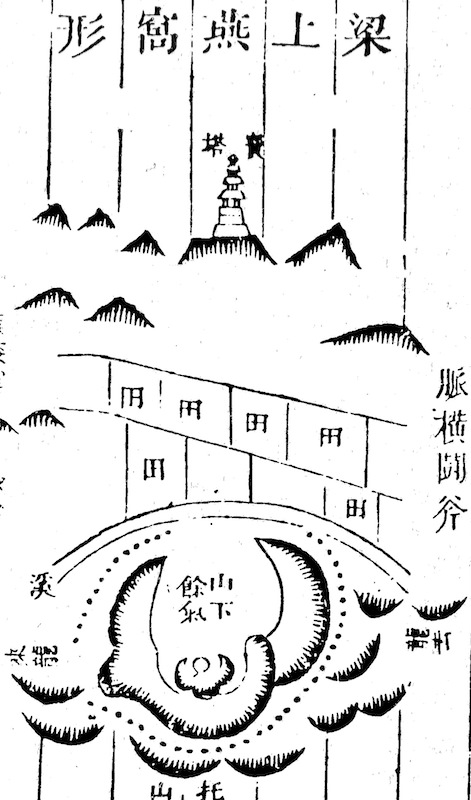
Figure 23: A line-drawing from a geomantic manual illustrating a “swallow’s nest” configuration with a fengshui pagoda (lit. “precious pagoda,” baota 寶塔) at the top. Source: Ouyang Chun 歐陽純, Fengshui ershu xingqi leize 風水二書形氣類則(Fengshui forms and energy by categories, two parts)
In residential areas, walls or fences might be built to ward off evil influences, and protective images of lions or tigers strategically placed for the same purpose. Stones inscribed with the characters “stone that dares to resist” (shigandang 石敢當) also served to drive away demons.[97] [Figure 24] These were termed “stabilizing” or “quelling” things (zhenwu 鎮物). Modifications could also be made in buildings, from changes in the basic structure or external furnishings to the simple rearrangement of furniture.[98] Sometimes entire buildings had to be relocated. The gazetteer of Luoding 羅定county (Guangdong) tells of a magistrate well-versed in geomancy, who in the 1830s ordered the temple of the God of Literature (Wenchang 文昌) moved to the town of Nanping 南平because it adversely affected the literary fortunes of Luoding by virtue of its location with respect to the county examination hall.[99] And, of course, structures that disturbed the fengshui of a site might simply be torn down. One late Qing geomancer, Sun Buyun 孫步雲, was so famous for destroying things that he was known locally as Sun Pafang 孫爬房 (Sun “Rake the House Down”).[100]
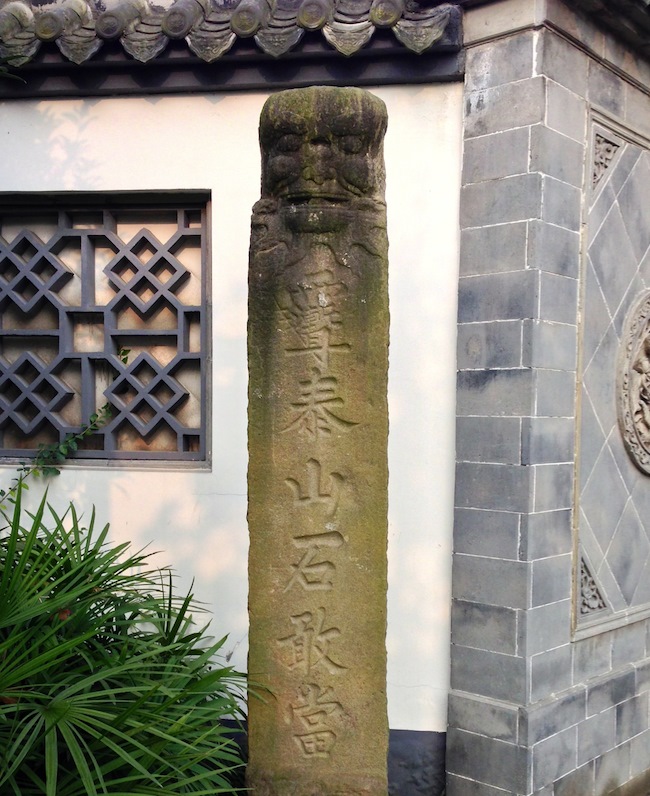
Figure 24: Shigandang (石敢當) inscription on a temple stele. Source: Creative Commons
Entire communities, no less than homes and graves, benefitted from good fengshui. Qiufang Yi provides a detailed case study of the way that the elites of Wuyuan County (婺源縣) in Anhui province (now a part of Jiangxi province) identified their literary success explicitly with Wuyuan’s impressive geomantic features.[101] There, early settlers recognized that stately mountains to the rear guarded the site, faraway hills on the east and west maximized the advantages of sun and wind, and well positioned waterways ensured “live breath” for the site. It was a location in which the elegance of the mountains and rivers and the spiritually efficacious veins of the earth (山川毓修; 地脈鍾靈) nurtured scholarly talent. As the local scholar Wang Yishi 汪以時 (jinshi 1589) put the matter, “the dragon vein (in our county) is of the highest status and of the greatest elegance. It is truly the perfect design, and the creation of Heaven and Earth. This is the kind of dragon vein that is rarely seen in the world.”[102]
Other areas enjoyed similar geomantic advantages. Not surprisingly, China’s sacred Mount Tai (泰山) exemplified positive fengshui.[103] Residents of Xiamen (aka Amoy) in Fujian attributed the city’s prosperity to a pair of protective knolls flanking the inner harbor, known respectively as Dragon-head Hill and Tiger-head Hill. The thriving port of Guangzhou (Canton) benefitted from two chains of hills that formed a horseshoe shape around the so-called Tiger Gate. Certain other cities, towns and villages throughout the empire also boasted well-positioned hills, rock formations and even individual boulders that offered protection from harm. And where a community lacked sufficiently good natural fengshui, properly situated pagodas could be built to remedy the situation. On the other hand, ill-considered manipulation of the natural environment could cause serious problems. Thus, for example, the residents of Hankou in Hubei province attributed the frequency of fires in the city to unchecked quarrying in a mountain to the west.[104]
Beijing, the capital of China since the early fifteenth century, warrants special attention as an example of traditional fengshui considerations applied to an entire urban complex. Organized on a strict north-south axis, the metropolis in the Qing period consisted of an Inner (Manchu) City to the north and an Outer (Chinese) City to the south—both walled, like all major urban centers in China. [Figure 25] Within the Inner City was the Imperial City, which, in turn, surrounded the Forbidden City, the Manchu palace area. Beyond the Forbidden City there were numerous mountain systems that protected the capital on its western, northern and eastern, including the Heavenly Longevity Mountains (Tianshou shan天壽山), where the Ming tombs were located. [Figure 26] The Qing Summer Palace, also to the northwest of Beijing but much closer, was also protected by mountains, which tended to be exaggerated in maps of the period. [Figure 27]
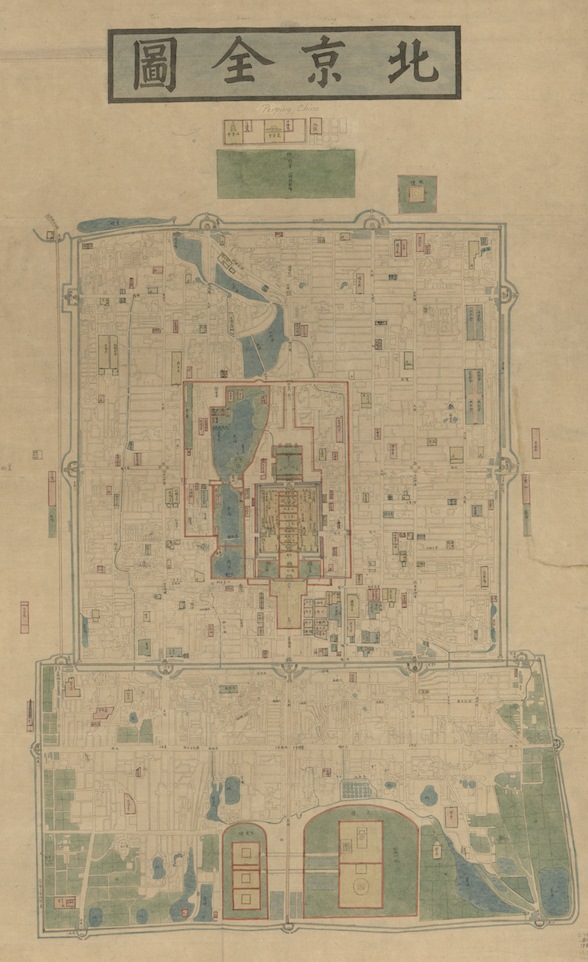
Figure 25: A map of Qing dynasty Beijing (1861). Source: Library of Congress Map Collections
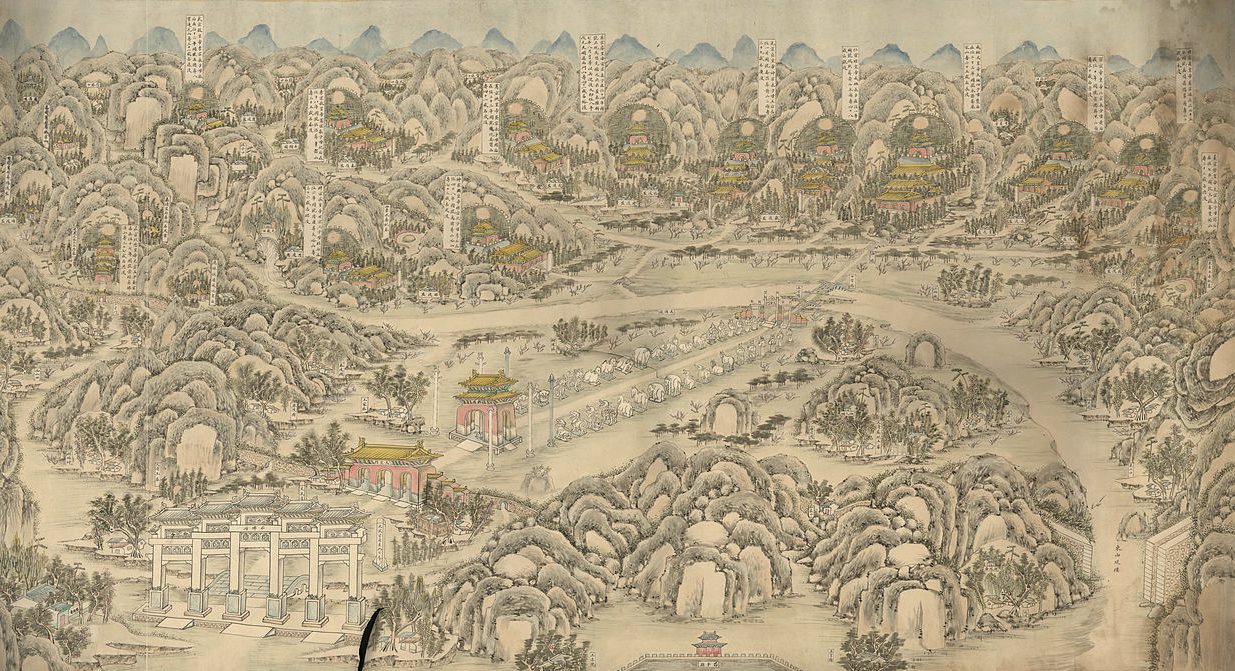
Figure 26: The Heavenly Longevity Mountains (天壽山) protecting the Ming Tombs (nineteenth century map). Source: Library of Congress Map Division
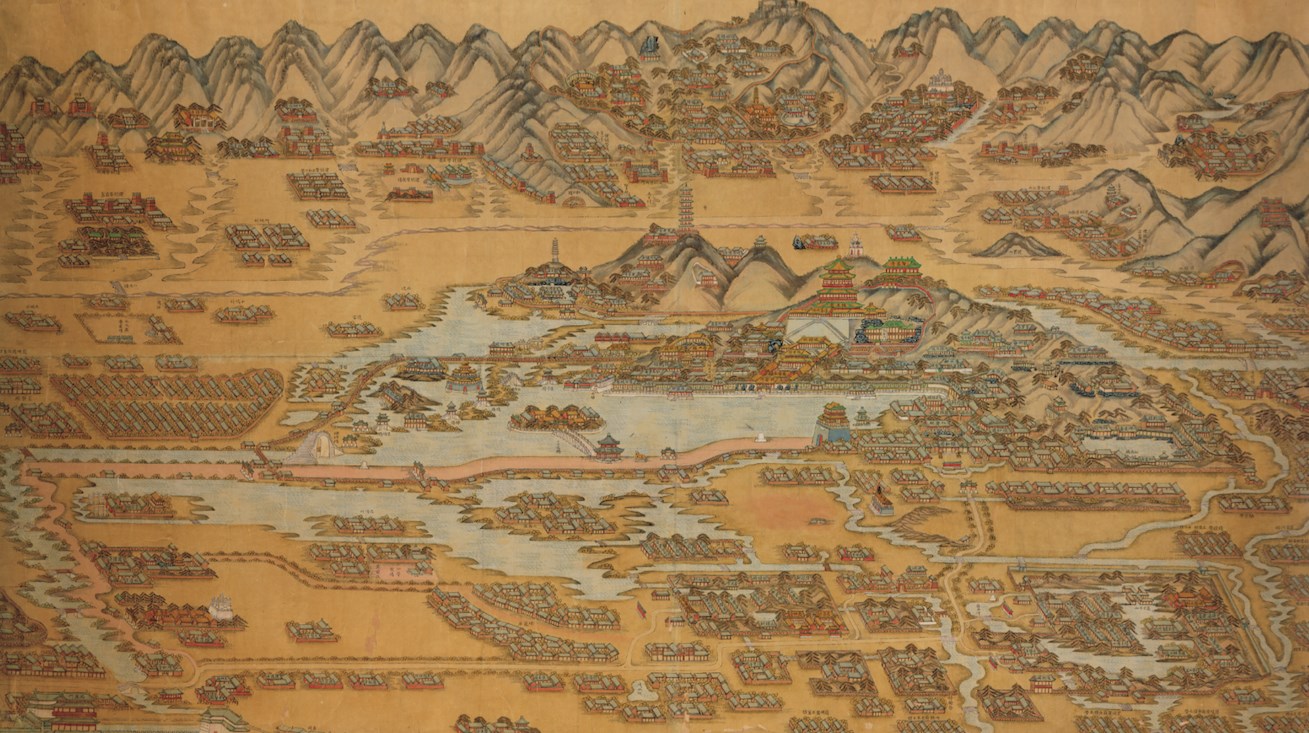
Figure 27: Mountains protecting the Qing Summer Palace (nineteenth century map). Source: Library of Congress Map Division
Since Beijing was built almost de novo in the Ming dynasty, one might think that the imperial architects would have designed it to conform closely to the classical model laid out in the Zhouli, which called for a perfectly square city with twelve symetrically placed gates, nine major north-south streets, nine east-west arteries, and so forth. In fact, however, the requirements of fengshui necessitated significant modifications in all parts of the city, placing two separate symbolic systems in perpetual tension.[105] For example, an ideally located site should contain topographical forms representing each of the five agents, which were absent in the natural landscape of the Beijing area. But according to at least some fengshui theorists, geographical locations could provide the cosmological equivalent of distinctive shapes by virtue of correlations between the trigrams (as directional indicators in the Later Heaven sequence) and the wuxing (in the mutual conquest sequence).
They also suggest certain natural and man-made features of the environment that are appropriate to each direction. Thus, for instance, Kan 坎, associated with the north, water, and the color black, implies an undulating shape, and is linked with rivers, brooks and lakes. Li 離, associated with the south, fire, and red, implies a pointed shape, and is linked to gardens, towers, pailou 牌樓, schools, warehouses, and sheds. Dui 兌and Qian 乾, associated with the west and northwest respectively, as well as metal, and white, imply a round shape, and are linked with stone bridges, dams, and mountains. Zhen 震and Xun 巽, associated with the east and southeast, respectively, wood, and green, imply a long shape, and are linked with rivers, brooks and lakes. Kun 坤and Gen 艮, associated with the southwest and northeast, respectively, and also earth and yellow, imply a square shape, and are linked with streets, walls, hills, and the banks of pools.[106] Fearing evil and destructive influences from the immediate north, the Ming and Qing rulers protected the Forbidden City itself from destructive winds by building a huge artificial mound known as Prospect Hill (Jingshan 景山), built with dirt excavated from the moat surrounding the palace. [Figures 28a–c] The earth of Prospect Hill not only sheltered the Forbidden City but also related favorably to its wooden palaces, since earth produces wood in the mutual generation sequence of the five agents. For added geomantic insurance, the Ming and Qing emperors added balanced convex and concave elements to the northern and southern walls of Beijing, and built a number of pagodas, both in the outlying hills and closer to the Forbidden City.
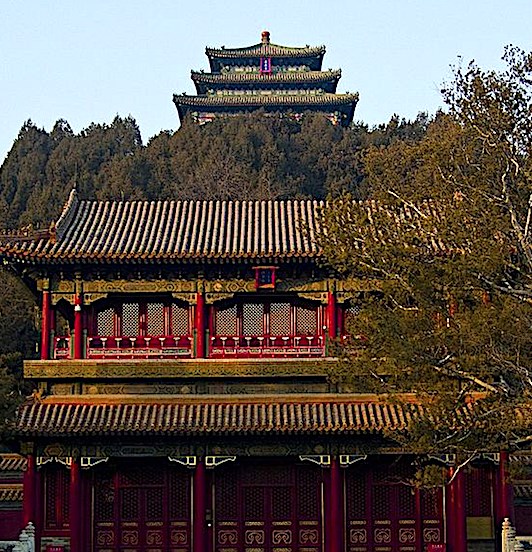
Figure 28a: A recent photograph of Prospect Hill. Source: Wikimedia Commons
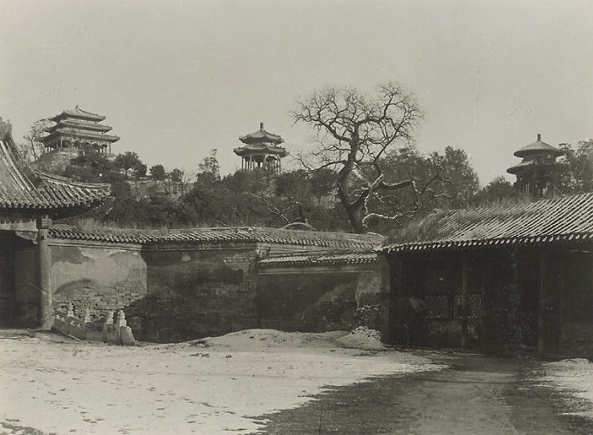
Figure 28b: An early twentieth century photograph of Prospect Hill. Source: Wikimedia Commons
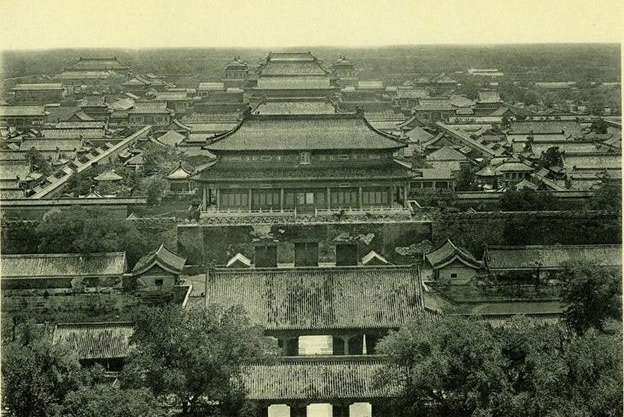
Figure 28c: An early twentieth century photograph of the Shenwu Gate at the northern end of the Forbidden City taken from Prospect Hill. Source: Wikimedia Commons
Most of the Forbidden City’s other distinctive features can also be understood in terms of fengshui considerations. Each of the gates on the southern wall, for example, occupied the dangerous Li position in relation to the Kan location of Beijing. For this reason, various modifications had to be introduced. Thus we find a wooden tower erected above the already massive Front Gate (Qianmen 前門) linking the Inner and Outer Cities, in order to facilitate the mutual production of “agents” rather than a stark opposition; that is, water to wood to fire, rather than the simple contrast of fire to water. Reflecting the same cosmological elements, but a somewhat different geomantic logic, an artificial stream known as the Golden Waters (Jinshui 金水) in the southern part of the Forbidden City had the effect of neutralizing the “fire” of the southern Meridian Gate before it could reach the “water” of the Inner Court. In terms of yinyang influences, the yang of the northwest gate (Xizhi men) balanced the yin of the Qian men, just as the yang of the east gate (Chaoyang men 朝陽門) stood harmoniously juxtaposed to the Qianmen.
A more thorough discussion of the fengshui of Beijing, or that of any other Chinese city, would require an entire book, and present interpretive difficulties even greater than those attending the analysis of graves and homes. For in addition to considering the vast number of ordinary cosmological and topographical variables, one would also have to take into account the relationship of myriad man-made structures to one another, as well as their relationship to the larger celestial and terrestrial environment. Such an effort would bring to light all sorts of inconsistencies and apparent contradictions.[107]
Yet complexity never disabled geomantic analysis; it only invited different explanations. Whether a geomancer was concerned with an entire city or a simple grave, he evaluated the site in much the same way that a traditional Chinese doctor diagnosed a patient, relying on fixed cosmological principles as well as direct observation, and trusting to both logic and instinct. In the words of Ye Tai’s 葉泰 Dili dacheng 地理大成 (Great synthesis of geomancy):
Life breath cannot be conveyed in words, but only recognized by the eye. If you can recognize life breath, then you need not recognize the stars [shapes], nor analyze the stems and branches, nor investigate the site conditions, nor distinguish the eminences and the waters. Yet when you pick a site for someone, it will always be right—how is this? It is because all the multifarious methods were devised for no other purpose than to seek out life breath; when life breath is found, there is no longer the least need to discuss the methods.”[108]
In geomancy, as with medicine, the bottom line remained efficacy.
Chinese Geomancy in Practice
Practitioners of geomancy in Qing times ranged from high officials such as Zhao Zhixin 趙執信 (1662–1744), Li Wentian 李文田 (1834–1895) and Zhang Zhidong 張之洞 (1837–1909) to commoners whose names are forever lost to history.[109] According to the Qingbai leichao 清稗類鈔 (Classified anecdotes from the Qing Dynasty), even some Qing emperors were considered conversant in the geomantic arts.[110] Every Chinese bureaucratic office, from county magistrates all the way up to governors-general, had a yinyang bureau specializing in various forms of divination, including geomancy, and many local gazetteers provided specific information on the location and power of “dragon veins” in the area.[111] And, of course, at the capital, officials in the Imperial Bureau of Astronomy 欽天監 were responsible for interpreting portents and determining auspicious days, times and directions–including, of course, the timing and location of state burials (see below)[112]
The clients of fengshui specialists likewise spanned the entire Chinese social spectrum, from emperors to peasants, loyalists to rebels.[113] Some geomancers were professionals; others, amateurs with varying degrees of expertise. Some enjoyed excellent reputations and numerous clients, while others were no more than crass and opportunistic charlatans. A few claimed unique supernatural skills, such as the ability to see deep into the earth; and, despite regulations in some monasteries prohibiting the practice of geomancy and certain other forms of divination, there were also a number of Buddhist and Religious Daoist fengshui practitioners, including the eminent Chan abbot Xuyun 虛雲 (1840–1959).[114] Not surprisingly, at times, geomantic specialists came into conflict with Buddhist monks and Daoist priests over issues related to burials.
Nineteenth and early twentieth century accounts of geomancers depict them as affecting a scholarly manner, wearing long gowns, travelling in sedan chairs, and carrying books—one or more fengshui manuals, an almanac and perhaps a copy of the Yijing. According to one knowledgeable Westerner: “About all their movements there is an air of classic decorum; and it is no wonder, therefore, that the masses regard the geomancers as fountains of wisdom, marvels of learning, capable of fathoming all the mysteries of heaven and earth.”[115] [Figure 29; see also Figure 13 above] This scholarly style may well have been only an affectation in some cases, but many of those who practiced geomancy in late imperial China actually came from literati backgrounds. Among the nearly five hundred Qing dynasty fengshui practitioners I have studied, there are dozens of degree-holders, not to mention a number of exam failures.
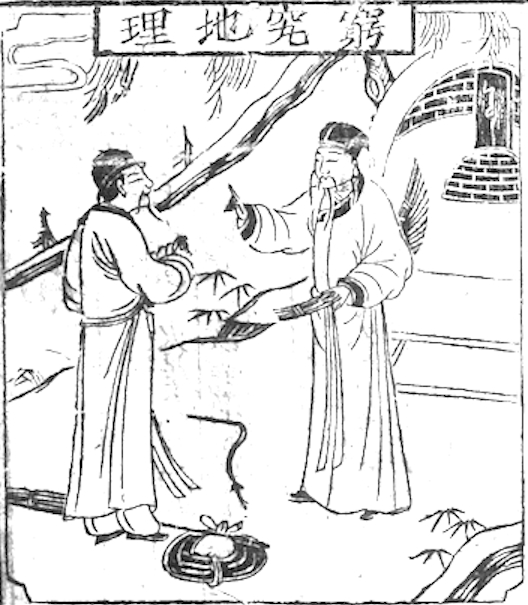
Figure 29: Representation of a fengshui specialist from the first page of the “Geomancy” section (kanyu men 堪輿門) of a late Ming encyclopedia. The inscription reads: “Exhaustive Investigation of a Geomantic Site.” Source: Wanbao quanshu 萬寶全書(Complete collection of myriad treasures; 1636)
No doubt because of the scholarly air that geomancers tried to cultivate, and the fact that scholarship was identified as a predominantly male domain in traditional China, biographies of women fengshui specialists in local gazetteers and other such sources are extremely difficult to find.[116] We know, however, that in their daily lives Chinese women sometimes took an active role in geomantic affairs, and that at least some of them “read books on the subject.”[117] We should also remember that alternative sources of divinatory authority—from popular written texts such as almanacs, to professional fortune-tellers, spirit-writers and other mediums–could always be used for geomantic information. Geomancers naturally disdained these “outside” competitors, but in fact their own mantic skills were seldom confined exclusively to fengshui.[118]
As diviners, geomancers operated at a point where the mental (and physical) worlds of the scholarly elite and commoners overlapped and interacted. They were, in fact, self-conscious agents in this complex interactive process. Many served both social groups, but few felt entirely comfortable with either. As technical specialists, their geomantic talents were at once prized and looked down upon by the Confucian literati; while their scholarly pretensions stood in the way of closer relations with their less exalted clients. Generally speaking, geomancers seem to have enjoyed the highest social status in south China, where fengshui practices were most pervasive and deeply entrenched; but even in the north they were almost always accorded a certain deference, at least by their clients.[119]
In some respects, fengshui specialists stood apart from the ordinary religious system as “observers of nature” who, like Zhu Chou, might appeal to an orthodox neo-Confucian metaphysics. On the other hand, they often operated like priests, employing methods familiar to all devotees of Chinese popular religion. Not only did they actively manipulate the physical environment in various ways for the purpose of improving the fortunes of their clients, but many also performed graveside rituals, and some wrote charms or chanted spells for anxious constituents. Tales of their power (and their limitations) were perpetuated in traditional Chinese folklore, both by word of mouth and by means of vernacular literature (see below).[120]
Fengshui manuals devote considerable attention to the charms and spells used for amplifying the normal “strength” (shi 勢) of a location and in “stabilizing” (zhen 鎮) a structure.[121] Activated by geomancers themselves or by Daoist priests, these talismans were reportedly capable of warding off sickness, injury and calamity. Many had quite specific applications. The geomantic guidebook titled Yangzhai jing 陽宅經, for instance, provides written charms appropriate for houses sited too near monasteries or temples, houses whose inhabitant’s children do not perform well in school, and so forth. Such works often provided guidelines regarding the size of charms, the kinds of materials on which they should be written, and the type of writing ink to be used. [Figure 30] Some charms invoked the names of popular deities, such as Guandi 關帝, the God of War, while others relied on ferocious natural images, such as that of the tiger, for protection.[122]
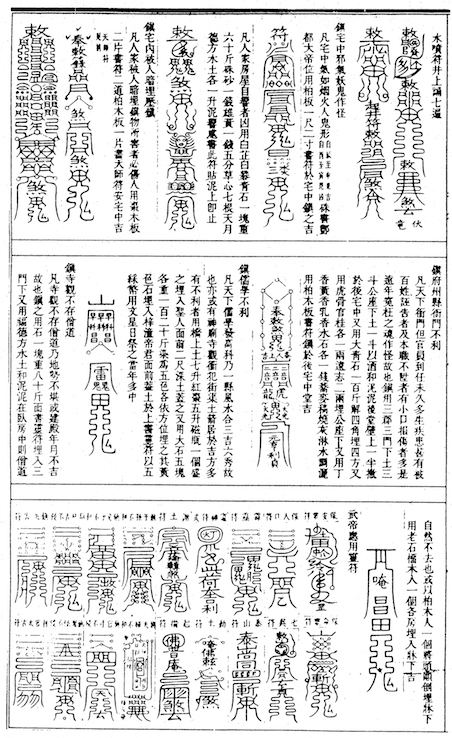
Figure 30: Geomantic charms. Source: TSCC, vol. 47
Octagonal representations of the eight trigrams, with either the yinyang symbol (Taiji tu 太極圖) or a mirror in the middle to ward off evil spirits, graced many homes and buildings throughout China, complementing devices such as “shadow walls” (yingbi qiangi 影壁墙), which were usually adorned with auspicious symbols or inscriptions and placed in front of doorways and designed to prevent access by evil spirits on the theory that evil spirits (gui 鬼) could only travel in straight lines. [Figure 31a–c] The use of certain painted colors on buildings, depicting one or another of the five agents, might compensate for deficiencies in location or orientation; and graves commonly had felicitous inscriptions and/or the yinyang motif carved on the headstone, since such symbols in effect “created” the reality they represented.[123] [Figure 32]
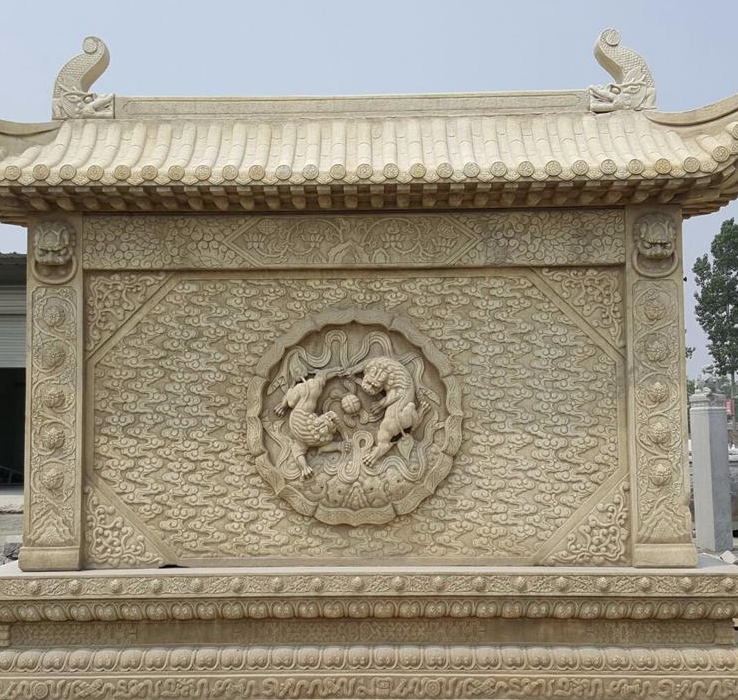
Figure 31a: A “shadow wall” adorned with protective lions. Source: Wikimedia
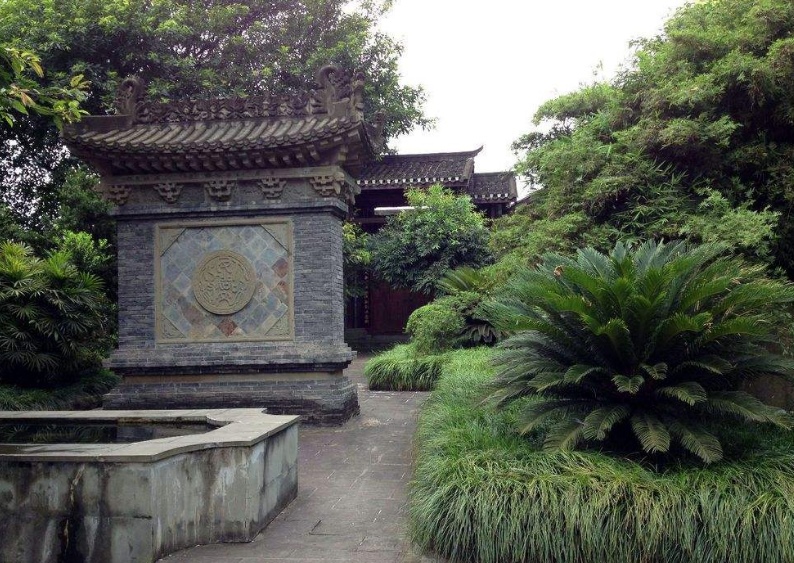
Figure 31b: A “shadow wall” with unclear symbolism. Source: Wikimedia
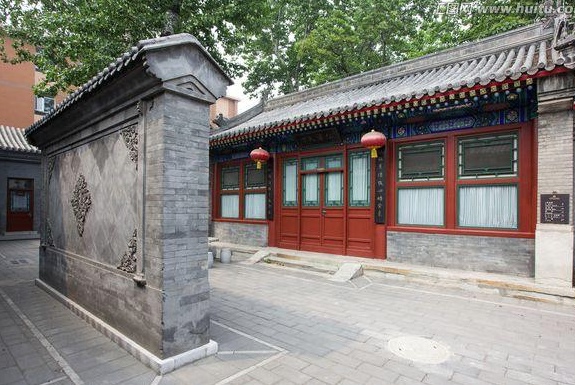
Figure 31c: A “shadow wall” with unclear symbolism. Source: Wikimedia
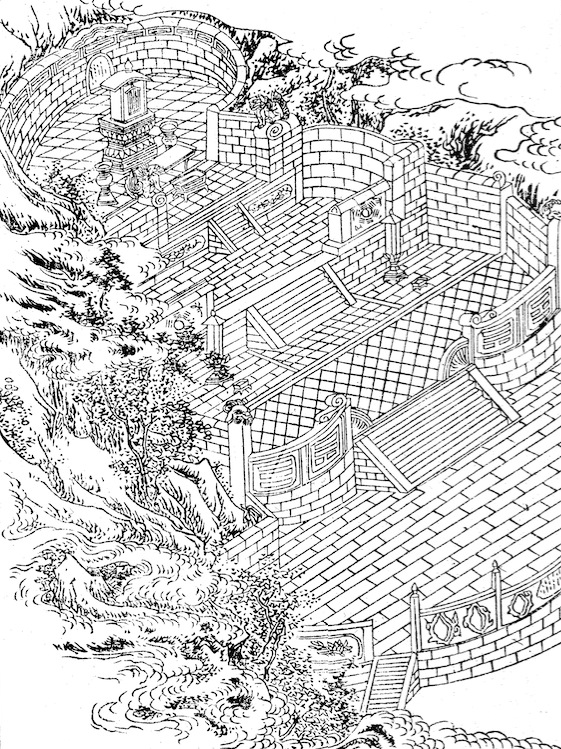
Figure 32: Line drawing of a southern-style Chinese grave. Note the horseshoe-shaped site, the protective animals, the mid-level eight trigrams surrounding the Taiji symbol, also for protection, and the four trigrams near the base (right-to-left, Li, Sun/Xun, Sun/Xun and Qian, representing Fire, Wind and Heaven, respectively). These trigrams were designed to give the grave additional geomantic power––presumably by rectifying perceived cosmological deficiencies. Source: Nakagawa Tadahide 中川忠英, Shinzoku kibun 清俗紀聞(An account of Qing customs, 1799)
As already indicated, the most important application of geomancy in Qing China was to identify the proper burial place for one’s deceased parents and other ancestors. This instantly placed fengshui at the vortex of Chinese mortuary ritual, with all of its perplexing variety across space and time.[124] Yet despite significant differences in specific burial practice from region to region, there were several important common denominators. At all levels of Chinese society, in almost all parts of the empire, professional geomancers gave advice to bereaved families on matters such as the placement of the body on the deathbed (and the coffin in the hall), the siting and depth of the grave, and the orientation of the coffin at the gravesite, where ancestral sacrifices were periodically offered. [Figure 33] They determined the most auspicious times for the encoffining, procession, and burial rituals, and provided information on which individuals outside the immediate family might be too vulnerable or astrologically unsuitable to be allowed near the corpse. And, as indicated above, they also often wrote charms to stabilize/neutralize malevolent forces, and to purify the home.
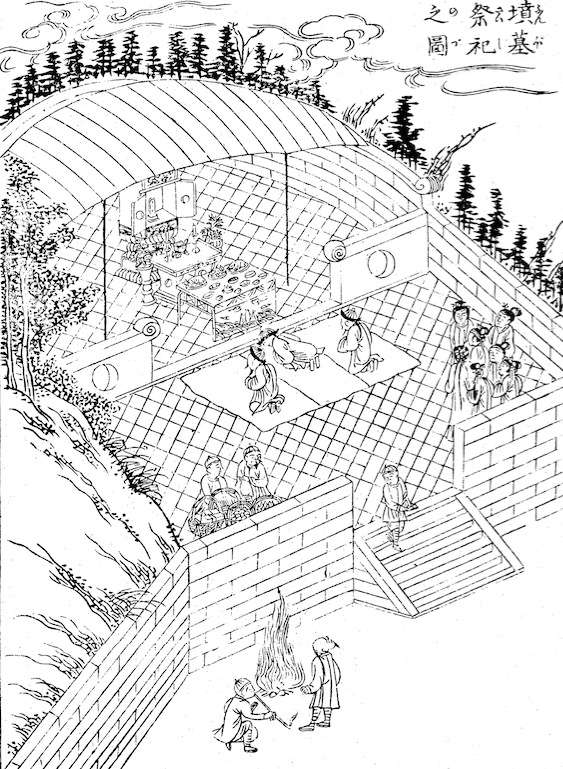
Figure 33: Ancestor worship at a Chinese gravesite. Note the protective trees surrounding the east, north and west sides of the tomb. Source: Nakagawa Tadahide, Shinzoku kibun.
In southeastern China, the reburial of ancestral remains was widely practiced, requiring the multiple employment of geomancers. Sometimes the deceased were placed in temporary graves until a proper gravesite could be located or until arrival of the most propitious time for permanent interment. On other occasions, a decline in family fortunes provided the incentive for reburial. If for any reason an ancestral grave lost its “good fengshui,” a new site and time for burial had to be chosen by a geomancer. The bones of the deceased were then exhumed and placed in an urn—although only the urns belonging to families for whom geomantic reburial had become important and financially possible were actually placed in new graves: “Urns awaiting second burial are stored in the open air, near the fields or on a hillside; and in reality, most of them are never moved from this position. They may begin by being tended as the potential contents of a final grave, but after the lapse of a generation they are more likely to turn into anonymous pots, weathered until they crack and spill their irrelevant bones on the ground.”[125]
The practice of fengshui was not normally a hereditary occupation.[126] Fathers and grandfathers occasionally provided geomantic guidance to their progeny, but most fengshui specialists, quite naturally, directed the attention of their children toward success in the civil service examination system, rather than perpetuation of a geomantic family tradition. Jia Yanling 賈延齡, for example, orphaned at nine and forced into the self-study of geomancy and medicine in order to support his mother, provided a much-admired model for filial piety by educating two sons who, in fulfillment of their grandmother’s ardent wishes, passed the exams.[127] A number of aspiring fengshui practitioners served an apprenticeship, and some made long pilgrimages of study to renowned centers of geomantic activity, such as Ganzhou, in Jiangxi, or Shanghai, in Jiangsu.[128] But even respected teachers of the geomantic arts did not always encourage emulation. Zhao Yanhua 趙延華, for one, bluntly told his followers to study the Four Books and Five Classics of Confucianism rather than his own writings.[129] In the absence of a well-developed tradition of either hereditary transmission or systematic appenticeship, book-learning became a common means by which geomantic knowledge could be acquired in Qing dynasty China. Judging from nineteenth century accounts, fengshui manuals were available everywhere in great profusion—a reflection of the dramatic expansion of both printing and literacy in late imperial times.
Most extant works on geomancy cover the same basic ground, although individual formats differ substantially. Some manuals are highly abstruse and technical while others are relatively easy to understand. A particularly complex sixteenth century work by Xu Shanji 徐善繼 and Xu Shanshu 徐善述, titled Dili renzi xuzhi 地理人子須知 (What people must know about geomancy) had remarkable spread and staying power. Despite its great length (nearly fifty juan 卷, plus appendices) and its extraordinary detail (the work cites more than one hundred references), it was reprinted a great many times during the Ming and Qing dynasties, and proved to be extremely popular in Korea for centuries as well—usually published under the simple title Inja suji 人子須知 (What people must know [about geomancy]).[130] [Figure 34] A shorter but still substantial version of the work, seems to have been popular in Vietnam, as we shall see. In testimony to the enduring appeal of the Dili renzi xuzhi, several modern editions have been produced in China and Korea as recently as 2012.[131]
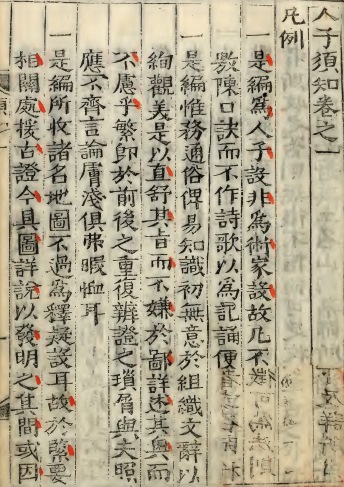
Figure 34: The first page of the guidelines (fanli 凡例) for using the Dili renzi xuzhi. The emphasis here and elsewhere in the book is on the employment of the document by filial sons, not professional geomantic specialists. Source: Xu Shanji and Xu Shanshu, Dili Renzi xuzhi
Many works on fengshui commence with a general discussion of fengshui principles, often couched in explicitly Confucian terms, with perhaps an introduction to the topographical features of China as a whole—notably its great river systems and mountain ranges. Sometimes they also subdivide China into provincial units or into various fenye schemes, since the fengshui of any given locality was, of course, subordinate to the large macrocosm. Works that include a historical overview generally trace the origins of geomancy to the Yijing, citing passages that emphasize the relationship between heavenly patterns and earthly forms. They also refer reverentially to such great early practitioners of the art as Guan Lu and Guo Pu. The main body of each text discusses the concrete celestial and terrestrial variables involved in geomancy and how to interpret them. Most works contain a large number of illustrations, including not only depictions of celestial configurations and their relation to landforms, but also various charts and diagrams (many based on the eight trigrams, the najia 納甲 and nayin 納音 schemes, etc.).[132] Many include songs and rhymes to facilitate memorization. The most noteworthy features of this vast literature are its sophistication, eclecticism, and correlative emphasis.[133]
One of the most influential books on fengshui produced in the Qing period was Jiang Pingjie’s 蔣平階 (1616–1714) Dili bianzheng 地理辨正 (Distinguishing orthodoxy in geomancy). Jiang, also known as Jiang Dahong 蔣大鴻, received his initial instruction in geomancy from his grandfather during the late Ming, and proceeded to study the art assiduously for the next thirty years, investigating written materials as well as natural topography. He invented a widely-used compass, and many people considered his book to be the only reliable source on the subject in the early Qing period.[134] Even his admirers considered the language of his opus obscure, however, and so they attempted to clarify his ideas. The most successful effort of this sort was made by Jiang Guo 蔣國, whose Dili zhengzong 地理正宗 (Correct standard of geomancy; aka Kanyu daquan 堪輿大全 [Great compendium of geomancy]—named after a book by the same title attributed to Guo Pu—is cited repeatedly as authority in the Tushu jicheng section on practitioners of the geomantic arts.[135] Other popular geomantic works produced in the Qing period included Hao Jibao’s 郝繼堡, Kanyu zhinan 堪輿指南 (A Guide to Geomancy); Jiang Yitang’s 蔣一鏜 Dili beiyao 地理備要 (Essentials of Geomancy), and Cheng Sile’s 程思樂 Dili sanzi jing 地理三字經 (Three-Character Classic for Geomancy).[136]
The biographies of geomancers in Qing gazetteers attest to what many fengshui manuals aver: that field investigation is indispensable for the proper evaluation of a site. “Climb the heights, look into the depths, bear hunger and thirst and every discomfort,” one authority advised an aspiring disciple.[137] Although some sources describe the search for a good site as a rather dignified affair, with travel by sedan chair and somber evaluations of the terrain, other accounts suggest that a geomancer might trundle off on foot for four or five li (over a mile) and display unbridled enthusiasm over the discovery of the right location.[138] Many fengshui specialists traveled extensively in the course of their profession, not only at the behest of clients, but also in the pursuit of geomantic knowledge.[139] At the same time, the localism of Chinese culture resisted the full assimilation of such sojourners, and they almost invariably invited suspicion wherever they went.
Why would a literate Chinese go to the trouble of studying geomancy? According to local gazetteers, which naturally reflect the biases of their Confucian compilers, filial piety offered one compelling reason. Concern for the well-being of one’s parents, both in life and after death, found expression in a popular adage: “No man’s son should be ignorant of mountains [i.e. fengshui] or medicine” (為人子不可不知山不可不知醫).[140] The idea of geomancy as a morally-oriented enterprise finds expression in the titles of several famous works, including at least one version of the book by Xu Shanji and Xu Shanshu, titled Renzi xuzhi zixiao dili xinxue tongzong 人子須知資孝地理心學統宗 (A comprehensive summary of what people must know about geomancy in the service of filial piety), mentioned briefly above.[141] Another influential book of the same sort, compiled by Zhou Meiliang 周梅梁 in the Qing, was titled Dili renxiao bidu 地理仁孝必讀 (Book on geomancy that must be read by the humane and filial).[142]
Stories of scholars who studied geomancy to fulfil their filial responsibilities abound. We read, for instance, of Xia Bingnan 夏炳南, who took up geomancy after having been fooled by unscrupulous fengshui specialists in the course of trying to find a gravesite for his ancestors, and Li Xingyu 李興禹, who, after being orphaned as a child, eventually studied geomancy in Jiangxi, and returned to his natal home in order to give his parents a proper burial.[143] In the minds of these individuals, and a great many others as well, the only legitimate reason for selecting a proper burial site was to put the mind of the deceased to rest, not to seek good fortune. Such stories can be multiplied indefinitely.[144]
Many geomantic practitioners, including professionals, asserted that efficacious geomancy required moral rectitude, for in the end, “heavenly principle” (tianli 天理) would always triumph over “earthly principle” (dili 地理).[145] Viewed cynically, this emphasis on morality might appear to be nothing more than a convenient way for geomancers to explain away wrong predictions.[146] On the other hand, it seems evident that a substantial number of fengshui specialists genuinely believed in the ultimate power of moral action.[147] Although separated by time, space, and social class, individuals such as Huang Zhuocheng 黃卓誠, Nie Ting 聶庭, Li Qingxi 李清溪, and Zhao Dongzhou 趙東周 all refused to talk about wealth or poverty, stressing instead the need for their clients to accumulate virtue (jishan 積善 or jide 積德).[148] Guan Wenkui 管文奎 emphasized “moral grounding” in choosing auspicious land, and Liu Xianjia 劉先甲 told his clients that a good heart/mind was better than a good site.[149] Ma Bailing 馬百良 tried to assure that his clients were virtuous, and Lin Shizhe 林士者 likewise expressed his steadfast determination to help only those who were upright and honest.[150]
Altruism apparently motivated many fengshui specialists, for a large number are reported in local gazetteers to have enjoyed simply “helping people.”[151] Wang Huaguo 王華國 assisted those who could not afford to bury their relatives, while Wu Zhenchuan 吳鎮川 provided the poor with both medical aid and free burials. Wang Xingzhen 王星軫 and Yang Shutai 楊書臺 likewise served the poor in their local communities, asking nothing in return.[152] Local sources from the Qing era record a large number of geomancers who refused to accept any money for their services, and a few who would take it only if their client’s family became prosperous.[153] Significantly, at least some public-spirited geomancers, notably Wang Xingzhen and Yang Shutai, played important roles in their local communities as mediators.[154]
Fengshui experts might take as their task the improvement of entire cities. Thus, Fang Zhengming 方正明 brought geomantic benefits to Guichi, Anhui, by determining the proper time and location for the construction of a temple to Wenchang, the God of Literature.[155] When Qin Luhai’s 秦陸海 home county of Qingyun (Hebei) failed to produce an examination success for more than forty years in the mid-nineteenth century, he sought the causes in the physical structure of the county seat. After a careful investigation of the situation, he made his recommendations to the local gentry for the renovation of several buildings. They followed his instructions to the letter, and the county soon began to produce successful civil and military candidates.[156] Li Youlong 李友龍, from Yongxing county in Hunan, showed a similar commitment to his local community, but he enjoyed far less satisfaction. When the leaders of Yongxing decided to build a pagoda in the southern sector of the city, he advised them not to, on the grounds that the structure would harm its “scholarly air” (wenfeng 文風). They went ahead with the building, however, and examination hopefuls from the town suffered for several decades until the pagoda was finally destroyed.[157]
Some individuals took up geomancy under financial duress, in order to support their families.[158] Others, such as Gao Jiyang 高激揚, sought to alter their own personal or family fortunes. Because Gao’s ancestors tended to have only one son per generation, he studied geomancy in the hope of finding a graveyard for his father that would produce more male heirs for the family. Apparently, he found the right spot, for subsequently he had five sons, and his eldest son in turn fathered five sons.[159] Wang Chenglie 王承烈helped find the right place and time to build a house for a relative who, at the age of sixty, had no male heirs. After construction of the house, he produced two sons.[160] Family interests also impelled individuals like Xie Xianting 謝獻庭, who selected a site for his own burial that would benefit future generations. When, thirty years after his death, one of his sons (Xie Lanjie 謝蘭階) helped suppress the Taiping Rebellion (1851–64), Xianting received a posthumous reward from the throne.[161]
At times, altruism and self-interest intermingled. Consider the case of Li Yiqing 李一清, a low degree-holder described in the Xincheng (Jiangxi) gazetteer of the Tongzhi 同治 period (1862–74) as “invariably successful in divining auspicious burial grounds.” Employed by one Chen Yuan 陳元 of Zhongxi, Li found a suitable resting place for his client’s father, but pointed out to his employer that although the location would bring prosperity to Chen’s family, it would not be beneficial to either himself or Chen personally. He therefore wanted assurances that his own heirs would be taken care of in the event that something happened to him. As it turned out, Chen died at the age of thirty and Li became blind. But Li’s daughter married Chen’s younger brother according to agreement, and the two families prospered together, enjoying a harmonious relationship.[162]
Some fengshui masters clearly hoped to make a windfall by sharing in the prosperity of their clients—either those who were wealthy or those who would become so. Significantly, however, the geomancers who merit biographies in local gazetteers are seldom explicitly described as professional diviners (maibu 賣卜). One reason may be that they often had other occupations as teachers, doctors, and so forth, making fengshui a sideline rather than a full-time profession. We may also assume that for those of a scholarly background or self-image, receipt of a salary or fee would be considered too demeaning. Sometimes, however, a rich family or lineage would keep a geomancer on retainer, providing him with his entire livelihood. This made particular sense for lineages, since they had to consider the proper location of the ancestral temple as well as individual and collective gravesites.[163] At least a few individuals struck bargains with their clients for shared profits, on the assumption that a well-chosen site, particularly a grave, would bring financial prosperity to the family of the deceased.[164]
Quite often geomancers received a comparatively small salary, but were entertained lavishly during the period of their employment, which might last several days or more. For this reason we find that Chinese sources often refer to fengshui specialists as being “invited” (qing 請) by their clients, rather than simply employed.[165] One vivid late Qing account indicates that for even a simple and straightforward divination the geomancer must be “treated well, with good food and good things to drink.” First, we learn, the head of the family invites the fengshui specialist into his house. He then asks him to sit down in the guest room. “The stove is lit; the teapot rinsed; and the finest tea, costing 960 cash, is used for the infusion. The guest is asked . . . to take the place of honor and tea is served to him.” In all this, he is shown the greatest respect (gonggong jingjing 恭恭敬敬). At dinner, four special dishes and a jar of wine are ceremoniously placed before him. After choosing the gravesite, the geomancer returns to his host’s home. At this point, “someone is sent to the silk storehouse to buy for him the material for an outer coat and inner robe, a pair of boots, and a cap. He is also given about ten strings of cash [i.e., about an ounce of silver]. Finally, he is brought home in a two-horse cart.”[166]
Geomancers naturally sought the prestige of high places, whether or not the quest actually brought them wealth (which it often did). After all, metropolitan officials and the Qing court itself were no less eager than local elites and commoners to find auspicious locations for tombs and other structures. The historical record therefore abounds with anecdotes concerning the employment of fengshui specialists by the throne and Chinese bureaucrats. As early as the Shunzhi 順治 reign (1638–1661), Wan Guoning 萬國寧 placed first in a set of special metropolitan examinations on the geomantic topic “dragon lairs, flanking features and water” (longxue sha shui lun 龍穴砂水論), suggesting the Qing government’s interest in such matters. And at about the same time, the scholar Kang Zhengji 康正吉 was one of several individuals called upon by the Shunzhi court to find graveyards for the royal family (see below). In recognition of Kang’s services, the throne gave him a temporary position in the Bureau of Astronomy and subsequently appointed him to be a prefect.[167]
Later in the Qing period, a number of other geomancers served the throne directly. The renowned fengshui specialist Ping Zhang 平章, for example, was ordered by royal decree to choose an auspicious burial spot for the family of the Duke of Yansheng, a direct descendent of Confucius.[168] Similarly, Li Genchang 李根暢 of Shanxi province, who captured the attention of some high officials because of his mantic skills, went to Beijing, where he soon became famous. Imperial princes and other nobles invited him to their palaces as a consultant, and he was amply rewarded by them.[169] A number of other geomancers, such as Zhou Yingji 周應驥 and Guan Zhining 管志寧gained important bureaucratic titles and even actual positions from the Qing court in recognition of their service to the dynasty.[170] Moreover, some siting specialists were already bureaucrats. Gao Qizhuo 高其倬, for instance, a jinshi degree holder and a high metropolitan official, was summoned at least once by the Yongzheng 雍正 emperor (r. 1723–35) to assist in improving the fengshui of the Qing tombs.[171] [Figures 35a-c]
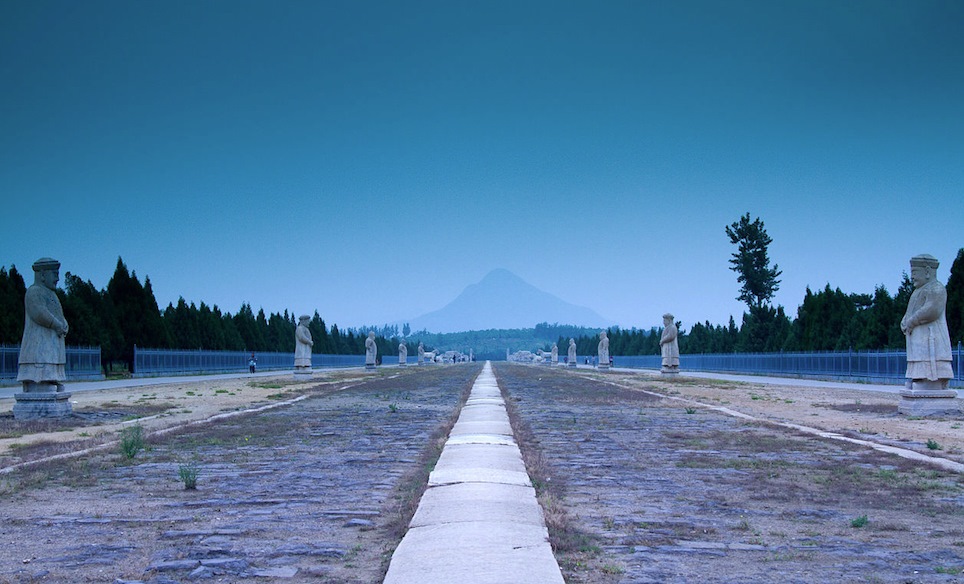
Figure 35a: The “Sacred Way” (神道) leading to the Eastern Qing Tombs. Source: Wikimedia Commons
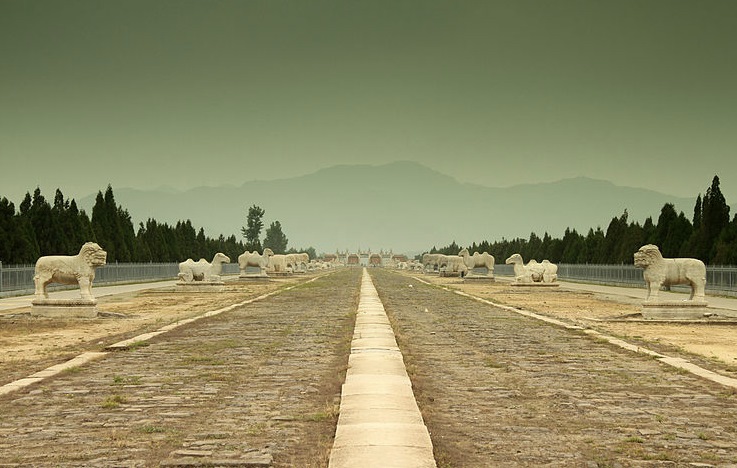
Figure 35b: The “Sacred Way” leading to the Western Qing Tombs. Source: Wikimedia Commons
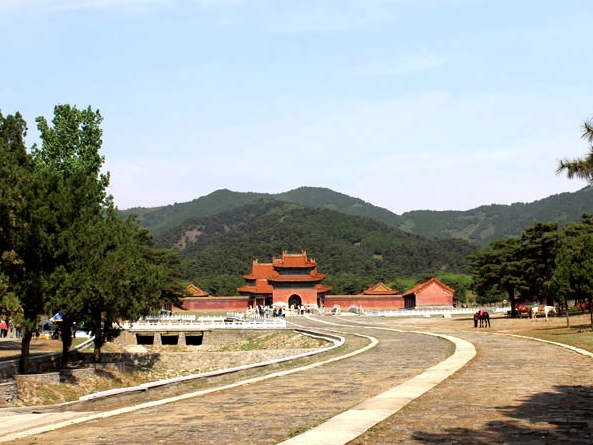
Figure 35c: A section of the Eastern Qing tomb complex. Source: Wikimedia Commons
Figure 35d: A contemporary illustration of the Eastern Qing tombs. Source: Wikimedia Commons
At the lower levels of the Chinese government, geomancers also served in a variety of capacities. Officials from provincial governors down to county magistrates constantly sought the services of specialists in siting who could not only supervise the details of construction and/or repair of walls, gates, yamens, schools and temples, but also determine the most propitious time for beginning work.[172] Indeed, most officials had geomancers as part of their permanent yamen staff in so-called yinyang bureaus.[173] Moreover, by virtue of their intimate knowledge of both terrain and waterways, fengshui experts often assisted officials in the management of public works. Thus, when the Wen river near Qianshan, Anhui, flooded, Wang Baile 王佰樂 helped local officials to bring it under control.[174]
Sometimes low-ranking bureaucrats undertook geomantic work themselves. When, for example, the Qianlong emperor wanted to build a canal to avoid the hazards of travel on the Yangzi River from Zhenjiang to Jiangning, Zhang Pangui 章攀桂, a Military Intendant from the Shanghai area, observed the situation and offered valuable advice for construction.[175] During the Guangxu 光緒 period (1875–1908), the dikes of the Yellow River broke in several places, flooding dozens of counties. Governor Li Bingheng 李秉衡 (1830–1900), hearing of magistrate Xu Guifen’s 許桂芬 reputation as a geomancer, summoned him to help contain the situation. After “looking up at the heavenly patterns and down on the terrestrial configurations” (a rather presumptuous cliché borrowed from the Yijing by the compilers of the Xu clan genealogy),Xu made geomantic calculations and determined a day for dike repairs on which the “stars of the earth” (tuxing 土星) were powerful and those of the water (shuixing 水星) were weak. Needless to say, considering the source, the repairs were completely successful, and Xu received an official promotion for his efforts.[176]
The accomplishments of such individuals were often recorded in provincial, prefectural and county gazetteers—sometimes with a sense of awe. During the Qianlong 乾隆 era (1736–95), for example, Zhao Tingdong 趙廷棟, an official in retirement, was invited by the magistrate of Pengxian, Sichuan, to give advice concerning the repair of his yamen (office) as well as changes in the gates of the city. Prior to the modifications suggested by Zhao, a number of candidates from Pengxian had failed the civil service examinations, but thereafter the city boasted several noteworthy successes. “Is this not,” the compilers of the Pengxian gazetteer asked, “reason to believe in the theories of fengshui?” Zhao later published two books on geomancy, one titled Yangzhai sanyao 陽宅三要 (The three essentials [of site selection] for the living ) and the other titled Dili wujue 地理五訣 (Five geomantic formulas).[177]
Not surprisingly, Qing officials, like other elites, sought to take personal advantage of fengshui specialists.[178] They even invited them to their homes—for example, the eccentric Fu Sheng 富生 of Jiangsu, who, because he went without shoes year-round, was known as the “Barefoot Immortal on Earth” (chijiao dixian 赤腳地仙).[179] Geomancers such as Wang Jihong 王績宏 were in constant demand by virtue of their reputation for picking ancestral land that yielded examination successes.[180] Among the many famous officials for whom geomancers served in a personal capacity were Chen Hongmou 陳宏謀 (1696–1771), Wei Yuan 魏源 (1794-1856), Tao Zhu 陶鑄 (1779-1839) and Ding Richang 丁日昌 (1823–1882).[181]
Geomancy served the interests of the dynasty in negative as well as positive ways. Although favorable fengshui could improve the fortunes of individuals, families, clans and entire communities, it could also be denied to perceived enemies of the state. Although Chinese law provided harsh punishments for the destruction of graves, and enforced infractions with a vengeance,[182] the throne had no compunction against destroying the burial grounds of rebel leaders and their families in order to damage their fengshui. In fact, this was one of the Qing government’s first reactions to large-scale popular uprisings such as the Taiping Rebellion.[183] For the same reasons, but with a somewhat different intent, the Qing government reportedly tried to ruin the geomantic fortunes of a place known as Dragon Pool 龍池 in Taiwan, where, rumor had it, a new (non-Manchu) emperor would be born.[184]
Similarly, in 1899, Yingnian 英年, a high-ranking Manchu official known for his geomantic ability, was reportedly walking together with the Empress Dowager, Cixi 慈禧 (1835–1908), and her entourage near the grave of the first Prince Chun 醇賢親王, Yihuan 奕譞 (1840–1891), father of the Guangxu 光緒 emperor. The Empress Dowager, ever mindful of politics, asked Yingnian whether the site was auspicious or not, whereupon Yingnian replied that its qi was still quite powerful, and that in the next generation it would produce another emperor. At that time, Pujun 溥儁, son of Cixi’s political ally, Zaiyi 載漪, was presumed to be the Guangxu emperor’s successor. Fearing that her plans might be spoiled by the positive fengshui of the garden, the Empress Dowager wanted to know how to counteract its influence. Yingnian’s advice was to chop down an old Gingko tree near the grave; but when Cixi’s attendants tried to cut the tree down it proved to be “as hard as iron.” Finally, after much effort, they toppled the tree, exposing a huge nest of snakes—which in Chinese folklore are associated with dragons, the symbol of imperial rule. Yingnian’s prophecy proved true when, after Pujun had been deprived of his status as heir apparent in the wake of the Boxer Rebellion, Puyi 溥儀, grandson of Yihuan, became emperor in 1908.[185]
Criticisms of Geomancy
Fengshui was by no means an unmixed blessing in China. Geomancers, like fortune-tellers generally, were often stigmatized as unscrupulous people, and indeed, the word “deceit” (huo 惑) is commonly found in legal codes and other elite descriptions of their mantic activities. A stock expression begins, “Stupid people, misled by fengshui (愚民惑於風水), . . .”[186] Although many practitioners performed laudable social and political roles, the application of their diagnostic and prognostic skills did not always seem to be in the best interest of their clients. A popular Qing proverb went: “If a family employs a geomancer, it might as well move” (jia you yinyang zhai fangzi nuoqilai 家有陰陽宅房子挪起來)—suggesting that a fengshui specialist like Sun Pafang would tinker with a dwelling until it is completely transformed, presumably out of a selfish concern for his own financial benefit.[187] Geomancers were also the target of many jokes and sarcastic stories in popular literature.[188] But the question remained: what filial son or devoted parent could afford to take the chance of selecting an inauspicious location for a grave or dwelling, or of failing to improve upon one that already existed?[189]
This sort of uncertainty, together with the power of popular folklore, produced a profound ambivalence toward fengshui on the part of many Qing elites. Emperors denounced the practice at the same time that they employed it. Thus, for example, despite the above-mentioned instances of royal recourse to geomancy (only a few of many), the Yongzheng emperor’s Shengyu guangxun 聖諭廣訓(Amplified instructions on the Sacred Edict; 1724) states: “Believing in the heretical theories of fortunetellers and geomancers . . . is punishable by death (信陰陽風水邪說云云這都是死罪).[190] Although some Chinese genealogies and “clan rules” expressed disbelief in geomancy and others affirmed it, most seem to have adopted an openly equivocal stance.[191] Thus we read in the genealogy of the Zhang lineage (1887): “Although we should not completely believe in geomancy, yet if a location is damaged, those involved seldom escape the harmful effects.”[192]
The individual testimony of many Qing scholars reveals a similar ambivalence about fengshui. The illustrious official Zeng Guofan 曾國藩 (1811–1872), for example, dutifully championed his grandfather’s “three disbeliefs” (in geomancy, doctors, and priests) in his home-letters; yet after the death and auspicious interment of his grandmother in 1847, he remarked: “Since . . . [her proper burial] all the household matters have prospered. My grandfather’s illness is already cured, my ailment is healed, and I have gone up to the second rank; from this can be seen the good in our fengshui. Under no circumstances must the burial place be changed.”[193]
Furthermore, when the Zeng family fortunes later declined temporarily, Guofan and his brothers readily relocated the graves of his mother and father in order to “secure better fortune for the family.” Similarly, the distinguished Grand Councilor Dong Xun 董恂 (1807–1892) once stated that he would not allow books on fengshui and other divinatory arts in his library because fortune-telling merely encouraged blind fatalism; yet on another occasion he fervently asked a neighbor not to build a high chimney near his house lest it harm the fengshui.[194] Another form of elite equivocation is evident in a Xuanen 宣恩 (Hubei) gazetteer of 1863, which explicitly distinguishes between orthodox “site divination” (budi 卜地) and the unprincipled deception (huo 惑) of fengshui specialists.[195] In this particular case, as with a great many others, scholarly criticisms were not directed toward the use of divination per se, but simply to its misuse.[196]
In part, this sort of equivocation reflects a more general uncertainty about spiritual concerns and afterlife in China. As I have argued elsewhere, the line between neo-Confucian “rationalism” and popular “superstition” was never easy to draw, and Qing elites in their day-to-day affairs made all kinds of compromises in the realm of religion.[197] Some such compromises were inspired by essentially pragmatic considerations. Hong Liangji 洪亮吉 (1746–1809), for instance, argued against popular notions of fate, immortality, and karmic retribution, yet he maintained that religious beliefs should be encouraged among uneducated commoners as devices for social control. In Hong’s view, if peasants did not submit to the idea of a heavenly-ordained and morally-grounded fate, they would behave recklessly and bring chaos to the countryside; and if they did not believe in either the Daoist idea of the accumulation of merits and demerits or the Buddhist notion of karma, they would not know the difference between right and wrong.[198]
But not all elite critics of fengshui and other forms of divination were ambivalent—especially those whose indictments of these practices were motivated by personal antagonisms.[199] The well-known author Wu Jingzi 吳敬梓 (1701–1754), for instance, apparently believed in fengshui until his examination career went bad, and then he turned against it with a vengeance. Wu clan lore ascribed the enormous literary success of his family during the early Qing period to an auspicious gravesite chosen by a geomancer named Jian Yaopo 簡堯坡; but Jingzi never attained the advanced degrees and official rank expected of him. Meanwhile, for reasons beyond his control, he had to live with the discomfiting knowledge that a permanent gravesite for his mother had still not been chosen by his family seventeen years after her death. As a result of these experiences Wu rejected geomancy and other such beliefs. In chapters 44 and 45 of his famous novel Rulin waishi 儒林外史 (The Scholars), he harshly satirizes fengshui specialists, debunking their ideas and showing them to be either frauds or fools.[200]
More successful Chinese scholars assailed geomancy through more conventional means. The influential compendium titled Huangchao jingshi wenbian 皇朝經世文編 (Writings on statecraft from the present dynasty; 1826), for example, contains several essays by high-ranking officials condemning fengshui specialists for encouraging practices such as late burial and reburial, on the grounds that both were unorthodox and unfilial.[201] In the straightforward words of Xu Qianxue 徐乾學 (1631–1694), “There is no greater crime a son can commit than to fail to bury a parent [promptly].”[202] Clan rules and local gazetteers often repeated this refrain.[203] In popular Buddhism, there was even a special purgatorial “court” in the underworld for the punishment of those who, in the name of fengshui, delayed burials and committed other such unpardonable sins.[204] Yet despite harsh legal punishments, widespread official condemnation, and possible punishment in the afterlife, delayed burials persisted.[205]
One of the most vehement critics of geomancy in Qing times was a comparatively obscure individual by the name of Chen Que 陳確, a classmate and friend of the renowned early Qing intellectual, Huang Zongxi 黄宗羲 (1610–1695). Chen was willing to grant that some forms of Chinese divination, including astrology and physiognomy, might be beneficial, at least some of the time. But geomancy, he asserted, was the most harmful and illogical of all popular beliefs—a poisonous influence among the people. Like earlier enemies of fengshui, as well as some of his contemporaries, including Huang, Chen condemned the practice on both ideological and practical grounds.Citing the ancient Zhouli 周禮 (Zhou rituals), he pointed out that families were meant to live, die, and be buried together, and that burial separate from one’s clan had once been a form of criminal punishment. How, then, could decent people encourage separate burials out of self-interest? And if geomancy was indeed practiced for reasons of filial piety, why did not the great culture heroes of the early Zhou dynasty, such as King Wu and the Duke of Zhou, practice it? Furthermore, if geomancers had special knowledge of luck-producing sites, why were they and their families not all rich and powerful rather than poor and weak?[206]
Chen openly attacked Zhu Xi for once suggesting that geomancers should find an auspicious burial site for the Song emperor Xiaozong 宋孝宗 (r. 1163-1189), and he praised Zhu’s contemporary, Sima Guang, for having recommended the destruction of all “burial books” (zangshu 葬書).[207] He ridiculed the popular notion that “dragon veins” (longmai 龍脈) could be “broken” by a house or grave built perpendicular rather than horizontal to them, and he also condemned the practice of geomancy for taking scarce fertile land out of cultivation, and putting it to use only by the rich.[208]
One of Chen Que’s most powerful arguments was that fengshui disturbed the Chinese social order. “The world is not enlightened,” he wrote; “people fight for land, making enemies of local communities; [they] fight for material profit, making enemies [even] in clans. Men are imprisoned; others are implicated. There are even families that are broken and destroyed. [. . .] Nothing causes more heartbreak [than geomancy].”[209] The historical record attests to the validity of Chen Que’s critique. Throughout the Qing period, fengshui beliefs produced numerous social conflicts, involving all sectors of Chinese society. Often disputes arose between individuals, families or lineages, but they might also involve issues of social class.[210] And, as mentioned previously, fengshui specialists found themselves in competition not only with one another but also with other religious specialists, such as clergy and spirit mediums.[211]
A primary source of tension was, of course, economic. Because of the high demand for good burial land, and the fact that certain auspicious locations were intuitively obvious, even to the untrained observer, opportunities for fraud and exploitation abounded. Landowners and unscrupulous geomancers could, for example, conspire to inflate the value of real estate by identifying cosmological factors that made a site more attractive than it might otherwise appear. But even without such deception, landowners knew that an individual who had already identified an auspicious burial plot might well pay more for the land than it would ordinarily be worth.[212]
A late Qing vernacular account of fengshui negotiations in a north China village highlights this point. It describes the efforts of a middleman (shuohe de 說和的, lit. “peace-talker”) to purchase land from one Wang Laosan 王老三, after a local geomancer had selected an appropriate plot. In the process, the middleman asks Mr. Wang his price for the land, but does not indicate that his client wants it for a gravesite. Wang gives his price, sixty strings of copper cash per mu 畝(c. one-sixth of an acre), but then makes secret inquiries and discovers the use to which his land is to be put. When the middleman returns to seal the transaction, Wang unexpectedly raises the selling price, whereupon the middleman becomes enraged and the two men almost come to blows. Peace is restored by yet another middleman, but the incident underscores the possibility for misunderstandings and deceit created by the search for good fengshui.[213]
Even more disruptive to society was competition for an auspicious site within the Chinese family system. Brothers, it seems, often struggled among themselves to secure a gravesite for a deceased parent that would bring them and their direct descendants maximum benefit—at the expense, if necessary, of other siblings. According to one late Qing authority on the problem: “Different positions [for the grave] are canvassed as to their bearings upon different scions of the house, and the geomancer is at a loss as to what to do. Sometimes each brother will engage a different [fengshui] professor, and years will elapse before the matter is settled, the coffin remaining in a temporary receptacle.”[214] A famous story by Pu Songling 蒲松齡 (1640–1750) centers precisely on this theme. It describes how two brothers surnamed Song, each leading “his own little army of geomancers,” battled for three years over where to bury their father, a former high official. Eventually both men died without resolving the issue, whereupon their wives, after jointly enlisting another set of fengshui specialists, found an auspicious spot in a matter of days. The commentary to this story notes that geomancy “may or may not be based upon sound principles;” but for brothers to fight for personal advantage while a coffin is relegated to the roadside is hardly in accordance with either the dictates of filial piety or those of fraternal love.[215]
Fraternal conflict was built into the fengshui system, since after the death of a parent, each surviving brother stood in a different cosmological relationship to the grave in question. Each had a different horoscope, and each occupied a different symbolic position on the geomancer’s compass. Thus, one or another brother might insist on having the burial of a parent postponed for a longer or shorter period of time, because the year of the Chinese sexegenary cycle clashed with his particular horoscope. Furthermore, the location of each brother’s tomb usually depended on the location and orientation of the father’s tomb:
The position on the left side of the tomb [looking outward from it] is the place of honor, and belongs to the first son; the nearest place on the right belongs to the second son, and thus the relative positions of the different members of the family with reference to the tomb are fixed. [ . . . But] the position of one individual being in the direction of a hill or water-course, may be propitious; while that of another, being in the direction of a hill or another tomb, may be unpropitious. Under the circumstances, one brother is as earnest to secure a certain place as the other is opposed to it, and quarrels and litigation ensue respecting the place of burial of a parent that may last for life.[216]
Complicating matters was the fact that in elite families, where concubinage was prevalent, sons of the same father but different mothers often sought paths to fortune through their respective maternal graves. As Maurice Freedman has noted, men descended agnatically from one ancestor could “differentiate themselves in respect of the women married to him, and so escape from the inconvenience of sharing geomantic fortune with those whose success it is their very last wish to promote.” Viewed from this perspective, women ancestors were necessary “not only to discriminate among agnates but also for swelling the number of chances [for geomantic success] open to a man when he is unwilling to look to higher generations [beyond parents and grandparents for assistance].”[217]
Regardless of how individual sons might try to manipulate fate, the distribution of benefits from favorable fengshui was still likely to be unequal. These inequalities could easily be explained, however, by a moral argument: “[If] one brother is poor and another is rich, [this] is simply a consequence of the latter’s neglecting to give the former his fair share in the profits the grave produces [for] him.” Selfishness, in other words, assured that good fengshui would eventually be driven away by bad behavior. All this was fully in accordance with the theory, mentioned previously, that “heavenly principle” can always overcome “earthly principle.” From this standpoint, good behavior brought good fortune. In the words of the scholar-diviner Song Yishi 宋一士, “An unlucky man [i.e., an immoral individual] can get lucky land and [yet his] good fortune can become misfortune; a lucky man may encounter unlucky land and yet turn misfortune into good fortune.”[218]
In order to prevent sons from competing for favorable fengshui, with the concomitant problems of delayed burial and family tensions, some well-to-do fathers chose a gravesite for themselves and their wives prior to death. This did not always ease the strain, however. In the first place, several geomancers might still be consulted, introducing the same sorts of professional and family rivalries that prevailed under other circumstances. And in any case a parent still might not be buried promptly if the timing of his or her death was considered inappropriate for immediate interment from the standpoint of the location of the grave in a given year.[219]
Fengshui disputes between neighbors in traditional China occurred frequently, owing to the fragility of the geomantic balance in any given area. In the words of J. J. M. de Groot, writing about Fujian province: “A slight alteration made in the course of a brook for agricultural or other purposes; the modification of the brow of a hill or the outlines of a rock by the erection of a house or a shed; in short, any little trifle may seriously disturb the Fung-shui of villages or valleys, which is usually evinced by a decadence of their prosperity, bad crops, calamities, etc.” He goes on to say:
Quarrels and litigation arising from Fung-shui questions are of daily occurence in towns. The repairing of a house, the building of a wall or dwelling, especially if it overtops its surroundings, the planting of a pole or cutting down of a tree, in short, any change in the ordinary position of objects may disturb the Fung-shui of the houses and temples in the vicinity and of the whole quarter, and cause the people to be visited by disasters, misery and death. Should anyone suddenly fall ill or die, his kindred are immediately ready to impute the cause to somebody who has ventured to make a change in the established order of things. [. . .] Instances are by no means rare of their having stormed his house, demolished his furniture, assailed his person; sometimes they place the corpse in his bed, with the object of extorting money and avenging themselves by introducing the influences of death into the house.”[220]
Normally, the parties involved in any fengshui dispute first tried to negotiate an amicable settlement. If discussion or mediation failed, however, the case might then find its way to the local magistrate’s yamen. Here, litigation was both costly and time-consuming. It involved, among other things, an elaborate on-site “official geomantic inspection” (kan fengshui 看風水), undertaken by the magistrate personally and paid for by the plaintiff. It also often entailed bureaucratic peculation by yamen underlings. In the words of a popular ditty: “The yamen stands open as wide as the character ‘eight;’ but without money, there is no way to enter” (yamen bazi kai wuqian wushi lai 衙門八字開無錢無事來).[221]
Of course, not all legal cases involved bribery. R. F. Johnston, a British district officer at Weihaiwei in Shandong near the end of the Qing period, reports in unusual and illuminating detail a fengshui case that he adjudicated personally. It involved a local villager named Zhang (張), who wished to transfer the bodies of his descendents from their old burial ground to a new spot selected by an intinerant geomancer from South China surnamed Xiao (蕭). According to Xiao, who claimed to follow the so-called Pingyang 平陽 (Zhejiang) tradition of geomancy, Zhang’s fengshui was irrevocably bad in the old location and would be much better in the new one.
Xiao’s deposition in the case shows how geomancers might convey their ideas to lay audiences: “As to the present site,” he wrote,
all along the front of the graveyard there is a gully as deep as the height of two men. This is unlucky. The deep gully presses against the tombs like a wall, obstructing the passage of benign influences. This has a disastrous effect on the women of the family, who will have excessive difficulty in childbirth. Secondly, a small stream of water trickles from the graveyard and after flowing a distance of half a li [a li was c. one-third of a mile] it vanishes in the sand. The result of this on the family is that children are born as weaklings and die in infancy. Thirdly, another stream of water flows away to the northeast. This carries off all the wealth-making capabilities of the family and the good qualities of sons and grandsons.
The deposition goes on to say:
Regarding the proposed new site: first, there are hills on the southwest, their direction being from east to west. Their formation so controls the courses of four streams that they all unite at the eastern corner of this site. Just as these streams of water come together and cannot again separate, so will riches and honors flow from various quarters and finally unite in the hands of the family that has its graveyard in this fortunate locality. Secondly, the ceaseless flow of water has formed a long sandbank, four feet high, on the southern and southeastern sides of the site. Just as the water brings down innumerable grains of sand and piles them up near the point where the waters meet, so will the family that buries its dead here be blessed with countless male descendants.
Zhang’s neighbors objected to the move, however—in part because they would be forced to look at the new graves upon leaving their houses, which would certainly bring bad luck to them. Furthermore, they argued that the new gravesite, which Zhang had already acquired in a land trade, was inauspiciously located for the village as a whole. In an effort to placate his neighbors, Zhang offered to plant a row of trees in order to obstruct the malevolent view, but his neighbors refused to accept this arrangement, presumably on the advice of their own geomancer. Zhang then offered to build a stone wall as a permanent fengshui screen, with the auspicious characters “happiness” (福) and “long life” (壽) painted on the side. But Xiao objected on the grounds that such a ponderous structure would certainly obstruct the free circulation of qi at the new gravesite.
With matters at an impasse, Zhang’s neighbors added a new wrinkle to their argument: that Xiao the geomancer was “a stranger to our village and . . . quite evidently a rascal.” “We fail to see,” they remarked in a supplementary petition, “why the customs of . . . [Jiangnan] should be made applicable to our province [of Shandong].” This charge of foreignness and unreliablity, predicated on the fact that Xiao’s original home had been in the lower Yangzi River region, was quite common in the Qing period. From a traditional Chinese perspective, sojourners were inherently untrustworthy, and most likely a disruptive influence as well. The argument of Zhang’s neighbors had particular force since the regional stereotype of Jiangnan people was that they were unscrupulous.
Xiao, assuming his best scholarly airs, responded that these rude northern villagers were mere “children,” who knew nothing about fengshui; and he reiterated his point that, based on long personal experience, if the coffins of Zhang’s ancestors remained where they were, his family would inescapably “have bad luck, no honours and short lives.” His arguments fell on deaf ears, however. Since the dispute originated in the British concession area at Weihaiwei, under Johnston’s administrative jurisdiction, no geomantic site inspection took place. Nor, as far as we know, was there any bribery or influence-peddling involved. In the end, Johnston sided with Zhang’s neighbors, and ordered Xiao to withdraw from Weihaiwei in three days or to be arrested “as a rogue and vagabond.”[222]
Another case, this one from a Chinese source, provides less detail on geomancy but a bit more on Qing dynasty legal practice.[223] According to the records of Fan Zengxiang 樊增祥, a Weinan county magistrate in Shaanxi province during the late Qing period, an old man by the name of Gao Mingde 高明德 filed a lawsuit against Zhang Hongru 張鴻儒, a gentry member, for disturbing the fengshui of a gravesite that had recently been selected for him (Gao) by a geomancer. According to Gao, Zhang, who owned a house near Gao’s gravesite, had dug a pit as a prelude to building a wall on one side of the house—presumably to shield his home from the grave. But from Gao’s perspective, the pit, and the wall Zhang planned to build, would assuredly “wound” (shang 傷) the gravesite.
Gao’s hope had been to take advantage of what he presumed to be the animosity of the magistrate toward Zhang because of a family disturbance that had arisen the previous year. But Fan pointed out in his remarks on a petition by one of the Zhang clan (Zhang Huaide 張懷德), that he was an impartial official, who decided right and wrong solely on the merits of the case. In his view, it was unreasonable of Gao to prevent the Zhang family from building a wall, particularly since there was not yet a body in the grave. If Gao dared to obstruct the building of the wall, Fan threatened to have him brought to his yamen and punished. The Gao clan appealed this decision, but the magistrate, using maps supplied by the Zhang clan, pointed out, in the technical language of geomancy no less, that the grave was situated on a southeast-northwest axis (xunshan qianxiang 巽山乾向), with the mound oriented to the southeast. Zhang’s house was to the west, several dozen steps away. Magistrate Fan could not see how a wall put up by Zhang would harm Gao’s fengshui, and he suggested that if Gao continued to be concerned about the matter he ought to seek another divination. In Fan’s opinion, the fact that the site was the cause of so much quarreling and litigation gave proof enough that it was “unlucky land;” and in his comments to a petition by Gao Zhaoxiang 高兆祥, he baldly observed: “I have never believed in fengshui. Those of you who do believe in it need not come to litigate.”
Gao Mingde persisted, however, claiming that because the grave was basically oriented west-to-east and because Zhang’s house lay to the west of the site, the digging of a pit and the building of a wall would harm the “dragon vein [longmai].” To this Fan replied disdainfully that Gao should have considered this problem when the grave was first sited. After all, the weight of the house itself would presumably have had an oppressive effect on the vein. Furthermore, Magistate Fan asked Gao (sarcastically, we assume) whether he would not be concerned that the “breath of the earth” would blow horizontally across his body, creating discomfort. From Fan’s point of view, Gao’s case had no merit whatsoever. After all, the house was old, the grave was new, and the digging done by Zhang Hongru was on his own property. “I still reject this petition,” he said firmly.[224]
The most despicable geomantic crime was to deliberately “wound” someone else’s fengshui, especially a grave. Such an act, like delayed burial and geomantically motivated reburial, was not only outlawed by statute but also punished in one of the aforementioned purgatorial “Ten Courts” of the Buddhist underworld. Yet it seems to have been quite common. “Not unfrequently,” writes John Nevius, a Western observer with long experience in China, “a family seeks satisfaction or revenge from another family with which it is at enmity by breaking or injuring its fung-shwuy. This consists in defacing a noted tomb, or cutting trees connected with it. Prosecutions before the officers on the charge of breaking fung-shwuy are entertained by them as offenses of the gravest character, and are treated with great severity.”[225]
Sometimes simple jealousy motivated the wounding of fengshui.[226] More often, however, the desire for personal gain animated such efforts. This theme informs the main plot of a well-known late Qing novel Jiuming qiyuan 九命奇冤 (The strange case of the nine murders), written by Wu Woyao 吳沃堯 (aka Wu Jianren 吳趼人; 1867-1910). In this story, based on an actual eighteenth-century murder case in Guangdong province, a rich man named Ling Guixing 凌貴興, who was related by marriage to a merchant named Liang Tianlai 梁天來, viewed Liang’s stone house as a geomantic impediment to his own success in the examination system.
According to Wu’s colorful tale, Ling first tried to buy Liang’s house, but Liang refused to sell. In desperation and anger, Ling and a few of his family members excavated the grave of Liang’s deceased father in order to harm his fengshui. They also placed a curse on Liang, destroyed his garden, and finally took his money and valuables. Out of shame, Ling’s wife and sister committed suicide, but rather than feeling remorseful, Ling tried to blame Liang and his brother for their deaths, and hired some bandits to kill the two in a staged robbery. The brothers escaped, but Liang’s pregnant wife and six other members of the family perished in a fire set by the bandits. Liang tried to avenge their deaths in court, but Ling bribed the local authorities and escaped punishment. Eventually, however, an upright official named Chen 陳, posing as a fortune-teller, managed by an elaborate ruse to bring Ling and his henchmen to justice.[227]
Naturally, activities of this sort could escalate and erupt into outright warfare between entire clans or villages. De Groot reports, for instance, that in the area of Xiamen, Fujian, there were “instances on record of the whole male population of a village having worked hard for several days to destroy the felicity of a hated neighbor by digging away a knoll, levelling down an eminence, or amputating a limb from a Dragon or Tiger.”[228] Similarly, John Macgowan writes of Guangzhou: “When a place has been discovered that is found to enrich the family that owns it, desperate attempts are often made by stronger clans to wrest it from them. Some of the fiercest feuds that have turned a certain district into a battle-field, where hundreds on each side have come out to wage war upon each other, have been stirred up by the desire to possess some piece of land that the geomancers have said will bring wealth and honours to those that possess it.”[229]
During the nineteenth century, in treaty port areas dominated by Western evangelical and economic interests, Sino-foreign tensions involving geomancy periodically and inevitably arose. This is, of course, one reason why the documentation on fengshui beliefs and practices in Western languages is so rich.[230] W.A.P. Martin cites the case of a hill above the city of Fuzhou, on which some British missionaries built a church, a schoolhouse, and a few other dwellings, only to see them demolished by angry Chinese concerned over the negative effect this construction would have on the fengshui of the city. Martin also cites a case in Hangzhou, where the sudden death of a county magistrate was ascribed to the position of a mission building on a hillside overlooking his yamen. In this instance, however, the offer of another location (and Western fears that the foreign establishment would be destroyed), averted a showdown between the missionaries and the local populace.[231]
At the treaty-port of Ningbo, local residents were “much alarmed” by the building of a Roman Catholic cathedral in the city. This steeple portended misfortune for the whole city, but it was particularly threatening to the bell-tower, from which it had “usurped the pre-eminence of height.” The worst fears of the Chinese community came to be realized when a fire destroyed the tower. Soon thereafter, however, the authorities employed an eminent artist to paint a tiger-like animal on a wall confronting the church, and “in a short time the cathedral crumbled and fell.” The Chinese bell-tower was then, “as if in defiance,” built two or three stories higher than before, and again “peace and tranquility reigned in the city.”[232]
Geomantic conflicts of this sort, like those involving attempts to build foreign-sponsored railways, telegraphs, and mines in China, created genuine resentment on the part of nineteenth-century Western “modernizers,” who vigorously denounced fengshui as a “superstition” inimical to “progress,” and condemned Qing official for using popular geomantic beliefs to resist change.[233] Yet well before geomancy became a weapon in the hands of certain anti-foreign Chinese officials, it had already worked its will on the Chinese landscape. Mining and building projects that had no connection with foreigners were also constrained by fengshui considerations. Canals could not be opened and bridges could not be built if they disrupted the fengshui of a given neighborhood. And if alterations in the landscape were made without the geomantic consensus of the local community, feuds and lawsuits inevitably ensued.[234]
But despite the undeniably disruptive aspects of Chinese fengshui, there is yet another side to the phenomenon—one that goes well beyond the salutary official and community services of geomancers discussed previously. Fengshui also played an important cultural role in late imperial China.[235] As with divination more generally, it provided people of all social classes with a heightened awareness of their place in the cosmic, social and ecological order, as well as a concrete sense of their filial and other social obligations. It also relieved, or at least diminished, anxieties associated with the traumas of death, sickness and other sources of misfortune. Furthermore, for all the complexity of its theory and the diversity of its practices, geomancy served remarkably well as a shared metaphorical and aesthetic lingua franca for Chinese at every level of society. De Groot remarks, for instance, that even the least educated Chinese “show an astounding amount of knowledge of Fung-shui.”[236]
Virtually everyone in premodern China recognized its basic symbolic repertoire and knew intuitively a good geomantic location on first glance,[237] just as nearly everyone could repeat tales that illustrated the marvelous skills of geomancers. It is true that fengshui specialists could be made to look foolish in vernacular writings, but then so could scholars, as the writings of authors such as Wu Jingzi indicate clearly.[238] Finally, we should remember that geomancy often passed for science in late imperial times. Although the Qing period witnessed a revival of interest in mathematics, mathematical astronomy, geography, biology and medicine, stimulated in part by the Jesuit educational effort, astrology and other forms of divination remained integral to the Chinese scientific tradition. The elaborate schemes used by fortune-tellers to analyze heavenly phenomena, earthly forms, personality types, and so forth were undoubtedly more generally well known and persuasive than other systems of scientific explanation available in late imperial China. To the extent that science can be viewed as an “ordering device” for organizing and managing data, geomancy, like divination more generally, served Chinese scientific purposes nicely. In all, geomancy in Qing times probably exerted a more profound influence on the physical environment, and the way the Chinese responded to it, than most other “natural sciences” of the time.[239]
Richard J. Smith is George and Nancy Rupp Professor of Humanities emeritus, a Baker Institute Scholar, and a Research Professor at the Chao Center for Asian Studies, Rice University. He has won twelve teaching awards, published nine single-authored books, and co-edited or co-authored six additional volumes. He had a brief flirtation with professional baseball before coming to his senses.
ABBREVIATIONS
BRZ Yuan Shushan 袁樹珊. Zhongguo lidai buren zhuan 中國歷代卜人傳(Biographies of diviners in China by dynastic periods) (Shanghai: Rude shuju, 1948). A new consecutively paginated edition was published in Taibei by the Xingwenfeng chuban gongsi in 1998.
SKQS Ji Yun 紀昀et al., eds. Qinding siku quanshu zongmu 欽定四庫全書總目提要(Imperial edition of the Complete Collection of the Four Treasuries (Taibei: Shangwu yinshu guan reprint, 1983)
TSJC Chen Menglei 陳夢雷, et al., eds. Qinding gujin tushu jicheng 欽定古今圖書集成(Imperial edition of the complete collection of illustrations and writings, past and present; 1726) (Taibei: Dingwen shuju reprint, 1977).
[1] This article is a substantially revised version of a paper that I originally prepared for the international conference on “Divinatory Traditions in East Asia: Historical, Comparative and Transnational Perspectives,” Rice University, February 17–18, 2012. A number of passages have been drawn from my now out-of-print book, Fortune-tellers and Philosophers: Divination in Traditional Chinese Society (Boulder, Colorado and Oxford, England: Westview Press, 1991).
[2] No definition of “modernity” is wholly satisfactory. For a convenient review of the literature (with a rather disappointing conclusion), see Andreas Wimmer and Yuval Feinstein, “The Rise of the Nation-State across the World, 1816 to 2001,” American Sociological Review 75.5 (2010): 764–90. See also the introductory remarks to section IV below.
[3] See André Caquot and Marcel Leibovici, eds. La Divination: Études recueillies (Paris: Presses Universitaires de France, 1968; two vols.); Jørgen Podemann Sørensen, “On Divination: An Exercise in Comparative Method, Scripta Instituti Donneriani Aboensis17.1 (1999): 181–188; David Fiordalis, “On Buddhism, Divination and the Worldly Arts: Textual Evidence from the Theravåda Tradition,” The Indian International Journal of Buddhist Studies 15 (2014): 79–108. See also the introduction to R. J. Smith, Fortune-tellers and Philosophers; Richard J. Smith, “Divination in Late Imperial China: New Light on Some Old Problems,” in On-cho Ng, ed. The Imperative of Reading: Chinese Philosophy, Comparative Philosophy, and Onto-Hermeneutics (New York: Global Scholarly Publications, 2008): 273–315; Karine Chemla, Donald Harper and Marc Kalinowski, eds., Divination et rationalité en Chine ancienne (Saint-Denis: Presses universitaires de Vincennes, 1999); and the introduction to Michael Lackner, ed., Coping with the Future: Theories and Practices of Divination in East Asia (Leiden: Brill, 2017).
[4] Stephen L. Field, a Western scholar of fengshui, calls the practice “qimancy”—divination based on an analysis of qi. See http://www.fengshuigate.com/. For convenient overview of geomancy, see Ole Bruun, An Introduction to Feng Shui (Cambridge, England and New York: Cambridge University Press, 2008). For a review of the academic literature on fengshui, as well as a translation of several of its most important texts, see Michael J. Paton, Five Classics of Fengshui: Chinese Spiritual Geography in Historical and Environmental Perspective. Leiden: Brill, 2013). For an able discussion of geomancy in contemporary China, with useful background material, see Ole Bruun. Fengshui in China: Geomantic Divination between State Orthodoxy and Popular Religion (Honolulu: University of Hawaii Press, 2003). An early anthropological treatment of fengshui is Stephan Feuchtwang, An Anthropological Analysis of Chinese Geomancy (Bangkok: White Lotus Press, 2002). This work updates, but does not entirely replace, Feuchtwang’s 1974 dissertation of the same title, published by the Vithagna Press in Vientiane, Laos. See also Frédéric Obringer, Fengshui, l’art d’habiter la terre. Une poétique de l’espace et du temp (Arles: Éditions Philippe Picquier, 2001) and Yuan Ding’s bilingual, Kanyu (Fengshui): A Forgotten Intangible Heritage in China (Nanjing: Southeast University Press, 2011). For broader perspectives on mourning and death rituals, consult James Watson and Evelyn Rawski, eds., Death Ritual in Late Imperial and Modern China (Berkeley: University of California Press, 1988) and Norman A. Kutcher, Mourning in Late Imperial China: Filial Piety and the State (New York: Cambridge University Press, 1999; paperback edition, 2006). Several valuable dissertations have been produced lately that deal with geomancy in China, including Qiufang Yi, “The Dragon’s Veins: Public Fengshui in Late Imperial Wuyuan County” (Ph.D. dissertation, Rutgers University, 2010); Ian Matthew Miller, “Roots and Branches: Woodland Institutions in South China, 800-1600” (Ph.D. dissertation, Harvard University, 2015); and Tristan G. Brown, “The Veins of the Earth: Property, Environment, and Cosmology in Nanbu County, 1865–1942” (Ph.D. dissertation, Columbia University, 2017). Asian language works on fengshui exist in endless profusion. For a few examples in Chinese, see Miao Ma 妙摩 and Hui Du 慧度, Zhongguo fengshui shu中國風水術 (The art of Chinese fengshui) (Beijing: Zhongguo gudai wenhua xueshu congshu, 1993), Yu Xixian 于希賢 and Yu Yong 于涌, Zhongguo gudai fengshui de lilun yu shijian: Dui Zhongguo fengshui de zai renshi中國古代風水的理論與實踐: 對中國古代風水的再認識 (The theory and practice of ancient Chinese fengshui: A reconsideration of China’s ancient fengshui) (Beijing: Guangming ribao chubanshe, 2005); Wang Yuwu 王育武, Zhongguo feng shui wen hua yuan liu中國風水化源流(The origin and development of China’s fengshui culture) (Wuhan: Hubei jiaoyu chubanshe, 2008), He Xiaoxin 何曉昕 and Luo Jun 羅隽, eds., Zhongguo fengshui shi中國風水史 (The history of Chinese fengshui) (Beijing: Jiuzhou chubanshe, 2008), Wang Yude 王玉德, Kanyu shu yanjiu堪舆術研究(Research on the geomantic arts) (Beijing: Zhongyang bianyi chubanshe, 2010), and Yan Tingzhen 顏廷真and Sun Lujian 孫魯健, Zhongguo fengshui wenhua: lilun yanbian he shijian中國風水文化: 理論演變和實踐(China’s fengshui culture: Theoretical evolution and practice) (Xi’an: Shaanxi shifan daxue chubanshe, 2011). Yu Xixian and Yu Yong provide a list of about 150 book titles on fengshui published in the period from 1368–1911; cf. Miao and Hui, who provide a list of more than one hundred prominent works on fengshui written prior to the establishment of the Republic of China in 1912. For additional bibliographical materials, see Takuju Minakuchi, 水口拓寿, Jugaku kara mita fūsui: Sō kara Shin ni itaru gensetsu-shi儒学から見た風水:宋から清に至る言説史 (Fengshui in the eyes of Confucianism: A history of discourse from the Song to the Qing dynasties) (Tokyo: Fūkyōsha: 2016) and Zhao Jianxiong 趙建雄, Fengshui zhuzuo mulu chuji風水著作目錄初輯 (First series of an index of books on fengshui) (Taizhong: Zhongguo fengshui xiehui 中國風水協會,1995).
[5] See, for example, The I Ching: A Biography (Princeton: Princeton University Press, 2012); “How the Book of Changes Arrived in the West,” New England Review 33.1 (2012): 25–41; “The ‘Globalization’ of the Yijing (Classic of Changes): A Comparative Approach to the Transnational Circulation of Sacred Texts,” for the international conference on “Teaching and Learning of World Civilizations,” City University of Hong Kong, June 20–22, 2009; “The Psychology of Divination in Cross-Cultural Perspective,” for the international conference on “Ming and Fatum—Key Concepts of Fate and Prediction in a Comparative Perspective, University of Erlangen, Erlangen, Germany, July 2–4, 2010; “Collaborators and Competitors: Western Translators of the Yijing or Classic of Changes in the Eighteenth and Nineteenth Centuries,” in Lawrence Wang-chi Wong and Bernhard Fuehrer, eds., Sinologists as Translators in the Seventeenth to Nineteenth Centuries (Hong Kong: Chinese University Press, 2016): 385–434; “The Legacy of Daybooks in Late Imperial and Modern China,” in Donald Harper and Marc Kalinowski, eds. Popular Culture and Books of Fate in Early China: The Daybook Manuscripts (rishu) of the Warring States, Qin, and Han (Leiden: Brill, 2017): 336–372; “Albert Terrien de Lacouperie’s (1845–1894) Translation of the Yijing, and the Debates in Europe and Asia over the “Western Origins of Chinese Civilization,” Journal of Translation Studies special issue 1.1 (2017): 207–240; “The Transnational Travels of the Yijing or Classic of Changes: Perspectives from the Sinosphere,” for the international conference on “Reconsidering the Sinosphere: A Critical Analysis of the Literary Sinitic in East Asian Cultures,” Rice University, March 30–April 1, 2017 (forthcoming in Nanxiu Qian, Richard J. Smith and Bowei Zhang, eds., Reconsidering the Sinosphere: Cultural Transmissions and Transformations, Cambria Press); “Prognostication in Premodern China: Issues of Culture and Class,” for the international workshop on “Prognostication and Prediction in East Asian Society,” University of Erlangen, Erlangen, Germany, June 21–22, 2017; “Why the Yijing 易經(Classic of Changes) Matters in an Age of Globalization,” in Ming Dong Wang, ed. Why Traditional Chinese Philosophy Still Matters: The Relevance of Ancient Wisdom for the Global Age (London and New York: Routledge, 2018): 184–202.
[6] See, for example, Benjamin Wai-ming Ng 吳偉明, Dong Ya yixue shilun: Yijing Ri, Han, Yue, Liu chuanbo yu yingxiang 東亞易學史論:《周易》在日韓越琉的傳播與影響 (The spread and influence of the Classic of Changes in Japan, Korea, Vietnam and the Liuqiu Kingdom) (Taibei: Taida chuban zhongxin, 2017), 1–9; Sun Yiping 孫亦平, Dong Ya Daojiao yanjiu 東亞道教研究(Research on Daoism in East Asia) (Beijing: Renmin chubanshe, 2014), esp. 2–11 and 65–69; Ts’ui-jung Liu, ed., Environmental History in East Asia: Interdisciplinary Perspectives (Abingdon: Rutledge, 2014). For scholarly debates about the concept of “Sinosphere” and related terms, see in particular Peter F. Kornicki, Languages, Scripts, and Chinese Texts in East Asia (Oxford, England: Oxford University Press, 2018), esp. 1–20 and http://languagelog.ldc.upenn.edu/nll/?p=4306 and http://sinosphere.rice.edu/ and Timothy Wixted, “‘Literary Sinitic’ and ‘Latin’ as Transregional Languages: With Implications for Terminology Regarding “Kanbun’,” Sino-Platonic Papers 276 (March 2018): 1–14. For a powerful argument in favor of “decentering” China in discussions of the cultures and histories of East Asia, see Evelyn S. Rawski, Early Modern China and Northeast Asia: Cross Border Perspectives (Cambridge, England: Cambridge University Press, 2015), esp. 1–14 and 225–34.
[7] For example, the names for various parts of modern day Vietnam fluctuated substantially over time. From 1054 to 1400 and from 1428 to 1804, the “Vietnamese” called their land Đại Việt (大越; lit. Great Viet), and thereafter, generally Việt Nam 越南or Đại Nam (大南). But they also commonly used Chinese terms for their country, including Nanyue 南越 (Vietnamese: Nam Việt), Jiaozhi 交趾 or 交阯 (Vietnamese: Giao Chỉ) and Annan 安南 (Vietnamese: An Nam). Moreover, at certain times “Vietnamese” rulers referred to their country as the “Middle Kingdom” 中國and the Vietnamese people as the “Han people” 漢人(Vietnamese: Hán người)—even though these terms usually referred to “China” and “the Chinese people, respectively.
[8] See the discussion of culture in Richard J. Smith, The Qing Dynasty and Traditional Chinese Culture (Lanham, Maryland, Boulder, Colorado and New York: Rowman and Littlefield, 2015), 4 ff.
[9] Lisa Raphals, Divination and Prediction in Early China and Ancient Greece (Cambridge, England: Cambridge University Press, 2013). 1.
[10] Raphals, Divination and Prediction, 3.
[11] See Barbara Tedlock, “Divination as a Way of Knowing: Embodiment, Visualisation, Narrative, and Interpretation,” Folklore 112.2 (October 2001): 189–197.
[12] See R. J. Smith, Fortune-tellers and Philosophers, 282 ff. Much of the following discussion represents an updating and/or refinement of certain sections of this now out-of-print book.
[13] Nicholas Campion, Astrology and Popular Religion in the Modern West: Prophecy, Cosmology and the New Age Movement (Routledge, 2016), esp. 159–65. For a related work that challenges the simplistic view that a defining feature of modernity is that people no longer believe in spirits, myths, or magic, see Jason A. Josephson-Storm, The Myth of Disenchantment: Magic, Modernity, and the Birth of the Human Sciences (Chicago: University of Chicago Press, 2017).
[14] Outside of China, the most common term for literary Chinese was 漢文, pronounced Kanbun in Japan, Hanmun in Korea, and Hán văn in Vietnam. A modern technical term for this common language is “the literary Sinitic”—designed to recognize the fact that although the classical Chinese script originally developed in China, it had a vibrant life of its own in other areas of East Asia. See Wixted, “‘Literary Sinitic’ and ‘Latin’ as Transregional Languages,” 1–14 and Kornicki, Languages, Scripts, and Chinese Texts in East Asia, esp. 1–20. Cf. Wai-ming Ng, Dong Ya yixue shilun, esp. 1–9 and Qian, Smith and Zhang, eds., Reconsidering the Sinosphere: Cultural Transmissions and Transformations, and Reconsidering the Sinosphere: Ideology, Aesthetics and Identity Formation, both volumes forthcoming with the Cambria Press.
[15] See, for example, Richard J. Smith, “Collaborators and Competitors: Western Translators of the Yijing or Classic of Changes in the Eighteenth and Nineteenth Centuries,” in Lawrence Wang-chi Wong and Bernhard Fuehrer, eds., Sinologists as Translators in the Seventeenth to Nineteenth Centuries (Hong Kong: Chinese University Press, 2016): 385–434 and “Albert Terrien de Lacouperie’s (1845–1894) Translation of the Yijing, and the Debates in Europe and Asia over the “Western Origins of Chinese Civilization,” Journal of Translation Studies special issue 1.1 (2017): 207–240.
[16] Richard J. Smith, “How the Book of Changes Arrived in the West,” New England Review 33.1 (2012): 25–41 31.
[17] Isabel Hofmeyr, The Portable Bunyan: A Transnational History of The Pilgrim’s Progress (Princeton and Oxford: Princeton University Press, 2004).
[18] The literature on TCM, which shares many theoretical assumptions with East Asian divination, is vast. For a convenient overview from the National Institutes for Health, see https://nccih.nih.gov/health/whatiscam/chinesemed.htm. For an informed discussion of the transnational travels (what the author describes as the “worlding”) of TCM, see Mei Zhan, Other-Worldly: Making Chinese Medicine through Transnational Frames (Durham: Duke University Press Books, 2009). See also Joseph S. Alter, Asian Medicine and Globalization (Philadelphia: University of Pennsylvania Press, 2013).
[19] Norman J. Girardot, The Victorian Translation of China: James Legge’s Oriental Pilgrimage (Berkeley: University of California Press, 2002), 371–72.
[20] See, for example, Hugh B. Urban, New Age, Neopagan, and New Religious Movements: Alternative Spirituality in Contemporary America (Berkeley: University of California Press, 2015). Cf. George D. Chryssides, “Defining the New Age,” In Daren Kemp and James R. Lewis, eds., Handbook of New Age (Leiden and Boston: Brill, 2007): 5–24; Olav Hammer, Claiming Knowledge: Strategies of Epistemology from Theosophy to the New Age (Leiden and Boston: Brill, 2001); Daren Kemp, New Age: A Guide (Edinburgh: Edinburgh University Press, 2004); Sarah M. Pike, New Age and Neopagan Religions in America (New York: Columbia University Press, 2004); Stef Aupers and Dick Houtman, “Beyond the Spiritual Supermarket: The Social and Public Significance of New Age Spirituality,” Journal of Contemporary Religion 21.2 (2006): 201–22.
[21] See, for example, Bongjin Kim, “Rethinking of the Pre-Modern East Asian Region Order,” Journal of East Asian Studies 2.2 (August 2002): 67–101; Wai-ming Ng, “The China Factor in Tokugawa Culture: Beyond Model and the Other,” Sino-Japanese Studies 22 (2015): 14–28; Benjamin A. Elman, “Sinophiles and Sinophobes in Tokugawa Japan: Politics, Classicism and Medicine during the Eighteenth Century,” in Eastern Asian Science, Technology and Society: An International Journal, 2:1 (2008): 93–121.
[22] Tristan Brown, “The Veins of the Earth.” This excellent work provides the most comprehensive case study of the social, political and especially legal implications of fengshui in nineteenth and twentieth century China. For another illuminating case study of fengshui theories and practices, see Qiufang Yi, “The Dragon’s Veins.”
[23] Generally speaking, terms such as dili and kanyu had higher standing in East Asia than fengshui, but for our purposes these distinctions are not important unless addressed directly. I am aware of various academic objections to the term “geomancy” as applied to East Asian siting, but no translation is wholly satisfactory, and geomancy is close enough to the mark and in common use. For a useful discussion of geomantic terminology, see Hong-key Yoon, “A Reflection on the Academic Scope of Research into Chinese Geomancy,” in M. Y. Mak and M. J. Paton, eds., Proceedings of the Academic Journal of Feng Shui, First Symposium; Oceania, University of Technology, Sydney, Australia, May 13–14, 2017. URL: http://ajofengshui.co.nf/wp-content/uploads/2017/05/Yoon_Hong-Key_2017_Reflection_Academic_Scope_of_Geomancy_L_P.pdf. Fengshui is pronounced fūsui in Japan, pungsu in Korea, and phong thủy in Vietnam.
[24] For a critical overview, see He Xiaoxin and Luo Jun, Zhongguo fengshui shi. For a few other histories of fengshui theories and practices in China, consult note 3 above. See also the traditional Chinese perspective offered by J. J. M. de Groot, The Religious System of China (Leiden: E. J. Brill, 1892–1910), 3: 982–1010.
[25] See David N. Keightley, These Bones Shall Rise Again: Selected Writings on Early China (Albany: State University Press of New York, 2014).
[26] See David W. Pankenier, “Astrology for an Empire: The ‘Treatise on the Celestial Offices’ in the Grand Scribe’s Records (ca. 100 BCE),” Culture and Cosmos 16.1– 2 (2012): 163–174.
[27] For details, consult Richard J. Smith, Fathoming the Cosmos and Ordering the World: The Yijing (I-Ching or Classic of Changes) and Its Evolution in China (Charlottesville: University of Virginia Press, 2017) and the glossaries for this book at https://history.rice.edu/yijing.
[28]There are a wide variety of terms and translations for these and other forms of divination. See, for example, Marc Kalinowski, “Technical Traditions in Ancient China and Shushu Culture in Chinese Religion” in John Lagerway, ed., Religion and Chinese Society (Hong Kong: The Chinese University Press and Paris: École française d’Extrême-Orient 2004): 223–248; Marc Kalinowski, “Divination and Astrology: Received Texts and Excavated Manuscripts,” in Michael Nylan and Michael Loewe, eds. China’s Early Empires: A Re-Appraisal (Cambridge, England. Cambridge University Press, 2017): 339-66; Marc Kalinowski, ed., Divination et société dans la Chine médiévale. Une étude des manuscrits de Dunhuang à la Bibliothèque nationale de France et à la British Library (Paris: Bibliothèque nationale de France 2013); Donald Harper and Marc Kalinowski, eds. Books of Fate and Popular Culture in Early China: The Daybook Manuscripts of the Warring States, Qin, and Han (Leiden: Brill, 2017). In Chinese, see ChenYongzheng 陳永正, ed.,Zhongguo fangshu da cidian中國方術大辭典 (An encyclopedia of the predictive and prescriptive arts in China) (Guangzhou: Zhongshan daxue chuban she, 1991); JinLiangnian 金良年, ed.,Zhongguo shenmi wenhua baike zhishi中國神秘文化百科知識 (An encyclopedia of China's mystical culture) (Shanghai: Shanghai wenhua chuban she, 1994); WeiShaosheng 衛紹生,Zhongguo gudai zhanbu shu中國古代占卜術 (The divinatory arts of ancient China) (Zhengzhou: Zhongzhou guji chuban she, 1992); ZhangRongming 張榮明,Fangshu yu Zhongguo chuantong wenhua方術與中國傳統文化 (The predictive and prescriptive arts and the traditional culture of China). Shanghai: Xuelin chubanshe, 2000).
[29] For a discussion of the concept of images, see R. J. Smith, Fathoming the Cosmos, 38–40 and 274, notes 36–41; Kory, “Cracking to Divine,” 24–31; Ming Dong Gu, “Elucidation of Images in the Book of Changes: Ancient Insights into Modern Language Philosophy and Hermeneutics,” Journal of Chinese Philosophy 31.4 (2004): 469–488.
[30] See Jonathan M. Smith, “The ‘Di Zhi’ 地支 As Lunar Phases and Their Coordination with the ‘Tian Gan’ 天干 as Ecliptic Asterisms in a China Before Anyang.” Early China 33/34 (2010–2011): 199–228.
[31] For this understanding of qi, see Nathan Sivin, cited in R. J. Smith, The I Ching: A Biography, 52. For an overview of early Chinese cosmology, see Michael Nylan, “Yin-yang, Five Phases, and Qi,” in Michael Nylan and Michael Loewe, eds., China’s Early Empires: A Re-appraisal (Cambridge: Cambridge University Press, 2010): 398–408. For details on individual concepts, see the alphabetical (Pinyin) entries in Bent Nielsen, A Companion to Yi jing Numerology and Cosmology: Chinese Studies of Images and Numbers from Han 202 BCE–220 CE) to Song (960–1279 CE). London and New York: RoutledgeCurzon 2003). See also Feuchtwang, An Anthropological Analysis (2002), 35–137; Aylward, The Imperial Guide to Fengshui, esp. 56–270; R. J. Smith, Fortune-tellers and Philosophers, 70–91; and the relevant articles in the special issue of Extrême-Orient Extrême-Occident, 35 (2013) titled “Les astres et le destin: Astrologie et divination en Asie orientale.” These articles are all accessible at http://journals.openedition.org/extremeorient/270.
[32] See the discussion in R. J. Smith, The Qing Dynasty and Traditional Chinese Culture, 13–14 and passim.
[33] See BRZ, 1: 16; 1: 17; 1: 22–23; 1: 29; 2: 2; 2: 11; 2: 16; 3:6; 3:11; 4: 16–17; 5:7; 5:8; 5:9; 5:9–10; 5: 10; 5: 18–19; 5: 25–26; 6: 7–8; 8:9–10; 8:10–11; 8: 14; 10:13–14; 11: 3; 12: 3; 12: 7; 12: 14; 12: 22–23; 12: 30–31; 13: 14; 13: 32 (two entries); 14: 31; 15: 27; 15: 31; 16: 25–26; 16: 34 (two entries); 17: 19–20; 17: 26; 17: 28–29; 18: 22f; 18: 35; 18: 40; 20: 2; 20: 12; 20: 20; 21: 25; 21: 31; 21: 39; 22: 10; 23: 3; 23: 11; 25: 13; 25:14; 25:19–20; 25: 21-22; 26: 10; 29: 18; 29: 29; 30: 30; 32: 3–4; 32: 5; 32: 9; 32: 10; 33: 5; 33: 8; 33: 11–12; 33: 25; 35: 6–7; 35: 9; 36: 3; 36: 5; 36: 7; 36: 12; 36: 22; 36: 26–27; 36: 28–29; 37: 6–7; 37: 11; 37: 14–15; 37: 19; 37: 29. For the use of medical analogies in geomantic writings, see, for example, the preface to the Huangdi zhaijing (The Yellow Emperor’s siting classic), TSJC, yishu 藝術, 47: 6724.
[34] See note 4 above.
[35] See Li Dingxin 李定信, Siku quanshu: kanyulei dianji yanjiu 四庫全書:堪輿類典籍研究 (The collection of the Four Treasuries: Research on books in the category on geomancy) (Shanghai guji chubanshe, 2007), 187–261. For an online translation of the Zangshu by Stephen Field, see http://www.fengshuigate.com/zangshu.html.
[36] See Marc Kalinowski, Cosmologie et divination dans la Chine ancienne: Le Compendium des cinq agents (Wuxing dayi, VIe siècle) (Paris: École Française d’Extrême-Orient, 1991.
[37] Cited in Michael Paton, “The Cosmology of Yang Yunsong and Science.” https://www.academia.edu/3787662/The_Cosmology_of_Yang_Yunsong_and_Science. Accessed 8-12-17 and slightly modified. Cf. the views of Liu Bowen 劉伯溫 (1311–75) discussed in Qiufang Yi, “The Dragon’s Veins,” 96–97. See also Brian Dott, Identity Reflections: Pilgrimages to Late Imperial China (Cambridge, Massachusetts: Harvard University Press, 2004), passim, esp. 27–36 and 161–63.
[38] See, for example, Liao Xianhui’s “Qiqiu shenqi: Songdai keju kaosheng de chongbai xingwei yu minjian xinyang” 祈求神啟:宋代科舉考生的崇拜行為與民間信仰 (Praying for spiritual enlightenment: The religious worship of Song examination candidates and popular beliefs),” Xin shixue新史學15, no. 4 (2004): 41–92 and “Tiyan xiaodao: Songdai shiren shenghuo zhong de shushi yu shushu” 體驗小道:宋代士人生活中的術士與術數 (Experiencing the lesser way: mantic specialists and the arts of calculation and in the lives of Song scholars), Xin shixue新史學20.4 (2009): 1–58; also Liu Xiangguang’s “Liang Song shiren yü busuan wenhua de chengzhang” 兩宋士人與卜算文化的成長 (Literati and the growth of divination culture in Song China),” in Poo Mu-chou 蒲慕州 ed., Guimei shenmo: Zhongguo tongsu wenhua cexie鬼魅神魔–中國通俗文化側寫 (Ghosts, demons, deities, and Mara: A profile of Chinese popular culture) (Taibei: Maitian chuban she, 2005): 221–277; “Songdai fengshui wenhua de kuozhan” 宋代風水文化的擴展 (The expansion of the culture of geomancy in Song dynasty China), Taida lishi xuebao 45 (2010): 1–78, and esp. Songren richang shenghuo zhong de busuan yu guiguai宋人日常生活中的卜算與鬼怪 (Divination and strange beings in the daily life of people in the Song [dynasty]) (Taibei: Zhengda, 2013). For related works in English, see Liao Hsien-huei 廖咸惠, “Exploring Weal and Woe: The Song Elite’s Mantic Beliefs and Practices,” T’oung Pao 91.4-5 (2005): 347–395 and Edward L. Davis, Society and the Supernatural in Song China (Honolulu: University of Hawaii Press, 2001).
[39] See R. J. Smith, “The Legacy of Daybooks,” 336–372.
[40] For a comprehensive study of Chinese scholars’ attitudes toward fengshui from Song to Qing times, see Minakuchi, Jugaku kara mita fūsui, passim and Li Dingxin Siku quanshu, esp. 30 ff. On the Song period in particular, see Liao Hsien-huei 廖咸惠, “Bosō to fūsui: Sōdai ni okeru chirishi no shakaiteki ichi 墓葬と風水:宋代における地理師の社會的位置(Burial and geomancy: The social status of Song geomancers)” Toshi bunka kenkyū 都市文化研究10 (2008): 96–115; Liu Hsiang-kwang 劉祥光, “Songdai fengshui wenhua de kuozhan” 宋代風水文化的擴展 (Development of the culture of geomancy in Song China), Taida lishi xuebao 台大歷史學報 45 (2010): 1–78. In English, see, for example, Hsien-huei Liao, “Exploring the Mandates of Heaven: Wen Tianxiang’s Concepts of Fate and Mantic Knowledge,” in Lackner, ed., Coping with the Future, 299–344 and Qiufang Yi, “The Dragon’s Veins,” 40–57.
[41] For exquisite detail on the luopan, see Feuchtwang, An Anthropological Analysis (2002), 37–58.
[42] See chapters 2–9 in J. B. Harley and David Woodward, eds., The History of Cartography, Volume 2 Book 2: “Cartography in the Traditional East and Southeast Asian Societies.” (Chicago: University of Chicago Press, 1994. These chapters, and the chapters on Japan (chapter 11), Korea (chapter 10) and Southeast Asia (chapter 12) are available online at http://www.press.uchicago.edu/books/HOC/index.html.
[43] Richard J. Smith, Chinese Maps: Images of “All under Heaven” (Oxford, England and New York: Oxford University Press, 1996), 40.
[44] See Mei-Ling Hsu, “An Inquiry into Early Chinese Atlases through the Ming Dynasty,” in J. A. Wolter and R. E. Grim, eds. Images of the World: The Atlas through History (Washington, D.C.: Library of Congress, 1996): 31–50, esp. 37–41.
[45] See, for example, the articles in Watson and Rawski and James Watson, eds., Death Ritual; also Minakuchi, Jugaku kara mita fūsui and Li Dingxin Siku quanshu, esp. 30 ff. Cf. the detailed discussions of local fengshui practices in Qiufang Yi, “The Dragon’s Veins” and Tristan Brown, “The Veins of the Earth.”
[46] See the sources noted immediately above and R. J. Smith, Fortune-tellers and Philosophers, chapter 4. Much of the detail that follows is based on this out-of-print source.
[47] Virtually all such sources had substantial sections devoted to geomancy, as did popular almanacs (通書,曆書,皇曆, etc.). On the content of the Gujin tushu jicheng and encyclopedias of daily use like the Wanbao quanshu, see R. J. Smith, The Qing Dynasty and Traditional Chinese Culture, 309–10 and 419–23.
[48] See Li Dingxin, Siku quanshu, esp. 32–38.
[49] TSJC, yishu, 47: 6724.
[50] This is the well-documented argument of Qiufang Yi’s “The Dragon Veins.”
[51] See Stephen J. Bennett, “Patterns of the Sky and Earth: A Chinese Science of Applied Cosmology,” Chinese Science 3 (March 1978): 1–26, 7; slightly modified. On the importance of shengqi to the well-being of ancestors, consult Ouyang Chun 歐陽純, Fengshui ershu xingqi leize 風水二書形氣類則 (Two works on fengshui, organized by categories, on forms and material forces) (Nanshan Ouyang shuyuan, 1831), author’s preface, 2b.
[52] For a convenient inventory of these and other variables, see Thomas Aylward, The Imperial Guide to Fengshui and Chinese Astrology (London: Watkins Publishing, 2007).
[53] Ji Yun 紀昀 et al., eds. Qinding siku quanshu zongmu 欽定四庫全書總目提要 (Imperial edition of reviews of works in the Complete Collection of the Four Treasuries; hereafter SKQSZM) (Taibei: Shangwu yinshu guan reprint, 1983), 109: 3a–3b. For an evaluation of three geomantic books attributed to Yang Yunsong, see ibid., 109: 4a–9a.
[54] Cited in Bennett (1978), 2, slightly modified. See also BRZ, 20: 21.
[55] See the excellent discussion by Zhu Chou in BRZ, 34: 22–23; cf. the views of Yin Jinyang in ibid., 18: 8.
[56] This school was based on a work titled Bazhai mingjing 八宅明鏡 (The eight hall bright mirror). The author, a Qing dynasty Daoist who went by the name of Ruoguan daoren (若冠道人), drew on earlier precedents––including, by some accounts, the geomantic theories of Yang Yunsong 楊筠松 (834–906), discussed above.
[57] See Stephen Field, “The Numerology of Nine Star Fengshui.” http://www.fengshuigate.com/numerology.html; accessed 6-17-16; see also Field’s Ancient Chinese Divination (Honolulu: University of Hawaii Press, 2008), esp. 76–83. Eight Mansions fengshui categorized houses into four eastern mansions (dongsizhai 東四宅) and four western mansions (xisizhai 西四宅). The former referred to houses facing toward the west, northwest, north and south, while the latter faced toward the east, southeast, northwest and southwest. Although trigram configurations were dominant, birth dates and other cosmic variables such as the five agents, the numbers of the Luoshu, and stems and branches, also came into play. For details on individual concepts, see the alphabetical (Pinyin) entries in Bent Nielsen, A Companion to Yi jing Numerology and Cosmology.
[58] Cited in Andrew March, “An Appreciation of Chinese Geomancy,” Journal of Asian Studies 27.2. (February 1968): 253–67, 262. See also BRZ, 15: 34 and the views of Zhu Chou, cited in note 47 above.
[59] de Groot, The Religious System of China, 3: 954, slightly modified. For details, see Jiang Pingjie 蔣平階 Dili bianzheng 地理辨正 (Distinguishing orthodoxy in geomancy) (1813); Ouyang Chun 歐陽純, Fengshui yishu 風水一書(A work on fengshui) (Nanshan Ouyang shuyuan, 1814). In English, see Feuchtwang, An Anthropological Analysis of Chinese Geomancy.
[60] See, for example, BRZ, 34: 22–23. For a useful glossary of fengshui terms, see Liang Xiangrun 梁湘潤, Kanyu cidian 堪輿辭典 (A dictionary of geomantic terms) (Xinbei, Taiwan: Xingmao chubanshe, 2014). In English, see Carole Morgan “A Short Glossary of Geomantic Terms,” Journal of the Hong Kong Branch of the Royal Asiatic Society, 20 (1980): 209–14 and Feuchtwang, An Anthropological Analysis (1974 or 2002), passim.
[61] Henri Doré, Researches into Chinese Superstitions (Shanghai: Túsewei Printing Press, 1914-1938; translated from Manuel des superstitions des chinois by M. Kennelly; Taipei Cheng-wen reprint, 1966), 4: 406. See also Hong-Key Yoon, The Culture of Fengshui in Korea: An Exploration of East Asian Geomancy (Lanham, Maryland., Boulder, Colorado and New York: Rowman and Littlefield, 2008), esp. 57–106 and 119–75.
[62] For a convenient overview of geomantic principles and practices, consult Bruun, An Introduction to Feng Shui, 100–117. Cf. Yoon, The Culture of Fengshui in Korea, passim, esp. 57–106 and 119–75.
[63] For a detailed analysis of a fifty-two ring luopan, see Li Dingxin, Siku quanshu, 435–728. Cf. the detailed descriptions in Feuchtwang, An Anthropological Analysis (2002), 37–147 and de Groot, The Religious System of China, 3: 959–74.
[64] On the Hetu and Luoshu, see R. J. Smith, Fathoming the Cosmos, 78–80, 132–36, 145–47, 170 ff.
[65] The following description is drawn primarily from Feuchtwang, An Anthropological Analysis (2002), 37–147, and de Groot, The Religious System of China, 3: 959–74. Somewhat flawed but still useful is Stephen Skinner’s Guide to the Feng Shui Compass: A Compendium of Classical Feng Shui (Singapore: Golden Hoard, 2008).
[66] See Feuchtwang, An Anthropological Analysis (1974), 75 and 129–130; cf. Joseph Edkins, Chinese Buddhism (London: Kegan Paul, Trench, Trubner and Co., 1879), 329.
[67] In English, see Ernest J. Eitel, Feng-shui: The Science of Sacred Landscape in Old China (Hong Kong: Lane, Crawford, 1873; reprinted by Synergetic Press, 1993), 29.
[68] See Feuchtwang, An Anthropological Analysis (1974), 79.
[69] See the concrete illustration in de Groot, The Religious System of China, 3: 976;
[70] Compare the extremely large compass produced by the imperial government printing office in the Palace of Military Valor (Figures 10b–c).
[71] Evelyn Yip, Feng Shui: A Layman’s Guide to Chinese Geomancy (Union City, California: Heian International, 1989), 30–38, provides several excellent photographs of luopan.
[72] de Groot, The Religious System of China, 3: 975. Cf. John L. Nevius, China and the Chinese (New York: Harper and Brothers, 1869), 169–78.
[73] For some examples of the diverse theoretical positions taken by Qing geomancers, consult BRZ 1: 19; 2: 5–7; 4: 14, 4: 16–17; 4: 18–20; 4: 26–27; 5: 8; 7: 26–27; 8: 7; 8: 12–13; 14: 11; 16: 26; 17: 7–8; 18: 8; 20: 3; 20: 4; 20: 21; 21: 24; 21: 25; 22: 26; 22: 33; 24: 6; 25: 19; 34: 8; 34: 22–23; etc. See also note 28 above.
[74] Luquan xianzhi 祿勸縣志(Yunnan, 1925), fangji 方技, 11: 51a. Li became blind late in life, after he had already practiced geomancy for a long time. Apparently, he was of the Fujian school, for the gazetteer tells us that he indicated celestial movements with his hands.
[75] See the Yangzhai shishu (Ten books on housing for the living) in TSJC, yishu, 47: 7010 ff. On the link between geomancy and alchemy, consult Gary Seaman, “Only Half-Way to Godhead: The Chinese Geomancer as Alchemist and Cosmic Pivot,” Asian Folklore Studies 45.1 (1986): 1–18; for the link between medicine and geomancy, see Shigehisa Kuriyama, “Pulse Diagnosis in the Greek and Chinese Traditions,” in Margaret M. Lock and Judith Farquhar, eds., Beyond the Body Proper: Reading the Anthropology of Material Life (Durham: Duke University Press, 2007): 595–607.
[76] See Richard J. Smith, Chinese Almanacs (New York and Oxford, England: Oxford University Press, 1992); consult also R. J. Smith, “The Legacy of Daybooks.”
[77] de Groot, The Religious System of China, 3: 974–75 and 1033–34.
[78] See, for example, BRZ, 33: 13 and 33: 23, respectively. Ganzhou, in Jiangxi province, was something of a mecca for geomancers.
[79] Cited in March, “An Appreciation of Chinese Geomancy,” 259. See also Qiufang Yi, “The Dragon’s Veins,” esp. 10, 21, 41, 301, 304.
[80] See the excellent discussion in Sanghak Oh, “The Physical Shape Theory of Fengshui in China and Korea,” in Lackner, ed. Coping with the Future, 559–76. See also Feuchtwang, An Anthropological Analysis, (1974), pp. 120 ff., esp. 126-127.
[81] Cited in Maurice Freedman, Chinese Lineage and Society: Fukien and Kwangtung (London: Athlone Press, 1966), 135.
[82] Dott, Identity Reflections, 27–36 and 161–63 provides an excellent example of the geomantic characteristics of China’s sacred Mount Tai (泰山), and the way that they were reflected in imperial gazetteers and maps.
[83] See Richard J. Smith, Mapping China and Managing the World: Culture, Cartography and Cosmology in Late Imperial Times (Milton Park, Oxfordshire, England: Routledge Press, 2013), 53; also, Philippe Foret, ed., Mapping Chengde: The Qing Landscape Enterprise (Honolulu: University of Hawaii Press, 2000) and Dott, Identity Reflections, 33–34.
[84] Feuchtwang, An Anthropological Analysis (1974), 108–112.
[85] Ibid.
[86] Ouyang Chun, Fengshui ershu, author’s preface, p. 2b. See also Jiang Pingjie, Dili bianzheng, preface, pp. la-b and BRZ, 1: 19, 2: 5–7, 14: 11, 17: 7–8, 20: 3, 20: 4, 21: 24, 22: 26, 24: 6, 34: 22–23, etc.
[87] Cited in March, “An Appreciation of Chinese Geomancy,” 256-257, slightly modified.
[88] See, for example, TSJC, yishu, 47: 6923 ff.; also Li Dingxin, Siku quanshu, 62–108
[89] See, for example, the Zangjing yi (Appendix to the Burial Classic) in Xinwen feng chuban gongsi bianji bu, comp. Congshu jicheng xinbian叢書集成新編(New edition of the complete collectanea; hereafter CSJCXB ) (Taibei: Xinwen feng chuban gongsi reprint, 1986). Cf. Feuchtwang An Anthropological Analysis (2002), 165–69.
CSJCXB, 25: 253-256; cf. TSJC, yishu, 47: 6881–84 and ibid. pp. 6885–89. Consult also Feuchtwang An Anthropological Analysis (1974), 121–24.
[90] Most geomantic handbooks, including the numerous works reproduced in compilations such as the CSJCXB and the TSJC, abundantly illustrate the wide variety of both xue and sha. See, for example, Guo Pu’s Zangjing (Burial Classic) in CSJCXB, 25: 211–25 and the anonymously edited Zangtu (Burial illustrations) in ibid., 25: 246–48. Cf. Yoon, The Culture of Fengshui in Korea, 71–85. Yoon, 76, provides useful labels identifying the many individual components of an auspicious geomantic site.
[91] See Ellen Van Goethem, “The Four Directional Animals in East Asia: A Comparative Analysis” Asien- und Afrika-Studien der Humboldt Universitat zu Berlin 38 (November 2011): 201–216.
[92] The following several paragraphs are drawn from R.J. Smith, Fortune-tellers and Philosophers, 143–48. Cf. Yoon, The Culture of Fengshui in Korea, esp. chapters 5–9. On the role of fengshui trees in the Sinosphere, see Bixia Chen, “A Comparative Study on the Feng Shui Village Landscape and Feng Shui Trees in East Asia: A Case Study of Ryukyu and Sakishima Islands" (Ph.D. dissertation, Kagoshima University, 2008) and Ellen Van Goethem, “Of Trees and Beasts: Site Selection in Premodern East Asia,” Journal of Asian Humanities at Kyushu University 1 (March 2016): 1–7.
[93] See Ronald G. Knapp, China's Covered Bridges: Architecture over Water (Shanghai: Shanghai Jiao Tong University Press: forthcoming)
[94] TSJC, yishu, 47: 7004 ff. and Paton, Five Classics of Fengshui, 135–59 (The Yellow Emperor’s Siting Classic 黃帝宅經); The Cf. Yoon, The Culture of Fengshui in Korea, esp. 107–18.
[95] See Ronald G. Knapp, China’s Living Houses: Folk Beliefs, Symbols, and Household Ornamentation (Honolulu: University of Hawaii Press, 1999), esp. chapters 3 and 4, and Ronald G. Knapp and Kai-Yin Lo, eds., House Home Family: Living and Being Chinese (Honolulu: University of Hawai'i Press, 2005), esp. 99–138.
[96] Protective trees were often known as “fengshui forests” (風水林). On the importance of watercourses, see in particular Jiang Pingjie’s Michuan shuilong jing 秘傳水龍經 (Secretly transmitted Water Dragon Classic) in CSJCXB, 25: 275 ff. Cf. TSJC, yishu, 47: 6953 ff. and Feuchtwang, An Anthropological Analysis (1974), 129 ff. For English-language discussions of techniques for modifying fengshui, see de Groot, The Religious System of China, 1041–48, Qiufang Yi, “The Dragon Veins,” and Van Goethem, “Of Trees and Beasts,” 1–7. Cf. Hong-Key Yoon, ed., P’ungsu: A Study of Geomancy in Korea (Albany: State University of New York Press, 2018), 275–95.
[97] For background on such stones and the legends behind them, see Dott, Identity Reflections, 67–68. Replicas and variations of these “protective” stones have been employed for centuries throughout the Sinosphere, past and present.
[98] See, for example, the discussion in the Qing work entitled Yangzhai cuoyao 陽宅撮要 (Selected essentials regarding houses for the living) in CSJCXB, 25: 307. Consult also Xu Ke 徐珂, ed., Qingbai leichao 清稗類鈔 (Classified anecdotes from the Qing; hereafter QBLC) (Shanghai: Shangwu, 1928 reprint). QBLC, fangji, 135, 140, 141, 142, etc.
[99] Cited in C. K. Yang, Religion in Chinese Society (Berkeley and Los Angeles: University of California Press: 1961), 264; cf. cf. QBLC, fangji, 140.
[100] BRZ, 37: 8–9.
[101] See Qiufang Yi, “The Dragon’s Veins.”
[102] Ibid., 112–13 and 301–02, slightly modified. Yi, 17, points out that among the thirty most famous Ming-dynasty fengshui masters listed in the TSJC, six of them were from Wuyuan.
[103] Dott, Identity Reflections, 27–36 and 161–63. See also note 95 above.
[104] William T. Rowe, Hankow: Confict and Community in a Chinese City, 1796–1895 (Stanford: Stanford University Press, 1989), 160. See also the problems ascribed to unchecked quarrying in Wuyuan in Qiufang Yi, “The Dragon’s Veins,” chapter 3.
[105] See Hok-Lam Chan, Legends of the Building of Old Peking (Hong Kong: Chinese University Press, 2008), esp. 11–24, 36, 45, 47, 52–53, 57–59, 94–97, 106–110, 123, 128, 138–46, 160, 243–47. See also Jeffrey Meyer, The Dragons of Tiananmen (Columbia, South Carolina: University of South Carolina Press, 1991), Peking as a Sacred City (Taipei: Chinese Association for Folklore, 1976) and “Feng-shui of the Chinese City,” History of Religions, 18.2 (November 1978): 138–55.
[106] Meyer, Peking as a Sacred City, 145. As with the shape of rocks and other landforms, different waterway configurations indicated different “agents.” See, for example, SKQSZM, 109: 4a-5a and 111: 5a-b; see also de Groot, The Religious System of China 3: 939 ff., esp. 954-956.
[107] For some examples, see Meyer, Peking as a Sacred City, 148 ff.
[108] Cited in March, “An Appreciation of Chinese Geomancy,” 259. On Ye Tai, see BRZ, 16: 26–27.
[109] For a great many examples of well-respected scholars who practiced fengshui and/or wrote books about it, see Qiufang Yi, “The Dragon’s Veins,” passim; note also the many biographies of geomancers in BRZ. John Nevius, a careful observer of Chinese religious life for more than thirty years, wrote in China and the Chinese (1869), 170, that geomancy was an “almost universal belief” among the Chinese, and, that, “with a few exceptions, . . . it had, “if possible, a stronger hold on the minds of the educated classes than the common people.”
[110] QBLC, fangji, 221 On Zhao, Li and Zhang, consult BRZ, 35: 6-7 and 35: 16.
[111] As indicated in note 22 above and elsewhere, Tristan Brown’s dissertation, titled “The Veins of the Earth,” provides the most comprehensive case study of the social, political and especially legal implications of fengshui in nineteenth and twentieth century China. See also Qiufang Yi’s illuminating study, “The Dragon’s Veins.”
[112] For convenient overviews, see Thatcher Deane, “Instruments and Observation at the Imperial Astronomical Bureau during the Ming Dynasty,” Osiris 9 (1994): 126–40 and Ping-Ying Chang, “Chinese Hereditary Mathematician Families of the Astronomical Bureau, 1620-1850,” CUNY Academic Works (2015). URL: http://academicworks.cuny.edu/gc_etds/538. On the Jesuit role in the Bureau, see Agustín Udías, “Jesuit Astronomers in Beijing, 1601-1805,” Quarterly Journal of the Royal Astronomical Society 35 (1994): 463–78 and Pingyi Chu, “Against Prognostication: Ferdinand Verbiest’s Criticisms of Chinese Mantic Arts,” in Lackner, ed., Coping with the Future, 433–450.
[113] Discussed in R. J. Smith, Fortune-tellers and Philosophers, chapter 4. For examples of gentry involvement in fengshui, see Hong Jianrong 洪健榮, “Qingdai Taiwan shenshi yu fengshui wenhua de hudong: Yi ‘Kaitai jinshi’ Zheng Yongxi wei li” 清代臺灣士紳與風水文化的互動: 以「開臺進士」鄭用錫為例 (The interaction between the gentry of Qing dynasty Taiwan and the culture of fengshui: The example of the “pioneering metropolitan graduate” Zheng Yongxi”) Taiwan shi yanjiu 臺灣史研究 19.4 (December 2012): 49–79 and Qiufang Yi, “The Dragon’s Veins,” passim.
[114] Holmes Welch, The Practice of Chinese Buddhism 1900–1950 (Cambridge, Mass.: Harvard University Press, 1967), 122 and 483–484. See also Nevius, China and the Chinese, 170–71. BRZ, 2: 22, 14: 11, 15: 13, 20: 2, 26: 6, 37: 16, 38: 40–43, etc.
[115] de Groot, The Religious System of China, 3: 1010; cf. Nevius, China and the Chinese, 170–71. For a detailed but not entirely flattering Chinese account of the activities of a late Qing geomancer, see L. Wieger, Moral Tenets and Customs in China (Ho-kien Fu: Catholic Mission Press, 1913), 547 ff.
[116] I have not discovered any women geomancers in either the BRZ or the numerous local gazetteers I have consulted for the Qing period.
[117] See Herbert Giles, Strange Stories from a Chinese Studio (London: Thomas De la Rue and Company, 1880), 2: 323–24. See also R. F. Johnston, R. F., Lion and Dragon in Northern China (New York: E. P. Dutton and Company, 1910), 198, 203.
[118] A great many of the nearly 500 Qing period individuals identified as geomancers in the BRZ are credited with one or more divinatory specialties in addition to geomancy. Not surprisingly, these specialties tended to bear directly on the concerns of fengshui, such as Yijing-related numerology (including Taiyi, Liuren and Qimen dunjia), astrology, and day-selection.
[119] See, for example, L. Wieger, Moral Tenets and Customs in China, 547–49.
[120] Traditional folktales often emphasized the powerful influence of fengshui specialists. See, for example, Wolfram Eberhard, Folktales of China (London: Routledge and Kegan Paul, 1965), pp. 77–79. See also the translation and analysis of one such tale in Seaman, “Only Half-Way to Godhead.”
[121] For examples of such charms, see TSJC, yishu, 47: 7037-7043; cf. Feuchtwang, An Anthropological Analysis (1974), 194; Doré, Researches into Chinese Superstitions 88 ff.
[122] See, for example, Wu Ding Yangzhai cuoyao (Selected essentials regarding houses for the living) in CSJCXB, 25: 312-313. See also QBLC, mixin, pp. 33–34; de Groot, The Religious System of China, 3: 978–979, 1041–1042;
[123] See R. J. Smith, The Qing Dynasty and Traditional Chinese Culture, 176.
[124] See James L. Watson and Evelyn S., eds., Death Ritual in Late Imperial China (Berkeley: University of California Press, 1988), esp. 33, 55–59, 66, 104, 109–110, 204, 207, 213–218.
[125] Freedman, Chinese Lineage and Society, 119 ff., esp. 120.
[126] For one of relatively few exceptions, see BRZ, 6: 2.
[127] BRZ, 23: 3; see also 13: 14.
[128] de Groot, The Religious System of China, 3: 1009.
[129] BRZ, 36: 23; see also 14: 32
[130] Inja suji 人子須知 (What people must know [about geomancy]) (Seventeenth century; forty-seven kwon 卷 plus appendices (ŭmyang myoyong 陰陽妙用 and mannyŏndo 萬年圖). University of California, Berkeley.
[131] Alternative editions include Xu Shanji 徐善繼, Renzi xuzhi zixiao dili xinxue tongzong 人子須知資孝地理心學統宗 (A comprehensive summary of what people must know about geomancy in the service of filial piety) (Shanghai: Zhongyuan shuju, n.d.); Xu Shanji 徐善繼, Chongkan renzi xuzhi zixiao dili xinxue tongzong 重刊人子須知資孝地理心學統宗 (Reprint of A comprehensive summary of what people must know about geomancy in the service of filial piety) (Dawentang: between 1875 and 1911; collated by Zeng Fan 曾璠); Xu Shanji 徐善繼, Dili renzi xuzhi 地理人子須知 (What people must know about geomancy) (Beijing: Shijie zhishi chubanshe , 2011); Xu Shanji 徐善繼 and Xu Shanshu 徐善述, Dili renzi xuzhi 地理人子須知 (What people must know about geomancy) (Hohhot, Mongolia: Neimenggu renmin chubanshe, 2010); and Xu Shanji 徐善繼 and Xu Shanshu 徐善述, Huitu dili renzi xuzhi 繪圖地理人子須知(What people must know about geomancy, illustrated) (Beijing: Hualing chubanshe; annotated by Zheng Tong 鄭同).
[132] The najia and nayin systems were of Han dynasty provenance, and involved stem-branch, five agents and hexagrams. For an overview, see R. J. Smith, Fortune-tellers and Philosophers 66–68. For details on these concepts, see the alphabetical (Pinyin) entries in Bent Nielsen, A Companion to Yi jing Numerology and Cosmology.
[133] The correlative emphasis of such works is highlighted in the preface to Ouyang Chun, Fengshui yishu, 4b-5a, which indicates: “Heaven has five agents and Earth has five mountain ranges; Heaven has nine paths [九道] and Earth has nine continents [九州].” My brief summary of fengshui manuals in the text is based on works such as those of Xu Shanji, Jiang Pinjie, Ouyang Chun; the reviews in SKQSZM, 109: 1a–11a and 111: 1a–14b; and the various books on geomancy reprinted in the TSJC and CSJCXB. It has also been guided by Stephan Feuchtwang’s An Anthropological Analysis (1974 and 2002), Ole Bruun’s An Introduction to Fengshui, and de Groot’s The Religious System of China, 3: 996 ff., esp. pp. 1009–1010.
[134] On Jiang and his significance, consult BRZ, 2: 7–8, 2: 22, 2: 30–31; 16: 32; 18: 6; see also Ouyang Chun, Fengshui yishu, author’s preface. A late Qing fengshui compass in my possession, produced by the legendary family of luopan manufacturers established by Fang Xiushui 方秀水, bears an inscription on the base attesting to the influence of Jiang.
[135] BRZ, 16: 32 and 18: 6; see also TSJC, yishu, 47: 7047 ff.
[136] On these three works, see BRZ, 12: 2–3, 12: 20 and 17: 3. For other examples, consult ibid., 1: 27–28; 2: 7–8; 2: 8; 2: 15; 2: 27; 3: 4; 4: 26–27; 4; 27; 5: 9; 8: 7; 8: 12–13; 8: 16–17; 8: 24; 9: 10–11; 9: 28; 11: 8–9; 12: 11; 12: 30–31; 13: 14; 13: 8; 13: 23; 13: 32–33; 15: 9; 15: 38–39; 16: 4; 16: 11; 16: 12; 16: 25–26; 16: 26; 16: 32; 16: 34; 17: 4; 17: 9; 17: 12; 18: 14; 18: 25; 19: 38; 21: 27; 26: 25; 29: 37–38; 34: 8; 35: 18 (two entries); 35: 24; 36: 16; 37: 3.
[137] Cited in March, “An Appreciation of Chinese Geomancy,” 259.
[138] See Wieger, Moral Tenets and Customs in China, 549.
[139] See BRZ, 10: 13–14; 12: 4; 14: 18; 15: 8–9; 16: 7; 18: 17–18; 20: 3; 20: 4; 24: 37; etc. Cf. QBLC, fangji, 138.
[140] Cited in De Groot, The Religious System of China, 3: 938; cf. Ouyang Chun, Fengshui yishu, preface, 7a.
[141] See Xu Shanji 徐善繼, Chongkan Renzi xuzhi zixiao dili xinxue tongzong重刊人子須知資孝地理心學統宗 (Reprint of a comprehensive summary of what people must know about geomancy in the service of filial piety) (Dawentang: between 1875 and 1911). For an online excerpt titled 重刊人子須知資孝地理心學統宗, see http://ctext.org/wiki.pl?if=en&chapter=839106ote. Unfortunately, this excerpt contains a few errors.
[142] BRZ, 9: 21–22. See also 1: 29–30; 12: 17–18 and the prefaces to Jiang Pingjie’s Dili bianzheng and Ouyang Chun’s Fengshui ershu xingqi leize.
[143] BRZ, 13: 23 and 33: 23. For other examples, see 1: 18–19, 2: 2, 12: 17–18 and 13: 13–14.
[144] See, for example, BRZ, 6: 6–7; 17: 27; 22: 34–35; 27: 23; 29: 37–38; 33: 13; 33: 23; etc.
[145] See the discussion in de Groot, The Religious System of China, 3: 1013 ff.; cf. BRZ, 5: 8.
[146] de Groot, The Religious System of China, 3: 1013.
[147] See, for example, the interesting account of retribution in BRZ, 8: 21–22.
[148] BRZ, 14: 32; 22: 34–35; 23: 5; 26: 25; 36: 19. See also Freedman, Chinese Lineage and Society, 128 and de Groot, The Religious System of China, 3: 1014.
[149] BRZ, 37: 18 and 17: 19–20.
[150] BRZ, 36: 10 and 35: 24; see also 21: 23; 23: 14–15; 34: 10, etc.
[151] BRZ, 6: 7–8; 6: 8; 16: 5; 16: 34; 18: 14; 23: 14–15; 25: 21–22 and 36: 12.
[152] BRZ, 19: 25; 20: 12; 12: 14 and 36: 23;
[153] BRZ, 2: 14; 3: 8; 6: 7–8; 6: 8; 16: 32; 18: 22; 19: 24–25; 23: 14–15; 25: 13; 25: 21–22; 26: 10; 26: 25; 28: 3; 33: 13; 35: 25; 36: 23; 37: 21; etc.
[154] BRZ, 12: 14 and 36: 23. See also 15: 10.
[155] BRZ, 13: 17.
[156] BRZ, 21: 24; cf. QBLC, fangji, p. 140.
[157] BRZ, 18: 32.
[158] See, for example, BRZ, 13: 3; also 33: 23.
[159] BRZ, 22: 18
[160] BRZ, 10: 13–14.
[161] BRZ, 18: 29.
[162] BRZ, 14: 15.
[163] On types of employment and payment for geomancers, consult de Groot, The Religious System of China, 3: 1018–1020; Feuchtwang, An Anthropological Analysis (1974), 176; Freedman, Chinese Lineage and Society, 138; Gray, China, 2: 7; Justus Doolittle, Social Life of the Chinese (New York: Harper and Brothers, 1865), 2: 339; etc. Doolittle, who discusses payment for several other kinds of divination as well, remarks that “Oftentimes, in the case of rich families, several scores of dollars are paid to the geomancer for selecting a propitious site for a grave. The poorer families who employ such a helper in fixing the site for a grave sometimes only pay a few thousand cash, or even a few hundred cash for his services.” One American dollar was worth at the time about .625 taels 兩 or 4s 2d at prevailing exchange rates. Theoretically a tael (one ounce of silver) was worth 1,000 cash, but in fact it might be worth 1,300 cash or more.
[164] See, for example, BRZ, 15: 7.
[165] BRZ, 10: 14, 12: 3, 15: 38, etc.; cf. Johnston, Lion and Dragon in Northern China, 118–19.
[166] Wieger, Moral Tenets and Customs in China, 547–551, slightly modified.
[167] On Wan, see BRZ, 14: 11; Kang is discussed in Qianjiang xianzhi 潜江縣志 (Hubei, 1880), fangji, 18: 32a–b. For another example of the royal family’s patronage of fengshui, see BRZ, 37: 16. More generally, consult Benjamin A. Elman, On Their Own Terms: Science in China, 1550–1900 (Cambridge, Mass.: Harvard University Press, 2005), 71–72.
[168] BRZ, 22: 11.
[169] BRZ, 26: 6; for a similar case, see 18: 34.
[170] BRZ 14: 11 and 16: 7. See also 27: 15–16; 34: 26 and 36: 15.
[171] BRZ, 37: 2–3. On the Qing tombs, see the contemporary description by Frederick S. A. Bourne, “Notes of a Journey to the Imperial Mausolea, East of Peking,” Proceedings of the Royal Geographical Society and Monthly Record of Geography 5.1 (January 1883): 23–31. For a broader discussion of tomb royal tomb construction, including fengshui considerations, see Qinghua Guo, “Tomb Architecture of Dynastic China: Old and New Questions,” Architectural History, 47 (2004): 1–24, esp. 18–20.
[172] See C. K. Yang, Religion in Chinese Society, 263–64. The BRZ contains a great many biographies of fengshui specialists who served in this capacity. See also note 172 below.
[173] See Tristan Brown, “The Veins of the Earth,” passim, esp. 42–53.
[174] BRZ, 12: 11.
[175] BRZ, 12: 6–7.
[176] BRZ, 5: 18–19.
[177] BRZ, 19: 32–33.
[178] BRZ, 18: 34; 20: 20, 26: 5, 26: 6, 37: 7–8, etc.
[179] BRZ, 3: 8–9; see also 21: 3; 22: 11, etc.
[180] BRZ, 18: 13.
[181] BRZ, 18: 14 and 18: 16.
[182] See De Groot, The Religious System of China, 3: 869 ff. and 3: 1052 ff.
[183] de Groot, The Religious System of China, 3: 1051–52.
[184] David Jordan and Daniel Overmyer, The Flying Phoenix: Aspects of Chinese Sectarianism in Taiwan (Princeton: Princeton University Press, 1986), 93 ff.
[185] BRZ, 21: 10–11.
[186] See, for example, the seventh supplementary article (1821) to the Qing legal code cited in de Groot, The Religious System of China, 3: 882. For a comprehensive study of Chinese scholars’ attitudes toward fengshui from Song to Qing times, including the idea of deceit, see Minakuchi, Jugaku kara mita fūsui, passim, esp. 143.
[187] Arthur Smith, Proverbs and Common Sayings from the Chinese (Shanghai: American Presbyterian Mission Press, 1914), 318.
[188] See, for example, Pi-ching Hsu, ed. Feng Menglong's Treasury of Laughs: A Seventeenth-Century Anthology of Traditional Chinese Humour (Leiden: Brill, 2015), 112–28, esp. 126–27.
[189] For similar scholarly arguments in Chosŏn Korea, which often drew upon Chinese historical debates about geomancy, see Yoon, ed., P’ungsu, esp. 329–344.
[190] See William Milne, trans. The Sacred Edict (Shanghai: American Presbyterian Mission Press, 1870), 98, and Anonymous, “Imperial Denunciation of the Fung Shui Superstition,” Notes and Queries in China and Japan 2 (1868): 69. Consult also de Groot, The Religious System of China, 3: 1051.
[191] Hui-chen Wang Liu, The Traditional Chinese Clan Rules (Locust Valley, New Jersey: J. J. Augustin, 1959), 45–46; cf. Freedman, Chinese Lineage and Society, 132 and Yang, Religion in China, 264–265.
[192] Yang, Religion in China, 264, slightly modified.
[193] William J. Hail, Tseng Kuo-fan and the Taiping Rebellion (New Haven: Yale University Press, 1927), 338, 340, 343–344, slightly modified.
[194] Richard J. Smith, et al., eds., Robert Hart and China's Early Modernization: His Journals, 1863–1866 (Cambridge, Mass., Harvard University Press, 1991), 184; cf. W. A. P. Martin, A Cycle of Cathay (Edinburgh and London: Oliphant, Anderson and Ferrier, 1897), 355, 358.
[195] Xuanen xianzhi 宣恩縣志 (Hubei, 1863), fengsu 風俗, 4 (Western pagination, 1975 reprint). See also He Changling 賀長齡, ed. Huangchao jingshi wenbian 清經世文編 (Writings on statecraft from the present dynasty; 1826; hereafter HCJSWB) (Taibei: Shijie shuju reprint, 1964), 63: 9b–13a and de Groot, The Religious System of China, 3: 1016–1017
[196] See Paul Ropp, Dissent in Early Modern China (Ann Arbor: University of Michigan Press, 1981), 160, 164–166, 184–186, 189–190 and 290 note 37; also Doré, Researches into Chinese Superstitions, 4: 407–16.
[197] R. J. Smith, Mapping China and Managing the World, chapter 5.
[198] Cited in Ropp, Dissent in Early Modern China, 187.
[199] See BRZ, 13: 13–14; 19: 25; 24: 15; 25: 19–20; see also QBLC, fangji, p. 141.
[200] Ropp, Dissent in Early Modern China, 174–179; for background, see ibid., pp. 62 ff.
[201] HCJSWB, 63: 1a ff., esp. 1a–2a, 8b–13a, 18a, etc.
[202] HCJSWB, 63: 1a; cf. BRZ, 1: 6–7
[203] Hui-chen Wang Liu, The Traditional Chinese Clan Rules, 27, 44–46; for critical comments in gazetteers, see, for example, Xiangshan xianzhi 香山縣志 (Guangdong, 1750), fengsu 風俗, 3: 29b–30a; Dongwan xianzhi 東灣縣志(Guangdong, 1921), fengsu, 9: 1a; Hexian xianzhi 和縣縣志 (Anhui, 1770), fengsu, 15: 14a; Neixiang xianzhi 內鄉縣志(Henan, 1693), fengsu, 362 (Western pagination, 1976 reprint); Naxi xianzhi 納溪縣志 (Sichuan, 1813), fengsu, 6: 1a; Chongming xianzhi 崇明縣志 (Jiangsu, 1924), fengsu, 4: 4a–b; Yongxin xianzhi 永新縣志 (Jiangxi, 1874), fengsu, 4: 23a-b; etc.
[204] Laurence Thompson, The Chinese Way in Religion (Encino and Belmont: Dickenson Publishing, California, 1973).
[205] See de Groot, The Religious System of China, 3: 869 ff., esp. pp. 878–882 and 887.
[206] Ropp, Dissent in Early Modern China, 162–163 and 290, note 47; Cf. HCJSWB, 63: 10b–11a. For earlier critiques of this sort, see TSJC, yishu, 47: 7054 ff.
[207] de Groot, The Religious System of China, 3: 1021–1026 provides the Chinese text and translation of Sima Guang’s memorial.
[208] Ropp, Dissent in Early Modern China, 163–64.
[209] Cited in Ropp, Dissent in Early Modern China, 162, slightly modified.
[210] See, for example, Qiufang Yi’s “The Dragon Veins,” which documents the way that elites used geomantic arguments to support their scholarly interests against the economic interests of commoners.
[211] See Brown, “The Veins of the Earth,” esp. chapters 3–5. I have not drawn any specific examples from this excellent work because these are Dr. Brown’s discoveries, to be revealed in a forthcoming book based on his dissertation.
[212] See, for example, Wieger, Moral Tenets and Customs in China, 554 ff.; cf. Yongxin xianzhi ( Jiangxi, 1874), fengsu, 4: 23a–b.
[213] See Wieger, Moral Tenets and Customs in China, 554–555.
[214] Cited in Freedman, Chinese Lineage and Society, 136.
[215] Giles, Strange Stories from a Chinese Studio, 2: 323–24.
[216] Nevius, China and the Chinese, 172; see also de Groot, The Religious System of China, 3: 1028 ff.
[217] Freedman, Chinese Lineage and Society, 131–32.
[218] BRZ, 3: 1. See also 36: 19
[219] de Groot, The Religious System of China, 3: 1031–1034. Feuchtwang, An Anthropological Analysis (1974), 215, argues that the mutual affection of brothers and their affection for their mother diminished sibling rivalry somewhat.
[220] de Groot, The Religious System of China, 3: 1041–1042. Lion and Dragon in Northern China, 118–119, 120, 198, 203, 251, 333–334.
[221] Cited in de Groot, The Religious System of China, 3: 1036–1037. On the practice of law at the local level, see R. J. Smith, The Qing Dynasty and Traditional Chinese Culture, 108–113. Tristan Brown’s exemplary dissertation, “The Veins of the Earth,” devotes a great deal of attention to the legal dimensions of late Qing fengshui beliefs and practices.
[222] For a complete account of this case, see Johnston, Lion and Dragon in Northern China, 267–270.
[223] See R. J. Smith, Fortune-tellers and Philosophers, 65–66, 73–77, 167–68 and 212–15. Again, I call attention to the abundant case studies in Tristan Brown’s excellent dissertation, “The Veins of the Earth.”
[224] Fan Zengxiang 樊增祥, Fanshan pandu 樊山判牘 (Verdicts of Fan Zengxiang) (Shanghai: Dada tushu gongying she, 1933), 1: 134–137. Thanks to my dear friend Jon Ocko, whom I miss deeply, for calling this case to my attention and for photocopying the text for me.
[225] Nevius, China and the Chinese, 171–172.
[226] See the case described by David C. Graham, Folk Religion in Southwest China (Washington, D. C.: Smithsonian Institution, 1961), 34.
[227] For an overview of the story, see Gilbert Fong’s essay “Time In Nine Murders: Western Influence and Domestic Tradition” in Milena Dolezelova-Velingerova, ed., The Chinese Novel at the Turn of the Century (Toronto: University of Toronto Press, 1980), esp. 116–118.
[228] See de Groot, The Religious System of China, 3: 1034–1037 and 1040–1041.
[229] John Macgowan, Lights and Shadows of Chinese Life (Shanghai: North China Daily News and Herald, 1909), 91–92.
[230] It might be argued that foreigners in China, especially missionaries, placed special emphasis on Chinese “superstitions” in order to justify their own “civilizing” enterprise. Yet where evidence exists from the Chinese side—whether in the form of official documents, letters, anecdotes, proverbs, popular fiction, or scholarly indictments of geomancy—it almost invariably confirms the basic accuracy of Western accounts .
[231] W. A. P. Martin, A Cycle of Cathay (New York, Chicago and Toronto: Fleming H. Revell Company, 1900), 41. See also N. B. Dennys, The Folk-Lore of China (London: Trübner and Company, 1876).
[232] Nevius, China and the Chinese, 175.
[233] North–China Herald, January 5 and May 7, 1865; January 5, 1867.
[234] See, for example, Hanyang fuzhi 漢陽縣志 (Hubei, 1747), 47: 83–84. See also Rowe, Hankow, 20, 32, 160. See also Rowe’s Saving the World: Chen Hongmou and Elite Consciousness in Eighteenth Century China (Stanford: Stanford University Press, 2001), esp. 434–36.
[235] For an extended discussion of this theme, see Richard J. Smith, “Prognostication in Premodern China: Issues of Culture and Class,” forthcoming in Lu Zhao Lu and Michael Lackner, eds., Handbook of Prognostication and Prediction in China, volume 1. Also, Gong Baoli 宮寶利, Shushu huodong yu mingqing shehui 術數活動與明清社會 (Divinatory activities [lit. arts of calculation] and Ming and Qing society) (Tianjin: Guji chubanshe, 2009); “Qingdai guanshen shushu huodong tanxi” 清代官紳術數活動探析 (An investigation into the divinatory activities [lit. arts of calculation] among Qing dynasty officials and gentry), Tianjin shifan daxue xuebao 4 (2009): 43–7 and “Qingdai shushu huodong dui jiating shenghuo de yingxiang” 清代術數活動對家庭生活的影響 (The influence of divinatory activities [lit. arts of calculation] on the lives of Qing dynasty families), Tianjin Shifan Daxue xuebao 2010. 4: 27–31.
[236] de Groot, The Religious System of China, 3: 939.
[237] On the aesthetics of Chinese geomancy, see March, “An Appreciation of Chinese Geomancy,” 255–59 and Feuchtwang, An Anthropological Analysis, 143–47. Cf. Yoon, ed., P’ungsu, passim, esp. 117–22, 139–61, 163–74, 221–52, 333–44, etc.
[238] See the analysis of the novel Rulin waishi 儒林外史 (The scholars), in Ropp, Dissent in Early Modern China, on passim.
[239] See the conclusion to R. J. Smith, “Prognostication in Premodern China: Issues of Culture and Class.”

This work is licensed under a Creative Commons Attribution-NonCommercial-NoDerivatives 4.0 International License.

